Price Points by Omnia Retail
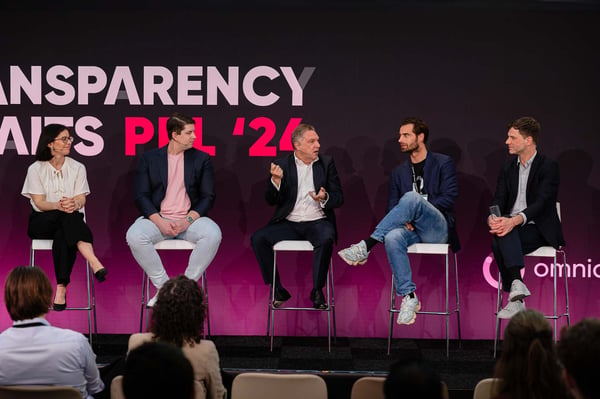
19.04.2024
Reflecting on Price Points Live: Lessons for e-commerce in 2024
It’s been a few weeks since Europe’s e-commerce and pricing event of the year, produced and hosted by Omnia Retail, took Amsterdam by storm at the modern Capital C building in early March. Our invited guests were on the...
It’s been a few weeks since Europe’s e-commerce and pricing event of the year, produced and hosted by Omnia Retail, took Amsterdam by storm at the modern Capital C building in early March. Our invited guests were on the receiving end of the knowledge and expertise of some of the e-commerce world’s greatest minds and leaders, making for a successful annual rendition of Price Points Live. On this year’s stage was Prof. Hermann Simon, the co-founder and chairman of Simon-Kucher, who was a returning speaker at Price Points Live. He is known as the world’s leading expert on pricing and growth consulting. Also on the stage was Natalie Berg, an analyst, author and podcast host; Dr Doug Mattheus, a business executive and consultant in marketing, retail and branding; Gerrie Smits, a business consultant, speaker and author, and lastly, Cor Verhoeven, Group Product Manager at Bol, specialising in pricing and assortment insights. To conclude, the warm and confident Suyin Aerts returned as our host. Whether it be transparency in pricing, marketing or e-commerce practices, our panel of speakers bring more than a century of collective knowledge and experience to the table. So, what did our guests learn and take away from each of our speakers? What can brands and retailers understand about pricing, consumer behaviour and branding? Omnia shares the insights and knowledge pertinent to e-commerce success in 2024. Natalie Berg: E-commerce author and analyst “We are living in a perpetual state of disruption, and retail is no stranger to this, but the past few years have seen unprecedented levels of volatility and uncertainty,” shared Natalie. Whether we want to call it disruption, a seismic shift or a geopolitical and socio-economic tsunami, the one mitigating force to today’s ecommerce landscape was - and still is - Covid-19. “Covid has digitised our world - the way we live, the way we shop, or the way we exercise. And when it comes to shopping, most of it is still done in a brick-and-mortar store, but the majority of these sales are digitally influenced,” shares Natalie. This has brought brands and retailers to the popular omnichannel strategy, which has become more and more common and necessary. However, Natalie predicts that retail will start moving from omnichannel to ‘unified commerce’ which is “not just about being present in those channels but centralising those operations and connecting everything in real-time,”.. We see this already taking place with the partnership that shocked the e-commerce world in 2023 when Meta and Amazon announced that Meta users can shop Amazon products without even having to exit their Instagram or Facebook apps, creating a centralised and synonymous experience for social commerce and marketplaces’ shoppers. She goes on to speak about the customer’s time and how much more precious it is going to become for e-commerce and retail leaders. “28% of Amazon purchases take place in three minutes or less,” she stated,” so if you’re not saving a customer’s time, you have to be enhancing it.” A customer’s tolerance for mediocrity or for average service or experiences is getting lower and lower, which is how the customer experience has become the new currency. “It’s about really wowing your customers. Going beyond! Disrupting the status quo.” She shares that a new phenomenon is taking place because of this refreshed focus on the customer experience: The democratisation of white-glove service. “It’s a technology that is helping brands and retailers give this level of service,”.. This includes Walmart, in the US, which will go into your home to stock your kitchen with your newly purchased groceries while other retailers will collect your returns from your house when they make delivery, allowing the customer to kill two birds with one stone. Adidas in London has installed a system called “Bring it To Me” in change rooms where, if you want an item that’s in a different colour or size, a store assistant can collect it for you without you having to leave the change room. “Tech-enabled human touch - that’s what will separate the retailer winners from the retail losers,” Natalie argues. To conclude, Natalie speaks on how the use of AI will empower both e-commerce players and customers when shopping. “In the future, we won’t know where the physical world ends and the digital one begins,” giving an eerie yet exciting conclusion. “As a brand or retailer, standing still is the most dangerous thing you can do.” Dr Doug Mattheus: Consultant and branding expert Hailing from South Africa and living in the UK is Dr Doug Mattheus whose presentation focused on the art and science of brand building. So, what makes a brand long-lasting? “It is a mix of tangible and intangible features that, if properly managed, creates influence and generates value,” says Doug. But, as we’ve seen brands rise and fall over the last few decades, what are some of the factors that have created the most valuable brands in the world, from Apple to Mercedes Benz to Walmart? Creating a brand hook The ways in which a customer can get hooked on a brand are limitless: Reflecting back to the time he received his first pair of Nike shoes in high school, the one item Doug cared about keeping just as much as the shoes themselves was the box they came in. “It wasn’t just a box - it was a Nike box.” Fast-forward to adulthood, he visited a Harrods store and witnessed customers buy empty single-use packets and bags with the Harrods logo on them. In a more recent case, the fragrance of bath bombs and body scrubs in the air at a mall or airport has become one that is synonymous with LUSH. “Just follow your nose,” says Doug. “So, what is your brand hook?” On the contrary, we see brands like The Body Shop that have struggled to keep up with digitally-native challenger brands like Drunk Elephant, Glossier and Paula’s Choice in the personal care market and is undergoing mass closures across the US and EU. Doug’s advice to brands is to create a unique hook - whether it be in the sights, smells, sounds or physical world. What’s your differentiator from competitors? A small player in the award-winning wine industry in South Africa is a vineyard called Vergenoegd Wine Estate. By a large stretch, it is not the most well-known or award-winning brand. However, this boutique vineyard did not refrain from harnessing the commercial value of organic farming. The winemakers introduced runner ducks to the vineyard, which roamed around eating worms, snails, and bugs that could be detrimental to the vines. In addition, these ducks became a tonic for families and couples with kids wanting to experience the vineyard while having something fun for children. The ducks have become a unique feature to Vergenoegd Wine Estate and a key driver of foot traffic and revenue. “This is a great example of how a small player is not being defined by its smallness and not being intimidated by bigger players.” Multiple touchpoints for customers Stemming from Natalie’s thoughts on brands having to go the extra mile to impress customers, Doug shares that there are moments of magic around us at all times, and it is up to business leaders to find and develop those moments. However, where there is ease and innovation between brands and customers (like at Nordstrom in Seattle, USA who did not want to lose their “eyeball moments” with customers from rapid digitalisation, began offering curbside pick-up so they can still have face-to-face interactions with shoppers), there are also moments of friction and time-wasting that cause frustration for customers. It’s about fine-tuning interactions and creating moments that make a brand memorable. Relevance: Do you reinvent like a butterfly or a bull? As the title suggests, brands in many verticals, but especially in fashion, personal care, sporting goods, fitness, and electronics, are faced with the rapid rise of digitally-native brands that exist to challenge the status quo. In fact, these brands, which have only known a digital world, are, in fact called “challenger brands” because of the innovative approach to design, production, supply chains, customer interactions, marketing, and everything under the e-commerce sun. According to Doug, brands who reinvent like a butterfly are those who can go with the changes and challenges in front of them with agility and resilience while those who face reinvention like a bull may be stubborn and ignorant and may face their own downfall. Cor Verhoeven: Group Product Manager at Bol. Coming from one of Europe’s largest and most successful marketplaces, Bol., Cor Verhoeven delved into pricing, specifically how Bol. tackles bad prices on the platform and what the negatives are for a marketplace or e-commerce brand. “We have 38 million items for sale, 13 million active customers, and 50,000 unique selling partners. That means almost every home in the Netherlands and Belgium has bought something from Bol.,” says Cor. With numbers like that, it’s more than possible that a marketplace would run into pricing issues. “Part of our strategy is to make Bol. an equal playing field. Our sellers must be able to make a living off what they sell on Bol. - it’s not just us that needs to do well.” So, how does a customer-centric pricing strategy fall into this? “We all work hard to make sure that the price of an item is not the reason someone doesn’t buy something on Bol.,” says Cor. “Pricing is important because it positions you in a competitive market, it establishes customer trust, and it establishes customer lifetime value. Our success is caused by growth, monetising and retaining in a loop,” explained Cor. “Our three main beliefs when it comes to pricing are High-quality deals, trustworthy and reliable prices, and competitive prices in line with the market.” The balancing act between insult pricing and best-in-market pricing is tricky and precarious, which is why Bol. judges their products on their prices. “If a product’s price is above an allowable price, we take it offline to product the customer,” Cor stated. How does Bol. decide on what is an allowable price? “We source benchmarks. If a product has a benchmark, it’s given a classification - an insult price or an allowable price - and business rules are set,” explained Cor. “When we don’t have a price benchmark, that’s when we have little control.” When Bol. doesn’t have a price benchmark for a product, they utilise their data science model to predict a price while, daily, the model is manually looking for prices to benchmark those products.” The result is a price for a product that is more aligned with the market and within the boundaries of what a customer will accept. “Of course, taking insult prices offline decreases revenue, but what we get back in return is way bigger. The seller sees increased conversion,” said Cor. Sander Roose: CEO and Founder of Omnia Retail Joining the panel was our very own CEO Sander Roose who started his keynote speech by making good on a promise. “At the last Price Points Live event, I promised that Omnia would release a new platform sometime in 2023, and the whole Omnia team is proud to have achieved that.” As a veteran in the dynamic pricing industry, with 12 years at the helm of Omnia Retail, Sander brought to the stage what he believes are the pricing elements and design principles of successful dynamic pricing. According to Sander, there are three factors to successful dynamic pricing implementations: Clearly defined objectives; securing engagement and support; and the spirit of continuous learning. “Without clear objectives, you can have a strong pricing platform, but you won’t know how to harness it,” he said. “And as the market changes, you need to be able to change your objectives.” For the second factor, pricing managers and teams need to be fully on board: “If they don’t understand how prices are calculated, they will reject the implementation as a whole.” Then, the third factor speaks to a dynamic pricing user's ability to be agile and curious: “We see that customers that used the system most intensively to make iterations with their prices get the best results.” As a result, Omnia found that two key design principles for dynamic pricing success are necessary: flexibility and transparency. “Being able to automate any pricing strategy you can think of, to facilitate all the objectives, to keep control while the system is on autopilot, and finally, making sure the users are adopting the system.” Flexibility and Transparency A pricing platform needs to be able to support a vast array of pricing objectives and strategies. “A platform needs to be able to endure various high-level objectives. Perhaps on a global level, you have a profit maximisation objective while the strategy on lower levels, such as on a per country basis, may be different,” explained Sander. “For example, if your global brand has just launched in the Netherlands, you may want to maximise market share. Then, even further down, depending on your various verticals, you may want a stock-based strategy.” Flexibility must also be present not just in pricing strategies but in data collection and the recalculation process. Using the example of a Tesla self-driving car with a blacked-out windscreen, Sander makes the point that customers of dynamic pricing still need to be able to see and understand what’s going on - even if the system is on autopilot: “If you create transparency while the system is on autopilot, you can create buy-in from internal stakeholders and facilitate learning loops.” How flexibility and transparency exist in Omnia 2.0 The culmination of these two values resulted in the Pricing Strategy Tree, developed specifically for Omnia 2.0, making strategy building and interpretation easier and faster. “The copy-and-paste feature means a large D2C brand that wants to launch in a new country can simply execute their entire pricing strategy with just a few clicks by copying the strategy in the tree from another country. This is huge for an international customer to be able to do this.” Another feature called Path Tracking allows you to visually see how your strategy came to be, step by step. “This feature helps to validate if you set up the tree how you intended to,” explained Sander. Another feature that elevates transparency is Strategy Branch Statistics which works to answer burning questions from pricing managers: ‘Which part of my strategy is most impactful? The Strategy Branch Statistics feature works to show you which business rules are doing the work to give your prices.’ An additional feature highlighting transparency is the ability to name branches within the tree. The names not only help coworkers understand what you’ve built, but they differentiate the various strategies that are at play at the same time. Strategy Branch Statistics feature works to show you which business rules are doing the work to give your prices.’ An additional feature highlighting transparency is the ability to name branches within the tree. The names not only help coworkers understand what you’ve built, but they differentiate the various strategies that are at play at the same time. AI in pricing “From private label matching, creating automated weekly reports to send to category managers, to automated insights, AI is a powerful technology that has the potential to contribute to the superpowers we offer customers,” says Sander. However, as of today, Sander believes that AI is one part of the machine and should not be considered the holy grail of price setting. “The true need is goal-based pricing,” Sander says.”AI is a means and not an end.” Sander's vision for AI in Omnia’s pricing platform sees a move from granular pricing strategies that affect the business’s objectives to a scenario where the customer sets the objective, and the Omnia platform automates and optimises prices. “We want to move more and more towards goal-based pricing in our platform. We believe the end game for price automation will be rules and AI, not just AI, and the Pricing Strategy Tree allows for a rules and AI combination.” Prof. Hermann Simon: Founder of Simon-Kucher, author As a world-renowned expert in pricing and consulting, Prof. Hermann Simon joins the panel to share what he thinks are the hidden champions in e-commerce and retail and what their successful strategies are. Specifically, the small and midsized global market leaders with a market share of above 50% and that are little known to the public. “In China, which is by the largest global exporter, 68% of the exports come from small and midsized companies, and behind this number are the hidden champions,” says Hermann. “Inside super export performance requires large companies plus a very strong mid sector. Hidden champions, not large corporations, determine whether a country really excels in global competition. Hidden champions are an untapped treasure to learn about business success.” Focus and Globalisation What characterises these companies? “The three pillars of the hidden champion’s strategy are ambition, focus, and globalisation fueled with the tools of innovation, value and price,” shares Hermann. Focusing on your product makes your market small. How does hidden champions enlarge their market? An example of successful globalisation is Karcher, the global leader in high-pressure water hoses, which began internationalisation in the 1970s slowly and then accelerated in the 90s to become the global market share leader at 70%. Other examples include Deichmann, the largest shoe retailer in Europe, which sits in 31 countries across Europe, Africa, the Middle East and the US. “The lesson here is that if you have a good product, multiply it by regional expansion,” says Hermann. Value and Price For successful companies, value comes from innovation and a closeness to the customer. But what drives innovation? The answer is different for hidden champions and the average company. Below is a pie chart where we can see how little an average company prioritises customer needs: What is the most important aspect of pricing? “It’s customer-perceived value. The willingness to pay is a mirror of perceived value, and therefore, value equals price,” explains Hermann. “Understanding, creating and communicating values are the key challenges in pricing.” Using the example of the iPhone, the cost has always been above the market average for a smartphone, yet the success of the product indicates it must obviously bring value to the customer. “Value drives price,” concludes Hermann. According to internal studies at Simon Kucher, only one-third of companies can say they have real pricing power. So, two-thirds are exposed to the sensitivities of the customer. “The result is that value-to-customer and pricing power is created by differentiating your product, changing the way customers perceive your products and your price, and changing the mindset and confidence of your own people in your company,” says Hermann. Closeness to customer “88% of hidden champions say that closeness to the customer is their biggest strength, even more than technology,” says Hermann. Simon-Kucher found that 38% of employees at hidden champion companies had regular contact with customers, while large corporations only had 8%. In retail, it is difficult to understand value perception because there are many competitors selling the same thing. This makes retail’s soft parameters, such as the store layout, service and friendliness, more helpful in understanding value perception. The challenge then becomes how do enterprises effectively communicate their value offering. “Hidden champions are true value leaders with their intense closeness to customers. They achieve a more profound understanding of a customer's needs; their continuous innovations create higher value, and they integrate customer needs and technology much better than the average company.” Gerrie Smits: Speaker and author Gerrie believes we’re getting customer-centricity all wrong. From his 25-plus years of experience in helping companies prioritise customers as well as how to deal with the changing digital world, he has found a common thread of issues: “Technology is getting in the way, companies are seeing customers as a target, and teams are siloing their responsibilities and not wanting to take on other responsibilities,” says Gerrie. “Companies are getting tech just for the sake of it, not because there is any use for it. If you’re going to invest in tech, make sure you have a competitive edge.” According to US business leaders, the number one skill a company needs to have to succeed in the digital world is empathy. “Technology is fantastic if you know what to do with it. My clients are driven by technology, and that’s not customer-centric.” When it comes to companies seeing customers as a target. “I’ve never met a company that doesn’t say they’re customer-centric - obviously,” says Gerrie. But there is a large difference between intent and action. “For example, Amazon has always said they are obsessed with understanding the customer. Yet still, they got it wrong when, in 2022, they reportedly lost $10 billion from dismal sales for their voice-activated Echo. “What brands need to understand is that there is only a small part of me that is your customer. The rest is me as a human being,” says Gerrie. “Seeing your audience as buyers, you are not fulfilling the whole potential.” Concluding Price Points Live 2024 In closing, our panel speakers joined Suyin on stage to answer a round of interesting questions and to share their final thoughts. “To drive loyalty, one must understand what your customers value,” said Natalie, while Doug shared that although pricing is vital to brand loyalty, it is not the only factor. Answering a question about how smaller players in e-commerce can grow and succeed against large enterprises, Natalie says, “It’s like Prof. Hermann said: It’s about focus. You have to know what your strengths are, and then you have to execute really well.” The world of e-commerce is set to make $6.3 billion in global sales in 2024, which is expected to increase to $8 billion in 2027. However, what’s more interesting is the amount of e-commerce users which is set to increase to 3.2 billion by 2029 - a third of the current world population. More shoppers don’t necessarily mean more revenue and sales, so it is safe to say that brands and retailers need to focus their efforts on pricing, innovation, unique marketing and frictionless experiences if they want a segment of the ever-growing pool of e-commerce users. With these insights and go-to strategies for elevating the success of brands and enterprises, Omnia is excited to see what the e-commerce landscape will be for our customers and other growing e-commerce companies. We’d like to thank all of our speakers - Natalie Berg, Dr Doug Mattheus, Prof. Hermann Simon, Gerrie Smit, Cor Verhoeven and our own Sander Roose - and our host, Suyin Aerts, for their knowledge and time spent at Price Points Live 2024. Watch keynote presentations here.
Reflecting on Price Points Live: Lessons for e-commerce in 2024
08.02.2024
Omnia’s work on company culture takes centre stage in Frankfurt, Germany
“Even if you don't manage company culture, a specific culture will emerge. Although it probably won't be the culture you envisioned,” says Omnia Retail’s COO Vanessa Verlaan who presented on the topic of building a...
“Even if you don't manage company culture, a specific culture will emerge. Although it probably won't be the culture you envisioned,” says Omnia Retail’s COO Vanessa Verlaan who presented on the topic of building a strong and healthy workplace culture at the annual World Class Workforce Transformation conference in Frankfurt, Germany in January. In sharing Omnia’s experiences, failures and successes in building a healthy company culture, Verlaan shared that it is not something that can be achieved if only one part of the company is actively trying to enforce it: “I am convinced everyone in the company should be responsible of company culture. Not just HR. It starts with the leadership team and then it can be scaled.” Covid-19 has upended how leaders interact with employees and how coworkers connect with each other," a Harvard Business Review article by Denise Lee Yohn says. "Culture has become a strategic priority with an impact on the bottom line. It can’t just be delegated and compartmentalised anymore,” says Yohn. In many cases, a company’s core values are used to attract and hire top talent and remain a calling card on a company’s website. But what happens when the experience does not match the initial expectation? “People have certain expectations when they start at a company and then when faced with the reality, they are disappointed, and then leave. That’s when companies have to rehire for the same positions. This is why core values need to be implemented from the leadership team and throughout each department,” shares Vanessa. Using this simple yet effective system, Verlaan explains how the expectation-reality gap can be closed if culture plays an unconditional role in every step of the employee life cycle: Professionals from DHL Express, Siemens, Allianz Global Investors and Celltrion Healthcare also shared presentations on upskilling, digital transformation in the workplace, employee engagement, and other interesting topics that affect teams across the continent, making this one of the most innovative and forward-thinking events dedicated to the employee experience. In addition to the case study presentation, Verlaan also participated in a roundtable discussion with professionals from other private companies which further unpacked the topic for employees at corporations, scale-ups and start-ups. In talking to one of the fellow speakers who experienced that her previous leadership team was not supportive of implementing a specific workplace culture throughout the company, Vanessa believes that there are further opportunities regarding the practices for companies that want to achieve a strong and positive corporate culture. “Culture persists only because people act in ways that uphold its principles and codes,” says a Stanford Social Innovation Review paper, echoing the sentiment that Vanessa shared in her presentation. As Omnia has grown over the years, expanded in locations and developed each department, one thing has stayed the same - its core values. “We don’t update our core values because they are the foundation. However, they have become more clear and implemented in various steps,” says Vanessa. Omnia Retail's COO Vanessa Verlaan enjoyed snapping some photos at the event with fellow speakers in between interesting discussions on company culture.
Omnia’s work on company culture takes centre stage in Frankfurt, Germany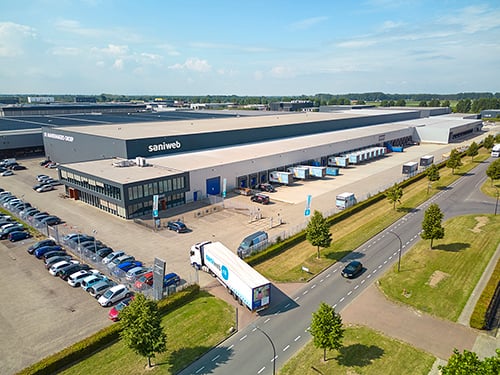
12.09.2023
Saniweb, one of the first to go live with our new pricing software
Press release Omnia Retail - September 2023 Dutch sanitary equipment retailer Saniweb is among the first to go live with a newly developed pricing software version from Omnia Retail, called Omnia 2.0. The company has...
Press release Omnia Retail - September 2023 Dutch sanitary equipment retailer Saniweb is among the first to go live with a newly developed pricing software version from Omnia Retail, called Omnia 2.0. The company has been developing pricing software for more than 10 years, and Omnia 2.0 marks a revolutionary leap in the development of such software. Saniweb has been using Omnia’s SaaS solution in dynamic pricing for several years, and transitioning to a new application offers benefits for a large business like Saniweb. With Omnia 2.0 providing a large set of features and solutions, both teams are celebrating the achievement of a successful migration. Kevin Gomers, Webshop Manager at Saniweb notes: “For several years now, Saniweb has been working together with Omnia with great satisfaction. However, our business never stands still. In the rapidly changing e-commerce landscape, you expect the utmost from your partners, including in the area of pricing tools. About 2 years ago we got in touch with Omnia’s dedicated Customer Success team, where we provided feedback on capabilities we were still missing for our use cases. They took it upon themselves and earlier this year, they presented Omnia 2.0 to us. It's a platform that allows us to translate our strategies into concrete and understandable pricing rules more easily. It's also a platform that collaborates with us, providing new insights to help us further refine our strategy. With our latest webshop, Saniweb.de, we immediately embraced the platform and quickly transformed our clear vision into a well-defined pricing policy. We are grateful to Omnia for allowing us to participate in this beta version. In addition to our German webshop, we will also be transitioning Saniweb.nl and Saniweb.be this summer." For Omnia this marks a big step, as Saniweb is among the first clients to fully transition to the new application. After merging with German pricing software provider Patagona in late 2021, Omnia was working on merging the two technologies into one new-and-improved application. This best-of-breed platform combines the strength of two pricing tools, topped with new, additional features and an improved user interface to better handle dynamic pricing strategies. Omnia is currently in the process of migrating all accounts to the new application, a process that requires planning, in order to guarantee stability in service delivery for its clients. For this reason Sander Roose, CEO of Omnia Retail notes: “ I am more than happy to see this first of many migrations to our new application being successful. This proves the additional value Omnia 2.0 provides to our clients and that we are capable to ensure a smooth transition for our customers.” In addition the combined company has stacked up its team of experts, in order to provide an even better service in dynamic pricing for retail companies. Dedicated Customer Success Managers and a team of Solution Consultants assist Omina’s clients to define and implement successful dynamic pricing strategies.
Saniweb, one of the first to go live with our new pricing software
23.03.2023
Meet the Team: Vanessa Verlaan
Name: Vanessa Verlaan Company Role: Chief Operations Officer --- What do you do at Omnia Retail? Ensuring that everyone within Omnia reaches their full potential, building a scalable and engaging company. What is your...
Name: Vanessa Verlaan Company Role: Chief Operations Officer --- What do you do at Omnia Retail? Ensuring that everyone within Omnia reaches their full potential, building a scalable and engaging company. What is your past experience, of working in your position? I have been an air traffic control trainee. It was a very impactful and insightful experience, something I still look back on with a lot of pride and pleasure. What do you like about working at Omnia Retail so far? No matter their background, specialism or seniority, I can learn from everyone within Omnia. Everyone is inspiring, and together we daily raise the bar. What are the values that drive you? Curiosity: I am interested in what drives and motivates people. If I have a different opinion than someone else, I want to understand what reasons are behind it. Not to convince them of my point of view, but to broaden my horizon. Improvement: I am always thinking of how we can do something better, smarter, or faster. In my role, this mindset comes in handy, and it matches Omnia’s Obsession with Excellence value. What are your top favorite books, podcasts, or documentaries? - Powerful by Patty McCord - The Harry Potter books - Documentaries about food and nature What do you enjoy doing when you are not working? I am currently doing a master’s in business administration. But when I’m really off, I enjoy being outdoors with my family. I have a small vegetable garden and enjoy cycling and hiking. Let’s end with your favorite quote! "Seek to understand before you seek to be understood."
Meet the Team: Vanessa Verlaan
23.03.2023
Meet the Team: Julian Bieber
Name: Julian Bieber Company Role: Working Student Backend Development --- What do you do at Omnia Retail? My main area of expertise within Omnia is the resource utilization of our databases and jvm based applications....
Name: Julian Bieber Company Role: Working Student Backend Development --- What do you do at Omnia Retail? My main area of expertise within Omnia is the resource utilization of our databases and jvm based applications. In other words, I help to ensure that the processes under the team finish in a reasonable amount of time. What do you like about working at Omnia Retail so far? I greatly enjoy working within a team that provides an environment where learning is a constant objective. Which heavily relies on our ability to confidently recover from mistakes. What are your top favorite books, podcasts, or documentaries? My favorite book series is “Stormlight Archive” by Brandon Sanderson, I am delighted by the world building. What do you enjoy doing when you are not working? In my free time I go bouldering, lift weights, go skating (inline or ice), enjoy the occasional CTF challenge and program some 3d graphics. Furthermore, I enjoy baking various cakes and cookies.
Meet the Team: Julian Bieber
23.02.2023
Meet the Team: Melissa Cron
Name: Melissa Cron Company Role: Junior Consultant --- What do you do at Omnia Retail? I’m in the Junior Consultant traineeship so I will be rotating through different functions within the company. I’m currently in the...
Name: Melissa Cron Company Role: Junior Consultant --- What do you do at Omnia Retail? I’m in the Junior Consultant traineeship so I will be rotating through different functions within the company. I’m currently in the Customer Success team where my main goal is to help our customers gain the maximum value out of Omnia. This comes with building new and existing relationships, understanding our customers’ pricing needs, and translating them into our tool. What is something people in your industry have to deal with that you want to fix? Nowadays the internet is saturated with retailers and brands selling online which, as a consumer, can overwhelm you with the number of choices available. Now imagine this from the seller's perspective: they need to monitor their competitors and quickly adjust their own prices based on all this information while taking into account their own pricing strategies/goals. Without a tool like Omnia, this can become an extremely tedious, time-consuming, and manually-intensive task. What is your past experience, of working in your position? Regarding my educational background, I hold a BSc in Economics and Business Economics from Maastricht University, and an MSc in Strategic Management from Erasmus University Rotterdam. After my studies and before joining Omnia, I moved back to Thailand and worked as a Customer Service Officer in the automotive department of a microelectronics manufacturing company. What do you like about working at Omnia Retail so far? Each day presents a different challenge so there is always something new to learn. I feel that the bar is set very high within the company, which encourages me to do my best. The company values are something important to me and they really are instilled in everything we do. Last but definitely not least, my colleagues are great; they’re a fun bunch and always there to lend a hand or support when needed. What are the values that drive you? Honesty, empathy, integrity, and kindness What are your top favorite books, podcasts, or documentaries? - The Twilight Saga - The Surgeon: A Rizzoli & Isles Novel - Favorite documentary: Inside Job What do you enjoy doing when you are not working? I have recently taken up baking which is quite fun (although the cost of ingredients nowadays has me questioning this hobby). Besides that, you will probably find me on the couch looking online at the many restaurants in Amsterdam I would like to try, reading non-fiction books, or watching TV shows (usually reality TV shows or The Office on repeat most of the time). My resolution for this year is to be more physically active, but that is still a WIP. Let’s end with your favorite quote! “You miss 100% of the shots you don’t take” - Wayne Gretzky
Meet the Team: Melissa Cron
23.02.2023
Meet the Team: Anas Anjaria
Name: Anas Anjaria Company Role: Backend Engineer --- What do you do at Omnia Retail? I work on new features, product stability, streamline development process etc. What do you like about working at Omnia Retail so far?...
Name: Anas Anjaria Company Role: Backend Engineer --- What do you do at Omnia Retail? I work on new features, product stability, streamline development process etc. What do you like about working at Omnia Retail so far? I love the working culture, Munchie-mittwoch, and my colleagues here. Whenever I am stuck somewhere, there is always someone to help me out. Apart from work, I meet some of my colleagues and we spend time together (for instance cooking together). What are the values that drive you? Working culture, good development processes, opportunity to work on new stuff & challenges. What do you enjoy doing when you are not working? I share my experience via blogging.
Meet the Team: Anas Anjaria
26.01.2023
Meet the Team: Jolene Ekuam
Name: Jolene Ekuam Company Role: Junior Consultant --- What do you do at Omnia Retail? I am undertaking the traineeship program at Omnia. Currently I am part of the sales team, working as a business development...
Name: Jolene Ekuam Company Role: Junior Consultant --- What do you do at Omnia Retail? I am undertaking the traineeship program at Omnia. Currently I am part of the sales team, working as a business development representative. My day to day responsibilities involve vetting the leads that we receive from our marketing team's efforts and generating new business from right fit prospects. What is something people in your industry have to deal with that you want to fix? I feel quite strongly about the topic of closing the gender gap in Tech. Future solutions are being developed by tech businesses, which are progressively influencing the course of humanity. The issue is that there are not enough women in these positions, especially in senior leadership positions, which poses a threat to exclude half of the world's population from discussions that will determine our shared destiny. I hope to one day influence and encourage young women like myself to venture into the tech industry. What is your past experience, of working in your position? My educational background is in economics and management, I graduated with a Bachelor in Business from Monash University in South Africa. Thereafter I moved to the Netherlands and pursued my Master studies at the Maastricht School of Management. Alongside my studies, I also did an internship at a health-tech startup based in Delft. What do you like about working at Omnia Retail so far? I really like the company culture and my colleagues at Omnia. We are a very diverse bunch and we embrace each other's diversity. I enjoy the flexible work arrangement whereby one can choose whether to work from home or from our office at Amstel. What are the values that drive you? Empathy, Self-reflection, Integrity and Loyalty What are your top favorite books, podcasts, or documentaries? Books: Martha Beck – The Way of Integrity Podcast: Oprah's ‘Super Soul’ podcast (for inspiration) & Adelle Onyango’s ‘Legally clueless’ (for relatability and a good laugh) Documentary: Beyonce's Homecoming (this interview would not be complete if I did not find a way to include Queen B!) What do you enjoy doing when you are not working? I love seeing and experiencing new things, I love to travel and explore new places and meet new faces. I am always open to trying out new activities or new cuisines whenever I can. I love to experiment in the kitchen with different recipes and soon I hope to start taking acting classes which I used to love when I was younger. Let’s end with your favorite quote! “Knowledge has to be improved, challenged and increased constantly, or it vanishes.” - Peter Drucker.
Meet the Team: Jolene Ekuam
26.01.2023
Meet the Team: Yuqiang Liu
Name: Yuqiang Liu Company Role: Backend Developer --- What do you do at Omnia Retail? The team and I maintain the retrieving process of offers from web, ensure stability and accuracy. What is something people in your...
Name: Yuqiang Liu Company Role: Backend Developer --- What do you do at Omnia Retail? The team and I maintain the retrieving process of offers from web, ensure stability and accuracy. What is something people in your industry have to deal with that you want to fix? It will help reduce communication cost to have up-to-date visualized structures of projects, microservices, pipeline automations, etc. Graphviz is strongly recommended What do you like about working at Omnia Retail so far? Besides interesting and challenging work, I like the great people here and the culture of free-to-be-you-and-me. Not only friendly and welcoming, I also feel close like family. What are the values that drive you? Becoming a better me every day. What are your top favorite books, podcasts, or documentaries? 1984 – George Orwell The unbearable lightness of being – Milan Kundera The little prince – Antoine de Saint-Exupéry What do you enjoy doing when you are not working? Cycling., the passion I have found again in Omnia. Encouraged by other cycling lovers in Omnia, I’m going to participate in a bike marathon this year, over 200 km. Yeah, good luck to me :-) Let’s end with your favorite quote! “Plato is dear to me, but dearer still is truth.” – Aristotle
Meet the Team: Yuqiang Liu
22.12.2022
Meet the Team: Melissa Castelyn
Name: Melissa Castelyn Company Role: Financial Controller --- What do you do at Omnia Retail? I am responsible for most of the operational work in the finance department. This stretches from debtors and creditors...
Name: Melissa Castelyn Company Role: Financial Controller --- What do you do at Omnia Retail? I am responsible for most of the operational work in the finance department. This stretches from debtors and creditors control to month-end closing, year-end closing, reporting, invoicing, payments and any other financial related items that the business needs. What is something people in your industry have to deal with that you want to fix? Finance work is historically quite manual, but with tools like PowerBI and Python, I believe the way finance departments run can be much more automated. I would like to find and implement these ways and tools that are available and transform the way finance works. I also feel strongly about mitigating mental-load in the workplace. There is a lot of research on how the way of work can affect your mental load, and in turn your stress levels. By using better ways of working, communication and task-management in departments and across whole businesses, this can be reduced significantly. There really are some brilliant schools of thought on this topic, as well as very innovative software and tools that can be used. What is your past experience, of working in your position? I am a South African Chartered Accountant (=bAcc degree+masters+3 years articles+board exams). My articles were completed at Africa’s biggest retailer, a corporate company called Shoprite Checkers. During those 3 years I moved through the whole company, seeing almost every department. I stayed on for another 3 years in various departments, after which I made the move to the Netherlands, starting off at a media start-up for 2 years before landing at Omnia. What do you like about working at Omnia Retail so far? The way of working and culture really makes it a great place to work. Everyone is given full trust from day one and this really creates a sense of ownership. I enjoy the freedom that we are given to be who we are and fulfil our roles in ways that work best for us as individuals. What are the values that drive you? Self-reflection, honesty, trust, loyalty, ingenuity. What are your top favorite books, podcasts, or documentaries? A fine balance - Rohinton Mistry Human Kind: A Hopeful history - Rutger Bregman Culture Map – Erin Meyer What do you enjoy doing when you are not working? I love travelling, especially to places by the sea, so that I can have a daily swim. When in Amsterdam, I enjoy a lot of yoga, dinners with friends, going to the theatre and live performances. I am also learning Spanish as an extra language and have weekly online tutor classes. Let’s end with your favorite quote! “If you think you are beaten, you are. If you think you dare not, you don’t. If you’d like to win, but you think you can’t, it’s almost certain you won’t. Life’s battles don’t always go to the stronger or faster man. But sooner or later, the man who wins is the man who thinks he can.” - Walter D. Wintle
Meet the Team: Melissa Castelyn
22.12.2022
As we head into 2023, Omnia reflects on a successful year behind us
Like any good sports team, Omnia takes a look at its wins and losses that shaped the year. With the acquisition of Patagona in 2021, this year would be the first full year as a combined company, bringing challenges and...
Like any good sports team, Omnia takes a look at its wins and losses that shaped the year. With the acquisition of Patagona in 2021, this year would be the first full year as a combined company, bringing challenges and triumphs. As the team enjoys the festive season and cooler weather, Omnia takes a look at some of the milestones and goals achieved that made 2022 a successful year. In addition, we’ll be sharing some of our best performing thought leadership articles that helped solidify our name as leaders in pricing and retail knowledge in Europe. Team and customer events furthered our vision to be market leaders in pricing solutions In March, the team met in Darmstadt to reveal the new logo to the entire company. The new logo, which is a combination of the previous Omnia Retail and Patagona logos, represents the symbolic union of the two teams after Omnia acquired the company in 2021. Thereafter, everyone enjoyed a team bonding exercise at Climbing Forest Darmstadt. Customer events were of utmost importance in 2022 to deepen our relationship with our current customers; to answer any questions they may have, and to establish new business contacts. This year’s e-commerce events included sharing our new logo and stand design with the public and getting to know some new international fairs too. In June, Omnia Retail was in London for Shoptalk Europe, followed by Webwinkel Vakdagen in Utrecht at the end of the month, as well as K5 Future Conference in Berlin. In September, there was DMEXCO, which is a digital marketing expo and conference in Cologne, followed by the huge Hardware Fair in Cologne, where we have been partof the tailored e-commerce expo for two days. The event highlight of the year for Omnia was when we hosted our very own event, Price Points Live, which saw the best minds in pricing, consumer psychology, e-commerce, inflation, and sustainability in e-commerce come together to share their knowledge for our customers. Taking place in Amsterdam in October, it was a chance to provide our customers with detailed and quality knowledge to improve their businesses and teams. It was also the first time that the Amsterdam and Darmstadt customers were interacting and mingling together under the Omnia name. In addition, the event put us in the category of thought leaders who drive success with data, support and insights for our customers. Review the full video of the event here. The team welcomed new faces from six new countries in 2022 One of our core values is “free to be you and me”, which promotes diversity, inclusion, understanding and acceptance of all people, with no judgment based on gender, race, nationality or any other factor, which is why having team members from various backgrounds has always been important. By the end of 2022, Omnia totalled employees from 26 countries around the world, up from 20 in 2021. Females in line management positions also increased, growing to 27% in 2022 from 9% in the previous year. In addition, women in leadership positions increased to 33%, up from 17%. Customer feedback showed a positive experience Omnia received 10 new reviews on G2, one of the world’s most well-known aggregators for software services, with an average score 8.3 out of 10. Reviewing Omnia’s best articles for 2022 Our content team spent many hours and minutes researching trends and topics that would be helpful to our customers, as well as other entrepreneurs, retail leaders and those keen on expanding their knowledge in pricing. Here are our top 10 articles for 2022: The Strategies Behind Amazon’s Success Price: The Most Important P in the Marketing Mix Understanding and Using Market Penetration Strategies How Odd Even Pricing Helps You Utilize The Power of Psychology What is Bundle Pricing? For the Bicycle Industry, 2022 Creates a Continued Supply Chain Crisis How Pricing Influences the Consumer Decision Making Process Adjusting your Pricing Strategy to the Product Life Cycle Stage How Does Amazon’s Search Algorithm Work? What is MAP Pricing?
As we head into 2023, Omnia reflects on a successful year behind us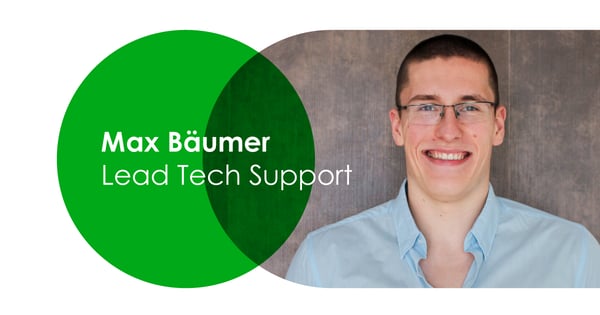
22.12.2022
Meet the Team: Max Bäumer
Name: Max Bäumer Company Role: Team Lead Technical Support --- What do you do at Omnia Retail? I manage the Technical Support team. What is something people in your industry have to deal with that you want to fix?...
Name: Max Bäumer Company Role: Team Lead Technical Support --- What do you do at Omnia Retail? I manage the Technical Support team. What is something people in your industry have to deal with that you want to fix? Technical Support is usually the first contact point, when customers are facing issues. From time to time, customers are emotionally triggered during this conversation. In general this does not help solving the underlying issue faster, even worse, it affects us mentally aswell. In general, I would prefer when anyone in the industry is treated with the respect one would like to receive themselves. What is your past experience, of working in your position? Don’t really have any. I kind of tripped, fell and landed at Patagona (now Omnia). And now look where I am :) What do you like about working at Omnia Retail so far? The people are the most important part. Even after Covid forced most people into home office, the connection remained strong. I’m happy to call most people not only my coworkers, but actually friends. I think having this many foodies around, is only one of the reasons. Besides, I always enjoyed the freedom to try out new things and learn new skills. What are the values that drive you? Food and good sleep. Besides, perhaps respect, compassion / empathy and kindness. What are your top favorite books, podcasts, or documentaries? Eragon, Qualityland and The Kangaroo Chronicles. What do you enjoy doing when you are not working? Eating food big time and doing lots of sports because of the previous point. Let’s end with your favorite quote! “Hinten kackt die Ente” (My Dad)
Meet the Team: Max Bäumer
24.11.2022
Meet the Team: Manuel Zahn
Name: Manuel Zahn Company Role: Team Lead of Team Constellation --- What do you do at Omnia Retail? My team and I handle the planning, implementation, and acceleration of dataflows in our pricing platform. Every day, we...
Name: Manuel Zahn Company Role: Team Lead of Team Constellation --- What do you do at Omnia Retail? My team and I handle the planning, implementation, and acceleration of dataflows in our pricing platform. Every day, we process hundreds of millions of data points, such as offers and price recommendations. What is something people in your industry have to deal with that you want to fix? Traditionally, in the software industry, we have to manage infrastructure, which distracts from focusing on the actual product. I encourage you to consider serverless architectures, where the cloud provider takes care of the infrastructure, and you can save time and invest it in your core product. What is your past experience, of working in your position? I studied computer science and economics at TU Darmstadt. During that time I worked as a research assistant in the Multimedia Communications Lab (KOM) in Darmstadt. There my main focus was researching and lowering the energy consumption in smartphones. I’ve also had a six month internship at NEC Laboratories Europe, where I researched about automated configuration of cloud-based IoT platforms. Soon I joined Omnia as a working student in 2014 :) What do you like about working at Omnia Retail so far? What I like most about Omnia Retail are the awesome people. There is always a friendly and constructive atmosphere which is the baseline for growing. Due to the large variety of tasks, the everyday work never gets boring. What are the values that drive you? Curiosity and Creativity What are your top favorite books, podcasts, or documentaries? - Methodisch Inkorrekt (Podcast) - Geschichten aus der Geschichte (Podcast) - A Journey Beyond (Documentary) What do you enjoy doing when you are not working? I’m passionate about cycling. In every season. I’m a fan of bikepacking. This means bicycle adventures on a Gravel Bike with minimum baggage plus tent. So far I cycled through the Alps, Scandinavia and Spain/France. Who is in for the next level of adventure? Let’s end with your favorite quote! “The Sky's the Limit” by Captain Picard in the final episode of Star Trek TNG
Meet the Team: Manuel Zahn
24.11.2022
Meet the Team: Elisa Mozena
Name: Elisa Mozena Company Role: Senior Corporate Recruiter --- What do you do at Omnia Retail? As a Sr Corporate Recruiter, I hire new Omnians to help further build our teams. What is something people in your industry...
Name: Elisa Mozena Company Role: Senior Corporate Recruiter --- What do you do at Omnia Retail? As a Sr Corporate Recruiter, I hire new Omnians to help further build our teams. What is something people in your industry have to deal with that you want to fix? I know recruiters sometimes have a bad reputation and this is one of the goals I have in my career - I want to have a positive impact on every candidate I meet with, independently of the interview outcome. We’ve all been candidates once, including myself, and I know how stressful and time consuming looking for a new job can be. What is your past experience, of working in your position? Before becoming a recruiter I worked for a time at the Finance department of a Hotel (it was not for me), and before that I was a Chef. I worked in Michelin-star restaurants and came quite a long way but at certain point I wanted to develop intellectually and decided to go back to study. I followed a BA degree in Amsterdam and as part of it I did an internship in recruitment. I fell in love with recruitment and have been in this field ever since. What do you like about working at Omnia Retail so far? The people - I love working with inspiring, smart and driven people. A players attract A players ;) What are the values that drive you? I link to think I match with all of our values, but Obsession with Excellence comes first. It’s different than being a perfectionist. There is no such a thing as “perfect”. Obsession with Excellence is about improving, always doing your best, and having high standards. What are your top favorite books, podcasts, or documentaries? I listen to Brazilian Podcasts, it’s the easiest way I have found to stay in touch with my culture. Regarding books, my no1 will always be Harry Potter, All the Light We Cannot See, The Outsider. What do you enjoy doing when you are not working? When I’m not working I’m doing crochet, spending time outdoors, or taking dance classes. Let’s end with your favorite quote! A smooth sea never made a skilled sailor (it’s actually a Brazilian quote).
Meet the Team: Elisa Mozena15.11.2022
Price Points Live: Inflation is set to decrease to 2% in 2024
With inflation being the number one issue on the minds of business owners, economists and consumers alike, it was no surprise that the topic was first on the list during Omnia’s annual Price Points Live event, which...
With inflation being the number one issue on the minds of business owners, economists and consumers alike, it was no surprise that the topic was first on the list during Omnia’s annual Price Points Live event, which took place in Amsterdam a few weeks ago. In a series of articles, we will share an in-depth view of the event’s topics, starting with inflation, and then including consumer behaviour and psychology, sustainability in e-commerce, and pricing and profit. Sharing her knowledge and predictions regarding current and future inflationary trends, Aline Schuiling, who is the Senior Economist Eurozone at Group Economics of ABN AMRO Bank, explained how the ECB (European Central Bank) predicts and calculates inflation and what the EU can expect in the coming years. Trajectories for inflation show a confident decrease Aline’s inflation predictions for the next few years show that Europe can expect a decline in inflation and will rest at 2% again by 2024. This prediction is supported by a study conducted by Statista, which shows that inflation will remain at 2% from 2024 - 2027. In addition to a positive outlook regarding inflation, GDP growth for 2022 had a better result than expected: Annual GDP growth is expected to sit at 3.1% and in 2024, it’s expected to sit at 1.9% growth. Thanks to a resurgence of tourism, the easing of bottlenecked supply chains and the lowering of energy and food prices, these short-to-medium term projections should instil more confidence in the markets and the economy. When calculating inflation, Aline assures that numbers are derived from comparisons to the previous year. “For example, in the first few months of the pandemic in 2020, inflation was actually in the negative. Then you see prices start to go up later on and then inflation starts to increase. Why? Because it is compared to the year before when inflation was actually in the negative,” says Aline. In the table below, we see Aline’s point, in addition to the contribution of food and energy price surges, as mentioned above. Despite support from governments, recessions in the EU and UK are likely At its worst time, inflation in the EU reached 10.1%, which has had a detrimental effect on consumer spending and behaviour, confidence in the markets and overall GDP growth. Due to this, a number of European governments have tucked into their coffers to support economies (households and businesses) affected by the energy crisis. Notably, Germany leads by spending 6.5% of its GDP on energy support, while the Netherlands has spent 4.8% and Italy has spent 3.3%. France has capped the prices of gas and electricity to 6%. Despite these efforts, Aline reports that consumer confidence has been the lowest ever since the financial crash of 2007 - 2008: Source:Source: Refinitiv, ABN AMRO Group Economics Inflation & central banks by Aline Schuiling, Price Points Live, 13.10.2022 In addition, a slight recession is expected in the third and fourth quarters of 2022 and the first quarter of 2023 in the EU and UK, despite decreasing inflation. However, the US will experience a slightly stronger economy as well as a larger bump up in 2023. Source: Refinitiv, ABN AMRO Group Economics Inflation & central banks by Aline Schuiling, Price Points Live, 13.10.2022 For price setting behaviour, these predictions matter Although some of these expectations don’t look overwhelmingly positive, central banks, businesses, retailers and e-commerce players rely on these predictions for setting prices in the near and far future. This, in turn, affects the consumer. It is vital for all businesses to be aware of these changes and on top of what the ECB expects for the Eurozone economy. Retailers who have a quick and confident response to high inflation not only survive but thrive in the years to follow: “The most resilient retailers were able to drive 11% annual growth in total return to shareholders”, McKinsey reports, between the years of the Great Recession of 2007 - 2009. This number was five times higher than their peers through to 2018. Within e-commerce and retail, there is an opportunity here to test one’s robustness. After all, if brands and retailers want to ensure long-term success, they must develop sound strategies for difficult periods and inflationary challenges. The entire recording of the event can be reviewed here.
Price Points Live: Inflation is set to decrease to 2% in 2024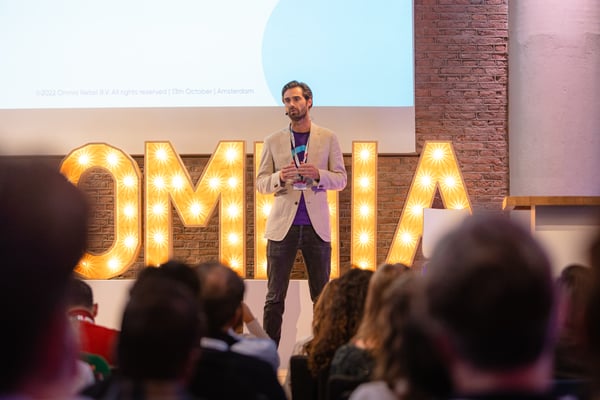
27.10.2022
E-commerce and pricing take centre stage at Price Points Live
Europe’s greatest minds in e-commerce, pricing, retail, and consumer psychology converged on Saint Olof’s Chapel in Amsterdam on Thursday 13 October 2022 to share their knowledge in an exciting panel discussion event,...
Europe’s greatest minds in e-commerce, pricing, retail, and consumer psychology converged on Saint Olof’s Chapel in Amsterdam on Thursday 13 October 2022 to share their knowledge in an exciting panel discussion event, hosted by Omnia Retail. As the leaders of pricing software across Europe, creating the annual event for Omnia’s clients allows a way for each client to remain on top of their pricing strategies, e-commerce trends, as well as the ability to meet consumer demands. Find the full event recording below. Event Recording The event included six keynote speakers from various sectors in retail who shared insights and valuable knowledge in economics, inflation, e-commerce, pricing and consumer psychology. The speakers included Professor Hermann Simon, the leading pricing consultant who founded Simon-Kucher & Partners, and the author of over 40 books on pricing and business. David Sloff, the Commercial Director of Northern Europe at Diageo; Dr Heleen Buldeo Rai, a researcher at the Université Gustave Eiffel in Paris; Patrick Fagan and Dan Thwaites, the founders of Capuchin Behavioural Science; and Aline Schuiling who is Senior Economist Eurozone at Group Economics of ABN AMRO Bank. The event was moderated by Suyin Aerts and Omnia Retail’s Founder and CEO Sander Roose took to the stage to welcome event attendees and also took part in the concluding roundtable discussion at the end of the event. Aline Schuiling discusses current and future inflation This year, inflation across Europe has been the top issue on the minds of ordinary citizens, making it an important topic to delve into when discussing pricing strategies. Schuiling, who, as mentioned above, specialises in economics, shared an eye-opening statistic: “In Europe, energy prices are 40% higher than they were a year ago.” However, European consumers have not been left alone to deal with price increases. ”The good news is that European governments are contributing to offset the cost of gas to protect households and businesses,” says Schuiling, with Germany in the lead contributing 6.5% of their GDP. “Earlier this year, France already capped the cost of electricity and gas, and although their inflation is not zero, this shows you how governments can help,” says Schuiling. Despite high inflation being the order of the day today, Schuiling and her team of economists have positive predictions for the next two years: “From now and until 2024, the European Central Bank aims to anchor inflation at 2%, which is a steady decline from 10.1% in 2022.” How retailers can use consumer psychology to increase sales Speaking on the intersection of data, consumer psychology and e-commerce, Dan Thwaites and Patrick Fagan, co-founders of Capuchin Behavioural Science, took the stage to share how they help clients achieve commercial goals by influencing the minds of consumers. To showcase how specific, data-driven and science-backed their work is, Patrick shared how people who have a shorter name or nickname are viewed as more cheerful and popular. Another study they shared on how you can manipulate perceptions of yourself is wearing glasses, as studies have shown that people who wear glasses are viewed as being smarter and more reliable. So, how do these behavioural effects result in increased profits for brands? “Guiness, the beer brand, saw an increase of sales by 25% just by creating the Guiness beer glass and having large cardboard signage in the aisles. These act as slight nudges to influence a consumer’s purchase behaviour,” says Patrick.”Even products that are the colour orange see an increase in sales around Halloween time, like Reese’s peanut butter cups, because people are seeing orange everywhere and this acts as a subtle nudge,” he continues. “A study was done to show the influence of incidental cues on our perceptions and behaviours when a bottle store played different kinds of music while a consumer looked for wine. The amount spent on wine was more than double when classical music was played versus pop music,” Patrick shared. Other tactics to increase sales is to add phrases like “special purchase” or “everyday low price” next to the price to insinuate that this is a good deal. Capuchin’s strategies are based upon proven studies that have shown how consumers can spend more or less under certain conditions. There is empirical evidence for an intertemporal substitution effect, where people spend more money today because they expect goods to be more expensive tomorrow. Another study was shared on the anchoring effect which shows how prices may look more attractive when placed to something more expensive. For example, a luxury car is seen as more affordable when placed next to a luxury yacht. Another study based on the decoy effect allows retailers to place a decoy product that’s expensive next to the product they actually want to sell. Suddenly, the price of that product doesn’t seem so high when compared to the decoy. Lastly, an interesting study on numerical cognition shows how consumers see prices with lots of zeros as being higher. So, retailers could price a product at €4,655.00 instead of €4,000.00 and the lower price with the zeros may be perceived as being higher. Can e-commerce become fully sustainable? Dr Heleen Buldeo Rai, a researcher at the Universite ́ Gustave Eiffel in Paris, is interested in sustainable e-commerce and urban logistics and how online retail can work toward a greener industry in the future. Her keynote included 10 insights that retailers and brands would find interesting. “By 2025, about 30-50% of everything we buy will be done online. And so, it is time for us to look at ways to organise the e-commerce supply chain in a more sustainable way,” says Dr Buldeo Rai. “Online shopping produces 4x less carbon dioxide emissions versus traditional store shopping,” says the researcher, but home delivery still remains the most impactful part of the e-commerce journey on the environment, meaning retailers should consider offering new delivery options like collection points to lower their environmental impact. Dr Rai and her team found through an experiment that 59% of online shoppers would opt for a slower delivery method if the website had a “did you know” information box sharing that if they are given more time to group parcels, the environmental impact of delivering this parcel will be lower. Brand and retailers share more than they think, and shouldn’t be arguing with one another, says David Sloff As the Commercial Director of Northern Europe at Diageo, David explored the different perspectives a brand and retailer can have on the term “price”. He opened up about the complexity of different definitions of pricing, depending on the lens you are using to look at pricing. In his role as a brand owner for various consumer brands at P&G, such as Ariel and Braun, he stresses that it’s important to distinguish which price we are taking and, secondly, what goals one has when setting prices. On the topic of how brands should approach the Goliath that is Amazon, David recommends that brands shouldn’t fight the “Amazon-machine”, but sit and write down a strategy on how to control variables and keep them all consistent and fair with other retailers. Lastly, when talking about the intersection between brands and retailers, David says it’s all about the question of “How much value do we share?” And now, more specifically, “How much of the inflation do we share? We see more fights between brands and retailers but it's so important not to forget the goal of serving consumers,” he says. More good advice from David included focusing on value creation thinking in the mid-to-long term. Prof Hermann Simon explains the importance of goal-setting and true profit The last keynote speaker to present was Professor Herman Simon who is the Founder of Simon-Kucher & Partners and is the leading pricing consultant. He began by posing the question, “What is true profit?” In addition to defining it as the money made after all overheads, debts and contractual obligations are paid, Prof Simon goes on to share what the true profits are of food retailers, e-commerce platforms like Amazon, and tech companies. True profit for food retailers remained between 2-3%, while tech companies like Apple had profits in the mid-20 percentages and up. The point, for Prof Simon, is that the gap between “winners and losers” is growing “as some companies are getting it right and some aren’t” when it comes to choosing the right goals. According to Prof Simon, “profit orientation is the only meaningful goal because it is the only one that observes both the market side and the cost side. Elimination of profit killers is the most effective way to profit improvement. This especially applies to price wars and overcapacities, since they are the most dangerous profit.” When a profit driver is improved by 1%, Prof Simon surmises that the result is that the profit multiplier of price is 10, the cost is 6, for volume is 4. On the topic of inflation, Prof Simon says that it is essentially the decreasing value of money and for companies to survive and grow, they need to “get the cash in as quickly as possible and then spend it as quickly as possible.” The event concluded with all speakers joining Suyin and Sander on stage for further discussion on some of the key points made. “We know that these are very challenging economic times, but the exciting thing is that we really believe that pricing matters more than ever and can really help you win in the market, and we’re happy that you’ve chosen Omnia as your partner to achieve that,” concludes Sander. Stay posted for more business and commerce content or follow us on our LinkedIn page!
E-commerce and pricing take centre stage at Price Points Live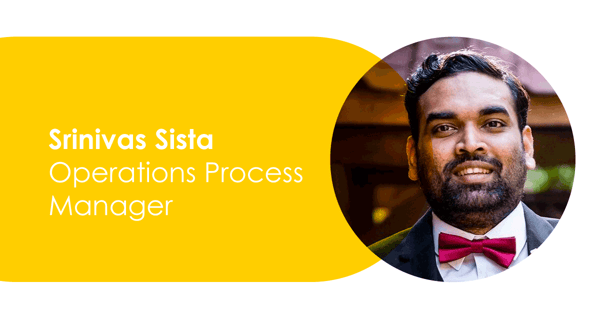
27.10.2022
Meet the Team: Srinivas
Name: Srinivas Sista Company Role: Operations Process Manager --- What do you do at Omnia Retail? I am a part of the Operations team and work on projects that need processes and structure. What is your past experience,...
Name: Srinivas Sista Company Role: Operations Process Manager --- What do you do at Omnia Retail? I am a part of the Operations team and work on projects that need processes and structure. What is your past experience, of working in your position? I started my career as an analyst and then worked in ecommerce startups in SouthEast Asia for five years mainly in the Operations teams including 3 years as a cofounder of an ecommerce startup. After I moved to the Netherlands I worked in a social media agency, founded a micro mobility startup, worked as a freelancer in a content team, a postman and a sales development representative before joining Omnia. What do you like about working at Omnia Retail so far? I like the work culture - the culture of feedback and being able to speak openly yet professionally. What are the values that drive you? Mutual respect and the right to find happiness. What are your top favorite books, podcasts, or documentaries? TED Talks, Books by Aldous Huxley ( essays) and mostly fiction. BBC Earth as a documentary is great. What do you enjoy doing when you are not working? Walk my dog, spend time with family or play chess.
Meet the Team: Srinivas
25.08.2022
How we collect vital data for our customers (Part 2)
In recent years, data has surpassed oil in being the most valuable commodity on Earth. In just the four years between 2016 - 2020, the data market in the US grew in value from €129 billion to €211 billion. In a...
In recent years, data has surpassed oil in being the most valuable commodity on Earth. In just the four years between 2016 - 2020, the data market in the US grew in value from €129 billion to €211 billion. In a nutshell, data is how we understand something on an intricate level without bias and subjectivity, and within the world of e-commerce and retail, it is the cog in the machine that’s indispensable. In this four-part series, Omnia shares the process a potential customer will enter into once they decide to choose our pricing software solutions. In early August, we shared part one, which included the technical pre-requirements a customer needs to begin their pricing journey. Today, we are delving into how we collect data as one of the initial and most vital parts of the process. Where does the data come from? Speaking to David Gengenbach, a developer at Omnia, and Berend van Niekerk, Omnia’s Head of Product, it is impressive to see how much time and attention goes into getting detailed - and most importantly, correct - data for the pricing strategies of customers. There are two types of data that provides everything needed to reprice an entire online store or marketplace: Internal data and market data. Internal data Internal data includes information that comes directly from the customer. “Everything from sales data, purchase prices, stock data, performance measures, information on champion and non-champion products, new and old products, categories, seasonal products… it’s important to provide as much information as possible,” says Berend. Insights from Google Analytics and additional plugins can also be used to understand where traffic is going and which products are most popular. If your online store is using Shopify, Magento, Shopware, Plentymarkets or JTL, you can make use of our "Pricemonitor plugins" which you can find in the respective app store. The plugin allows you to connect easily to our database, without having to involve your IT department. After the initial data is connected to Omnia, the customer has the ability to modify all information within the tool. They can clean the data, change the formatting and add additional logic and calculations to the data. In this way the user can do the required modifications, without having to bother their IT department. “There’s less hassle for the customer this way,” says Berend. External data Market data, or external data, comes in two categories, according to Berend: "Data from marketplaces and comparison websites, like Google or Amazon, and data that is directly collected from competitors' websites." Typically our customers use a combination of both. The data from marketplaces and comparison websites will provide a good view of all competitors selling the product, where data that is scraped directly from your competitors will ensure you the most up-to-date and complete overview of your main competitors. The data from marketplaces and comparison websites includes highest and lowest pieces, reviews, delivery times and many other features. How do we ensure data quality? Vetting data is also part of the scraping and collection process. David, who specialises in competitor data, shares that there are four aspects to data quality: Finding the right competitor prices by ensuring that the competitor prices are for the exact same product as you are selling. For example, if we were checking the prices on Google Shopping for the iPhone 13, we would not consider the prices for second hand iPhones, where many websites advertise on Google. These prices would not be included. Within those prices, making sure that we identify any outliers. For example, perhaps Google grouped the products incorrectly and there is a very high or low price in the grouping. The timeliness of the data: Making sure that we update the prices on a particular schedule, so that we collect any price updates quickly. Data quantity plays a role too. If we conduct a product search, and there are 10% less products today compared to yesterday, we need to investigate what may be causing that. Superior pricing strategies are informed by our data Within the retail and e-commerce landscape, there is no successful web shop or marketplace without a comprehensive dynamic pricing strategy. And, in turn, there is no complete dynamic pricing strategy without data. However, it is up to the customer how much of their internal data they are willing to give. The more data we have, the more we can create a profitable and competitive pricing strategy for each customer. Stay posted for our next part of the series on what customers can do with this data.
How we collect vital data for our customers (Part 2)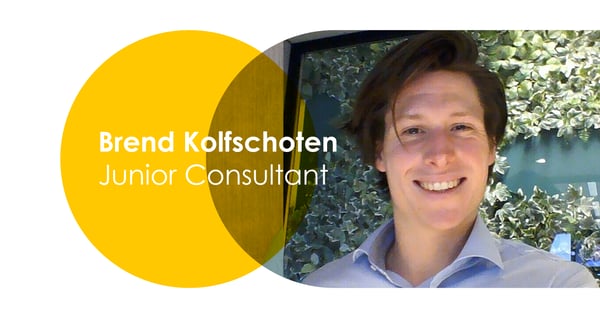
24.08.2022
Meet the Team: Brend
Name: Brend Kolfschoten Company Role: Junior Consultant --- What do you do at Omnia Retail? Enjoying a lot what I’m doing within the company and getting to learn a lot while doing it. Within Customer Success team I’m a...
Name: Brend Kolfschoten Company Role: Junior Consultant --- What do you do at Omnia Retail? Enjoying a lot what I’m doing within the company and getting to learn a lot while doing it. Within Customer Success team I’m a supportive partner for all the companies connected to Omnia. Making sure that everyone gets the most out of the system. What is something people in your industry have to deal with that you want to fix? Creating an environment where there is room for creativity and a lot of testing. Due to the growth of online stores, Dynamic Pricing became more relevant than ever. Making it possible for companies to change prices on a more regular base. By taking away any restrictions the data or any analysis could pose. What is your past experience, of working in your position? Before starting at Omnia I’ve finished a master degree in Data Driven Business. After finishing the degree I’ve worked on forecasting methods in which Dynamic Pricing would be one of the key factors for determining the results. While studying I have built up experience in Customer success, Customer support, and sales within several different industries. What do you like about working at Omnia Retail so far? Every day is completely different. Making it an interesting work environment where there are a lot of things to learn. Working in a really diverse team but having the drivers for working at Omnia. Different members within the teams all have their own field of knowledge making it a place where we could learn from each other. Noticing also that I’m working with smart people all around me. What are the values that drive you? Empathy, Courage, Determination and Curiosity What are your top favorite books, podcasts, or documentaries? - Boook:The Tipping Point: How little things can make a big difference - Malcolm Gladwell - Documentary: The last dance - docuseries on the rise of superstar Micheal Jordan - Song: A horse with no name - America What do you enjoy doing when you are not working? I’m a musician and playing within 2 different bands. Having about 40 performances a year all over the Netherlands. Being an entertainer on stage and really giving and receiving energy from the crowd. To make sure I have the energy to jump around the stage for a few hours I’m also a big fan of sports. My main sport is Cross-fit but I like to pick any challenge by changing up the sports I’m doing like: Football, basketball, beach volleyball, bouldering and squash. Let’s end with your favorite quote! “Life is like a box of chocolates, you never know what you’re going to get” - Forrest Gump
Meet the Team: Brend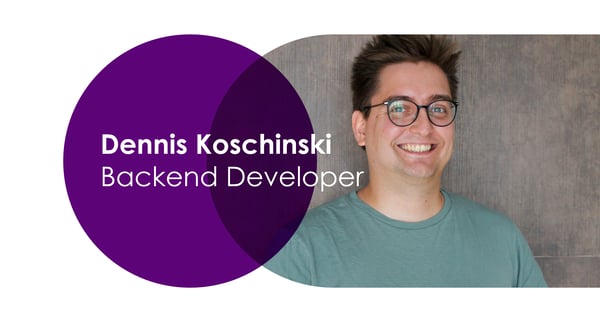
13.07.2022
Meet the Team: Dennis
Name: Dennis Koschinski Company Role: Backend Developer --- What do you do at Omnia Retail? The team and I take care that our web crawlers download millions of offers every day. What is something people in your industry...
Name: Dennis Koschinski Company Role: Backend Developer --- What do you do at Omnia Retail? The team and I take care that our web crawlers download millions of offers every day. What is something people in your industry have to deal with that you want to fix? We have to monitor millions of multivariate data points every day. The analysis is a complex task that can easily overwhelm somebody. I would like to make this task easier, which could help people focus on the more important problems. What is your past experience, of working in your position? I joined Patagona (Omnia) directly after finishing university, where I studied Physics with a focus on the characteristics of solid state matter. During my studies I worked as a scientific assistant in Solid State NMR Spectroscopy, which gained me some experience in data analysis and computational quantum physics. What do you like about working at Omnia Retail so far? What I like most about Omina Retail is that I can work together with smart and funny people on challenging topics that don’t bore me. What are the values that drive you? Respect and kindness What are your top-3 favorite books? - Lord of the Rings, J.R.R. Tolkien - Modern Quantum Mechanics, J.J. Sakurai - The Glass Bead Game, H. Hesse What do you enjoy doing when you are not working? I cook tasty food or listen to music. Let’s end with your favorite quote! “The measure of greatness in a scientific idea is the extent to which it stimulates thought and opens up new lines of research.” Paul Dirac, 1968
Meet the Team: Dennis
13.07.2022
Revolutionising graduate traineeships within the SaaS landscape
As creators of the first Dutch scaleup traineeship within SaaS, Omnia Retail is changing how newcomers to the industry can learn and importantly grow. When COO Vanessa Verlaan first pitched the thought of a scale-up...
As creators of the first Dutch scaleup traineeship within SaaS, Omnia Retail is changing how newcomers to the industry can learn and importantly grow. When COO Vanessa Verlaan first pitched the thought of a scale-up traineeship for new employees at Omnia Retail, some of her first words were, “This is not a quick fix to finding and retaining talent”. Then came the idea of an 18-month traineeship for new employees who had recently graduated with massive potential, which then became the foundation for Omnia’s talent acquisition shake-up, in 2020. In a niche industry scale-up, it has proven difficult to find candidates who are both commercially strong and have specific qualifications or experience, and more importantly, have the ability to fit in with Omnia’s core values. “The candidate needs to be able to work in pricing, e-commerce, with data, while feeling aligned with Omnia’s values,” Vanessa says. “By looking inward, we noted that we already had talented people that had the potential to grow exponentially within the company. And so, we reverse-engineered the process of hiring,” says Vanessa. As creator and designer of the traineeship, Vanessa saw that team members in the tech support department were already learning the ins and outs of the organisation and the products Omnia offers. It offered foundational knowledge and experience that would ultimately lead to chosen team members entering an exciting chapter to kickstart their careers in SaaS (software as a service). Co-building the traineeship and the organisation at the same time Each trainee will learn about different aspects of the company, including three rotations within the customer success, sales, and tech support departments. They will also work with our new Knowledge and Scalability Department as well as marketing, and will be contributing from day one. Once they have met specific milestones within each rotation, they are ready to move onto the next one, depending on the needs of each team. “We look at the desires of each rotation’s team. If the team is ready for the trainee to move onto the next phase or if there is still something to be learnt, this will be assessed on a case-by-case basis,” Vanessa added. “This is not an internship for students, but a traineeship for graduates who are co-building the traineeship and the organisation at the same time,” says Vanessa. There is an emphasis on personal development with workshops tailored towards personal effectiveness, communication, commercial and analytical skills. Martijn Crooijmans, a fairly new member of Omnia’s sales team, completed the traineeship 5 months ago and has entered a permanent role as an Account Executive. Martijn, who studied management and consumer studies and has his Masters degree in business development and entrepreneurship from Utrecht University, applied for a spot in the traineeship because of his interest in innovation management. When he first started, he admits the experience was like a rollercoaster. “I feel like I learned more in the first six months at Omnia than in the couple years studying prior. From the start I got a lot of responsibility and had a lot of coaching for all the different commercial roles I was in during the traineeship,” he says. Stemming from that point, Martijn shared that some of his most exciting and fulfilling milestones was implementing real-world strategies for Omnia. “I was able to close several enterprise customers as an Account Executive, and managed a portion of our SMB clients as a Customer Success Manager. I also ran a full implementation of our solution at several enterprise customers as a solution consultant,” says Martijn. Saskia Mueller-Herbst, who is a Solutions Consultant in the Knowledge and Scalability department, started her journey within Omnia in business development after completing her Bachelor's degree in International Business and her Masters in Marketing Management before the traineeship was established. Saskia was then offered an opportunity to join the traineeship. “I saw it as a great opportunity to get to know several sides of the business. I was further excited about this possibility as I wanted to collect as many insights as possible to define where I saw myself in the long term,” says Saskia. Saskia shared that one of the challenges she faced was learning to manage the many moving parts of a scale-up. “While I enjoy having different responsibilities and tasks to work on, I realised that it’s very important to work in a structured way. The work is never done and I needed to be good at prioritising my work,” Saskia shares. However, one of Saskia's biggest triumphs was noticing her own growth. “During the traineeship you constantly improve and all the skills you learn you can make use of in the next rotation.” Within every rotation you learn something different A new member of the Customer Success team that completed the traineeship is Suzanne Meinders, who has her Masters in Marketing. Suzanne applied to take part in the traineeship, similarly to Martijn. Because of how the traineeship is set up with various rotations, Suzanne agrees this is the best way to learn 360 degrees of a business. “Now I have completed all rotations, I feel I truly know the product really well. Within every rotation you learn something different, and I think that truly sets you up for success within any position you will choose in the end.” To new or future trainees, Martijn offers some sound advice: “When you start, you are not just learning to perform well within your role, you are also learning how the SaaS product works. This means a lot of new information is coming your way and it might feel like you have been thrown in the deep. There are, however, a lot of people around that will gladly help you out and will pull you out of the water if needed. So, don't be afraid to ask for help, and soak up as much information as possible in the beginning.” Saskia shares similar advice, saying, “It’s important to be open and communicative. If you are passionate about something, there is a good chance that you can pick up a project related to this topic and make it their own.” Suzanne says, “Be ready for the moment where you rotate and go from ‘I know this’ to ‘I don’t know anything.’” An important aspect of working at Omnia is aligning with and committing to its three core values - never stop learning; obsession with excellence; and free to be you and me - and Omnia’s traineeship is no exception. Trainees “never stop learning” by working with managers, senior team members and actual customers. They are “free to be you and me” by the fact that an applicant’s race, gender identity, or even their university is not looked at when they apply. Finally, trainees have an “obsession with excellence” when they achieve each milestone in each rotation in order to complete their traineeship. In a period of two years, Omnia has hired 11 trainees, of which three have already graduated and accepted a permanent position within Omnia. “Our goal is to hire eight trainees each year; there are no fixed deadlines and we’re hiring all year round,” shares Vanessa. Two years on, the graduates from Omnia’s first completed traineeship are working in mature roles. “I am incredibly proud of Saskia, Suzanne and Martijn who have all grown so much on a personal and business level,” says Vanessa.
Revolutionising graduate traineeships within the SaaS landscape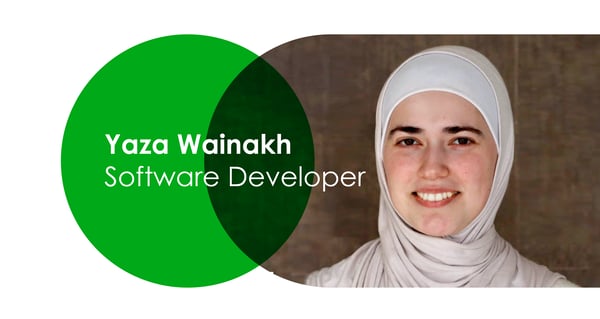
14.06.2022
Meet the Team: Yaza
Name: Yazah Wainakh Company Role: Software Developer --- What do you do at Omnia Retail? Supporting the Frontend part of Omnia products. Mainly trying to create an enjoyable and fruitful experience for our customers :)...
Name: Yazah Wainakh Company Role: Software Developer --- What do you do at Omnia Retail? Supporting the Frontend part of Omnia products. Mainly trying to create an enjoyable and fruitful experience for our customers :) What is something people in your industry have to deal with that you want to fix? I think there is a general misconception when it comes to Frontend development, where mostly it is thought of as creating user interfaces and fixing colors and alignments. While UI is at the core of our responsibilities, there is, on the other hand, a lot that goes on behind the scenes that enables a web page to look and behave as you see it. From data structuring, processing, storing to ensuring a high quality performance, all are parts of a frontend developer’s toolkit. What is your past experience, of working in your position? I studied Software Engineering in three different countries between Bachelor and Masters, naming Syria, Jordan and Germany. This enabled me to see how people from different backgrounds address issues and handle challenges.. I have worked in different part-time jobs while studying, varying from software development to research assistance. Then I landed my first full-time job at Patagona (now Omnia). What do you like about working at Omnia Retail so far? The transparency within Omnia. The friendly environment where one can speak-up their mind freely. The support among the team members to learn and grow, because at the end of the day a team is only as strong as its least experienced member. It is therefore essential to participate in the growth of each team-member. What are the values that drive you? Compassion, Integrity, Determination, Self-growth. What are your top-3 favorite books? - The sky wept fire - by Mikail Eldin - The power of now - by Eckhart Tolle - Outliers - by Malcolm Gladwell What do you enjoy doing when you are not working? I enjoy a nice walk in nature, spending time with family and friends, and I always have a book nearby to be explored. Currently “still” trying to learn German. Also, a tv-show is mostly to slip in here and there. Let’s end with your favorite quote! I will share two quotes that pop a lot in my head, “Happiness is an inside job” by William Arthur Ward ”If you don't like where you are, move! You are not a tree” by Jim Rohn
Meet the Team: Yaza
24.05.2022
Meet the Team: Tim
Name: Tim Avemarie-Scharmann Company Role: Head of Knowledge & Scalability --- What do you do at Omnia Retail? I help our customers to define and achieve their commercial pricing goals, by building our customers' and...
Name: Tim Avemarie-Scharmann Company Role: Head of Knowledge & Scalability --- What do you do at Omnia Retail? I help our customers to define and achieve their commercial pricing goals, by building our customers' and internal team's pricing and retail expertise in a sustainable and scalable way. What is something people in your industry have to deal with that you want to fix? Competitive positioning and pricing are complex issues, and also a necessity for every entrepreneurial organisation. In the digital E-Commerce this is even more true, as data and information are available all the time, both to the consumer as well as to competitors. I want to provide our users with the most relevant industry knowledge on pricing, and help them apply the most efficient solution. What is your past experience, of working in your position? I studied Sociology, Politics and Philosophy and used to work in Singapore for some time after my studies. The major part of my professional life I have been working in a SaaS company in the E-Commerce industry, dealing with questions related to (dynamic) pricing. I also serve as municipal councillor in my city Mainz for the pan-european party Volt, where I get engaged with local questions related to global issues like climate change or the technological disruption. I am very much interested in the intersections of different things, e.g. where the technological meets the social or the political meets the economical. I like to deal with different questions in varying contexts, as it challenges me to learn something new and to grow, but also to come up with new ideas and innovative solutions. What do you like about working at Omnia Retail so far? With many of my colleagues I have been working together for the better part of all of our professional careers. Many of us have started during or right after university. We all grew together and everybody became more skilled in what s/he is doing, may that be coding or working with our customers. To see that we all evolved professionally and personally, becoming friends that care for each other along the way, and being able to produce valuable solutions for the biggest and most renowned brands and retailers in Europe, is something that makes me proud and wistful. And after merging with Omnia, there is a big bunch of new interesting people that I am really excited to work with and learn from in the years to come. What are the values that drive you? Positivity and caring for the people around me. What are your top-3 favorite books? - The Silmarillion - J.R.R. Tolkien - Sapiens: a brief history of humankind - Yuval Noah Harari - Beerholms Vorstellung - Daniel Kehlman What do you enjoy doing when you are not working? I like to work out, but I am not sure if that qualifies as “not working” ;-) As my daughter just turned 2, I spend a lot of time on playgrounds. When there is enough time on the weekend we usually go on family trips. It´s such a great thing exploring and experiencing the world around you with your kids, it brings a completely new quality to it. Let’s end with your favorite quote! "Technology is society made durable" - Bruno Latour
Meet the Team: Tim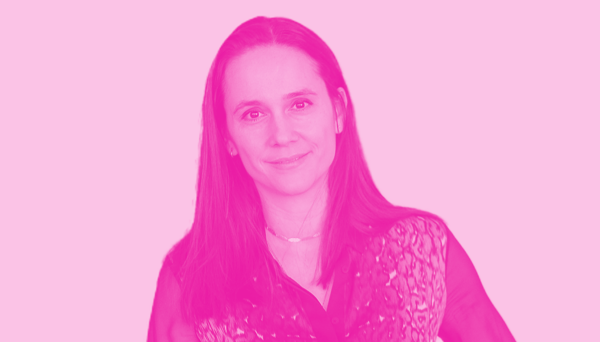
04.05.2022
Omnia appoints a new CFO, supporting its vision and leadership
As Omnia Retail moves into the next phase of growth, a new member of its leadership team is set to assist in driving forward the company’s multinational strategy: Hande Erdogan, Omnia Retail’s new Chief Financial...
As Omnia Retail moves into the next phase of growth, a new member of its leadership team is set to assist in driving forward the company’s multinational strategy: Hande Erdogan, Omnia Retail’s new Chief Financial Officer, who joined the team in April at the company’s Amsterdam offices. Hande brings a world full of knowledge and experience to the table, honing in on her skills within the financial services industry. Hailing from Turkey originally, Hande attended Boğaziçi University in Istanbul, achieving a degree in international trade and then completing her Masters in finance and economics at the London School of Economics and Political Science. Hande has a strong foundation in investment banking, having worked at Citi for 14 years and then made the transition in a CFO role for a tech scale-up. “For the last 5 years I was the CFO of a start-up which grew to become a scale-up, with offices in Istanbul, Berlin and London, so I have both worked with big, international corporates as well as start-ups across their growth journey,” says Hande. Hande’s goals for Omnia align with our plan to become an undeniable global force in pricing software as the only solution to retailers and brands. She will be focused on ensuring financially healthy organic growth, coupled with inorganic growth via value-creating acquisitions. “My primary target is to channel all my knowledge and experience to support Omnia’s goal to expand its coverage and strengthen its leadership position. I will mostly focus on adapting the finance function to support a scalable organization and arrange necessary internal and external funding to fuel its growth,” says Hande. Although Hande has worked in the financial sector for most of her career, it is Omnia’s dynamic pricing software and customer success division that drew her to the role, setting Omnia apart from other SaaS companies. Hande explains it is the “how” that elevates Omnia above the fray: “Omnia’s level of sophistication both at product and team level is quite unparalleled.” It is no coincidence then that one of Hande’s business philosophies aligns so well with one of Omnia’s core values of striving for perfection. Hande believes in working with dedication and a passion for excellence. CEO Sander Roose couldn’t agree more that Hande is the right person for the job. “Hande is precisely the right CFO for this next phase of the business and a great addition to the leadership team, we are proud to have Hande onboard.”
Omnia appoints a new CFO, supporting its vision and leadership
25.04.2022
Meet the Team: Milena
Name: Milena Shayan Company Role: Customer Success Manager --- What do you do at Omnia Retail? It’s hard to narrow it down :) My team and I are the first contact point for our customers. We do the technical support,...
Name: Milena Shayan Company Role: Customer Success Manager --- What do you do at Omnia Retail? It’s hard to narrow it down :) My team and I are the first contact point for our customers. We do the technical support, workshops, and consulting. Besides that I do routine check-ups, proactive support and different projects to improve the internal & external processes. Other than that, I’m helping out wherever it’s needed, for example, Office Management, Accounting, Organizing little after work get-togethers with coworkers. What is something people in your industry have to deal with that you want to fix? In my day to day work I deal with a lot of customers and different accounts and support a lot of users with their challenges. What I really have learned is that looking at every challenge with respect and comprehension, to solve the issues and help our customers. I want to set an environment that relies on mutual respect and is conducive to problem solving. What is your past experience, of working in your position? Before I started working at Patagona (Omnia now), I helped in my parents' lab at the time and already had a lot of contact with customers. My studies in industrial engineering with a specialization in mechanical engineering, taught me besides technical thinking a lot about different soft skills like handling stress, being organized and disciplined. I’m glad that I was able to gain experience in many different areas within the company, from cold calling, sales, accounting, direct contact at fairs and more. So the last past almost 6 years I built a lot of know-how and best practices for my actual position within the customer success department. What do you like about working at Omnia Retail so far? On one hand, as e-commerce is constantly changing and evolving, we as a SaaS company are also always challenged to evolve. I have always had the freedom to delve into different areas and aspects and learn a lot of new things. On the other hand, I find that the friendly and supportive environment is not only encouraging but also makes working at Omnia fun. What are the values that drive you? Kindness, Creativity, Acceptance What are your top-3 favorite books? It’s usually hard for me to pick favorite books because they change over time. - Ikigai - Ken Mogi Two books I just started to read and already like a lot: - Who am I and if so how many? - Richard David Precht - The vegetarian - Hang KangBlink - Malcolm Gladwell What do you enjoy doing when you are not working? I like to paint, go to exhibitions (the most recent one was the Renoir - Rococo Revival), spend time with friends, and do some gardening. Let’s end with your favorite quote! "As time goes on, you’ll understand. What lasts, lasts; what doesn’t, doesn’t. Time solves most things. And what time can’t solve, you have to solve yourself." - Haruki Murakami
Meet the Team: Milena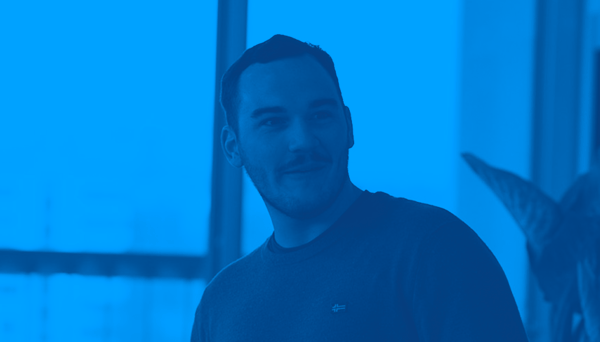
25.04.2022
Meet the Team: Hector
Name: Hector Rubin Company Role: Junior Consultant Trainee --- What do you do at Omnia Retail? Learn, mostly! As a part of the traineeship program, I rotate through several different teams within Omnia. Starting with...
Name: Hector Rubin Company Role: Junior Consultant Trainee --- What do you do at Omnia Retail? Learn, mostly! As a part of the traineeship program, I rotate through several different teams within Omnia. Starting with customer success, but moving on to sales, product and working in a consultancy function as well. Currently, I’m handling client support requests and dipping my toes in the customer success realm. Most of my day-to-day activities revolve around understanding the intricacies of Omnia, common customer issues, and solving unique challenges (really, puzzles) that arise for our clients. I’m also responsible in part for making sure that the company is up to speed in the morning, so rising early is part of the job too! What is something people in your industry have to deal with that you want to fix? Information overload; there’s so much information coming at you from every angle, concerning a huge variety of topics. It becomes exceedingly difficult to remain organised and properly digest the necessary information as it comes. I find that this is especially prevalent in documentation; it is essential, but can quickly become hindersome if not well thought out. What is your past experience, of working in your position? I’ve worked in a number of positions before coming to Omnia, mostly throughout my studies. Almost all of my positions had some element of customer success/management, as a librarian, cocktail bartender, and pharmaceutical bike courier. Always important to keep the customers happy! I believe that my varied interests, good attitude, and open mind towards challenges are important credentials for my position. Besides those attributes, I hold a MSc in Entrepreneurship and Business Development from Maastricht University where I graduated cum laude. I also hold a BA in European Studies from Maastricht University. Studying always helps! What do you like about working at Omnia Retail so far? The environment, the people, and the challenges. I feel like I fit right in with the culture, which has made my transition very easy. Everyone here is open, informed and more than willing to help; without these things, I would certainly be more lost! Besides the mass of collective knowledge, my colleagues are genuinely wonderful people. After meeting our fantastic colleagues over in Darmstadt, I was convinced that everyone really has each other's best interests in mind. Finally, the challenges and learning curve has been a very appealing aspect of the work so far. Slowly gaining more competence and responsibility is a very satisfying feeling, and I’m looking forward to the day where I can call myself a ‘product expert’! The skills and knowledge I’m gaining at Omnia are extremely useful and I’m looking forward to continually developing myself. What are the values that drive you? Honesty, Genuineness, Self-reflection, Kindness What are your top-3 favorite books? -Blink - Malcolm Gladwell - Kitchen Confidential - Anthony Bourdain - A promised land - Barack Obama What do you enjoy doing when you are not working? I’m an avid runner, so you might find me looping around Vondelpark after work. Otherwise, I enjoy drawing, journaling and learning new languages. I’ve recently been working on my German. A good book never hurts either. Let’s end with your favorite quote! “If you talk to a man in a language he understands, that goes to his head. If you talk to him in his own language, that goes to his heart.”
Meet the Team: Hector
14.04.2022
The new era of the retail consumer
Not even the Wall Street crash of 2008 saw the retail world having to relearn the wants and needs of the modern consumer as much as the last two years of the coronavirus pandemic. As 2022 enters its second quarter,...
Not even the Wall Street crash of 2008 saw the retail world having to relearn the wants and needs of the modern consumer as much as the last two years of the coronavirus pandemic. As 2022 enters its second quarter, lockdowns have largely been lifted and the closest thing to normal life is resuming. However, one thing that won’t be returning to “normal” are the hows, whys and whats of purchasing decisions. Consumers are forever changed, and that means retailers and brands are going to need to learn quickly or sink fast. How have consumers changed and where are they spending their money and their time? Are pre-pandemic buying methods and spending habits going to make a return? How can retailers and brands retain customer loyalty? We have highlighted some key trends to shed light on the answers to these questions. Reflective or intuitive: How consumers make decisions If retailers and brands are going to survive and keep up with the post-pandemic consumer, one of the things they may have to do is understand how people make choices. In a nutshell, the psychology of decision-making is split between two systems or types: Type 1 is intuitive and Type 2 is reflective thinking. Brands often rely on a person’s intuitive thinking because it hinges on a shopper’s loyalty to them and higher purchase intent, especially when there are promotional deals on offer. For example, if a person has been buying the same baby diapers from the same brand for years, it is cognitively based on a sense of loyalty to the brand. However, the last two years have forced us to change our daily behaviours and this has affected how we see and reflect upon income, job security and our overall outlook on life. For the foreseeable future, reflective thinking (type 2) is something that brands should spend more time understanding and paying attention to. Reflective thinking is based on a feeling of “rightness”, according to Kantar, a data science company. That initial feeling of rightness, however, can be affected by a person’s situational, cognitive or motivational factors. In other words, the subconscious voice inside your head that says, “This is the brand of running shoe like and I’m choosing to buy it” can be affected by the aforementioned factors. Reflective thinkers (vs. intuitive) are more likely to let these external factors affect their decision and decrease their purchase intent, which is a theory supported by an academic paper by Joyce van Uden who attended Tilburg University in the Netherlands. In today’s world, those external factors may include the health and financial upsets of the last two years. In 2019, before a whisper of Covid-19 was even mentioned, nobody could’ve predicted that the brands and retailers they’d been shopping from would be affected by second-guessing on such a mammoth scale. Now, years later, situational, cognitive or motivational influences are certainly at play when consumers shop. Key trends and changes among consumers Online grocers have seen continued growth During global lockdowns in 2020 and 2021 that saw consumers having to stay at home, it was obvious that an increase in online shopping for groceries would naturally occur. However, this trend has continued post-pandemic. Globally, from 2020 to 2022, shoppers who bought groceries online increased by 19%. The main reason for this used to be safety related to Covid-19. Now, it’s for convenience. However, online grocers should not sit back and relax, assuming to pour all their resources and time into e-commerce. Grocers need to present a strong omnichannel retail experience for the consumer who wants options (and that’s pretty much all of them). Although shopping for meat and fresh produce is still largely done in-store, consumers like the service of home delivery or click-and-collect. It adds a level of comfort and accessibility to a service. A new trend called “top up shops”, in which a consumer will purchase staples like bread and milk online in addition to weekly or monthly in-store shops, shows just how common it has become for consumers to shop online and offline for food even within just a few days of one another. Created by JD Worldwide, a new food grocer in the Netherlands by the name of Ochama has blended omnichannel shopping, logistics technologies and robotics to offer shoppers cheaper groceries without cutting on efficiency and quality. Ochama is able to offer food and non-food items that are 10% cheaper while utilising robotics technology to gather parcels for customers who’ve ordered online or on the Ochama app. Customers can choose to pick up their parcel at the store or wait for home delivery the following day. Moreover, Ochama is only available to consumers who become members, instilling a sense of immediate exclusivity and brand loyalty. From e-commerce to m-commerce A boom in e-commerce during 2020 and 2021 was inevitable, however, what’s been interesting to note is how even within e-commerce’s growth, sub-trends are emerging. The mobile shopping experience for consumers has become easier, faster, more professional and more intuitive to the shopper’s needs. By the end of 2021, 54% of global e-commerce sales were from mobile, totaling €3.1 trillion, showing that the majority of e-commerce sales came from apps on a phone or tablet. In addition, this number was up by 22% from 2020, showing that more and more consumers are trusting and enjoying the mobile shopping experience. Globally, e-commerce app installs increased by 10% from 2020 to 2021, however some areas beat out this world average such as EMEA (Europe, the Middle East and Africa) at 15%. Less thinking and more doing in personal innovation Through an extensive survey done by market researchers at GWI, it has found that “seismic changes in the collective mindset” of consumers is taking place. From job resignations to how people have changed their spending habits, a common theme has emerged: Caution, delaying and overthinking are more and more being thrown to the wind. From the second financial quarter of 2020 (roughly April) to the second quarter of 2021, GWI notes that US consumers showed a “diminished need to be careful and responsible, especially with finances''. Upon looking at the research more in-depth, consumers also said that “treating oneself and indulging” became one of their top three priorities in the last year. This type of response was especially high in France and Italy, signalling a shift in Europe regarding consumer behaviour. In terms of pricing strategies, this could present an opportunity for direct-to-consumer (D2C) businesses to make their prices more competitive or marketers to be more suggestive in their communication. Brand loyalty has taken a knock Attracting and retaining brand loyalty is anything but easy and on the flip side for consumers, finding a brand you trust and consider the go-to for a particular product is just as difficult. Going forward, the traditional ways retailers and brands attract and retain customer loyalty have been turned on their head. McKinsey & Company reports that in the US, 75% of consumers tried new shopping behaviours and brands, pointing to convenience, availability and value-for-money as their reasons. Of the aforementioned 75%, 80% tried a new digital shopping method and 25% tried a private label or store brand, which are generally known to be less expensive. Retailers and brands should not discount on finding and keeping a customer’s loyalty, as a study by Bain & Company found that a 5% increase in customer retention can increase profitability by 75%. If a brand or retailer is noticing a shift in purchasing patterns such as consumers choosing other brands for specific products, this may prompt them to want to relook at their pricing or promotional strategies to regain the attention and loyalty of customers whose eyes are starting to wander. McKinsey also suggests that retailers should focus on “strong availability” and to also “convey value” to retain customers. The homebody economy is set to continue growing Because consumers were forced to stay home under strict lockdown laws, finding ways to entertain oneself became imperative. As a result, sales in the home entertainment, gaming, home fitness and electronics sectors sky-rocketed. Looking at Google search volumes in the first and third weeks of March 2020 when global lockdowns first began, “home fitness” as a topic went from level 22 - which is below average popularity for a search term - to level 100, which is the highest level of popularity for a term. What’s interesting to note is that, even after lockdowns have been lifted, consumers are choosing to spend more time at home and are cooking more at home rather than eating out. McKinsey asked consumers the following question: “Over the next two weeks, how much time do you expect to spend on activities compared to how much you normally spend?” The answers most selected were cooking, home improvement and exercise. Of these, cooking was said to increase by 39%; home improvement by 31% and exercise by 27%. While the home economy continues growing, e-commerce retailers could - or should - capitalise on how the consumer is choosing to spend their time. If a retailer that sells fitness equipment is smart, they will take this data and promote their home fitness equipment and apparel over items one may use in the gym or in the outdoors. Retailers selling items for construction should promote and prioritise DIY products. Retailers selling homeware should prioritise home cooking, kitchen equipment for families or singletons, and even recipe books for home use. Which segments of society are actually adopting these habits and trends? Not every change in consumer behaviour applies like a one-size-fits-all blanket. Depending on the socio-economic status of a consumer, reactions to spending in the post-pandemic world are different. According to the same aforementioned McKinsey study, the group most likely to adopt the majority of these behavioural changes are those who have had their finances and health affected by the pandemic in some way. And, most opposingly, the group that is considered the most affluent and secure is also likely to adopt the majority of these behaviours. This group is made up of 60% men who make more than $100,000 per year and have greater job security. The group that is least likely to adopt any of these behaviours at all is retirees above the age of 65. When it comes to strategy, does social media have the same impact it used to on consumers? A more blatant question is, “After the world has gone through an unprecedented health scare that’s torn through economies, homes, and entire families, is the vapid and materialistic nature of social media as effective as a strategy to lure in customers?” Yes and no. Before the coronavirus pandemic began, a large effect on the spending habits of the 16 - 64 year age group was influencer marketing on social media. In 2019 - and the five years before it - social media feeds were dominated by perfectly curated faces, bodies, and wardrobes as D2C brands and retailers used the power of influence to sway spending habits and profit their way. Today, seeing manicured lives that seem to be out of touch with reality has become less and less appealing. The loss of life, business foreclosures, global recessions and civil conflict on such a grand scale have left consumers looking for genuineness, choosing brands who want to connect in an authentic way. According to a GWI Zeitgeist survey of over 9,200 social media users aged 16 - 64, the thing they want the most from brands is authenticity: While the kind of content consumers want to see on Instagram and other social media platforms may be changing, these platforms have also been advancing their shopping features. Instagram, Facebook, TikTok, SnapChat and Twitter have developed content-driven strategies to get consumers to make direct purchases. As of January 2022, 44% of Instagram users worldwide shop weekly on the platform and 1 in 2 people use Instagram to discover new brands. In 2016, Instagram released product tags but their place in the Instagram shopping machine was only fully realised in 2021 which started allowing people to shop products from a web store and learn information about it without ever leaving the app. This firmly places Instagram in the centre of the m-commerce hurricane. From swimwear to electronics to jewellery, what originally was a photo sharing app has become a global m-commerce giant. TikTok uses short videos created by users to begin the path to purchase which, as described by TikTok itself, isn’t a linear start-to-end process: It’s an infinite loop. “Today’s consumers enter, exit, and re-enter at different stages of the purchase journey based on their needs and wants.” This “infinite loop” seems to be working - TikTok users are 1.5x more likely than other platform users to immediately purchase something they’ve discovered on the app. Looking to 2023 and beyond What’s that saying about change being the only constant? If you had to ask a person what spending or shopping habits they’re going to take on in one year from now, or even two or three, they will likely say they’ll be doing the same thing that they’re doing now. However, studies show that consumers - and people in general - are not aware of how much they change over time. In other words, we can’t forecast our own behaviour, according to a study conducted at the University of Sheffield in the UK. However, if retailers and brands are smart, they will do the work to satisfy these five factors that consumers need fulfilled when deciding to adopt a new behaviour (such as choosing to shop on a store’s new mobile app vs in-store): Cost-effectiveness, time-saving, convenience, enjoyment, personal reward. Shopping online and on e-commerce apps should be incentivised more A report created by Bond, a firm that studies customer loyalty, trends and behaviours found that 79% of customers stick with a brand if they offer loyalty programs. Loyalty programs are just one example of the many types of incentives retailers can use to attract new or retain existing customers. A key takeaway is that incentives should be personalised to the shopper to truly succeed. Adidas’ Creators Club is a successful example showing how to target new or existing customers. Through an individualised profile that one logs into, you can receive exclusive information on new products, club-only offers, invitations to events, and early access for purchasing new items. Disney partnered up with Visa to offer fans a credit card that allows them to save up for their dream Disney holiday. The card gives them discounts, accelerated earnings, and credit for flights. Card holders can also choose a card that has their favourite Disney character on it. It requires little effort, then, to see the value in incentivising consumers to shop on mobile and e-commerce platforms. The very reason incentives like commission, promotions and other job perks work so well for employees in competitive fields is the same reason consumers choose one brand who has incentivised them over the other who hasn’t: Human beings want more for what they’re willing to give (whether that’s hard work or money). An evolving lesson An academic paper written by Prof. John Hauser (MIT), Prof. Min Ding (PSU) and Dr Songting Dong (UNSW) provides evidence that “the accurate measurement of consumer preferences reduces development costs and leads to successful products” for retailers and brands, showing just how imperative it is to understand intuitive and reflective thinking in the context of a post-pandemic world. This ultimately provides retailers with an opportunity to reinvent themselves within their current market and position themselves to attract new consumers from competitors who fail to see the emerging trends within the market.
The new era of the retail consumer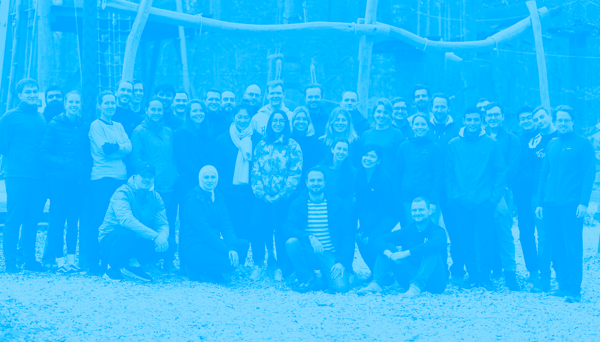
12.04.2022
Omnia Retail celebrates 10 years as Europe’s leader in pricing software
Celebrating an important milestone for a company that largely founded and revolutionised pricing software solutions across Europe a decade ago, Omnia Retail celebrated its 10th birthday last week with a team event at...
Celebrating an important milestone for a company that largely founded and revolutionised pricing software solutions across Europe a decade ago, Omnia Retail celebrated its 10th birthday last week with a team event at their Darmstadt office in Germany. "What a ride"!" Sander Roose, the company’s founder and CEO, shared at the event that, “It’s amazing to see how much Omnia has grown and gone through completely different phases and developed her own personality.” Omnia’s CCO Maximilian Bank, who founded Patagona, a pricing software company that was acquired by Omnia in 2021, reflected on the journey as well: “From the humble beginnings, to the ever-changing challenges, to today's position as the European market leader for retail pricing software: What a ride!” Head of Product Berend van Niekerk shares Max's thoughts. “We are still just at the beginning of something way bigger and better and the best is still to come.” Alongside the Head of Marketing, Leon Curling-Hope noted that “We’re not slowing down, as there is a lot of untapped opportunity within the market with exciting things to come.” Pioneering an industry before its time Because pricing software was a fairly new product when Omnia started, Sander explains that the early days were not easy. Dynamic pricing was a subject and concept very few knew much about, leaving Sander and the team having to explain what it is to clients. “Nowadays, that has completely changed and every retailer and brand needs to have pricing software in order to compete in the market and they are fully aware of that.” “However, I do believe that those years helped us to get a head-start on international competition in building our product and sharpening our thinking about the topic,” says Sander. In servicing clients, Max and Sander believe it is not just about offering the best pricing software solutions, but aiding in building customer pricing expertise. Omnia invests heavily in customer success teams, and provides retail and pricing insights to its clients and via industry commentary on the Price Points blog. For Max, one of the best things Omnia provides its clients other than its products is customer closeness. “We are not an anonymous software provider - you can talk to us. We learn from our customers every day, and they, in return, benefit from our pricing and e-commerce know-how.” Creating core values: What makes Omnia different? When asked about Omnia’s three core values, Sander says they were developed out ofhis single most important lesson as an entrepreneur: Developing company culture. Company culture is made of the values and personalities of a company’s founders and early team members, says Sander. Omnia’s three core values are: Never stop learning; obsession with excellence; free to be you and me. “They’re at the core of everything we do. From evaluating job candidates to providing feedback and making decisions on promotions and career planning,” explains Sander. Chief Operations Officer Vanessa Verlaan, the steward behind Omnia’s company culture, echos Sander’s standpoint. “You need to prioritise company culture throughout your entire organisation and live up to it everyday.” Looking forward to the next decade Sander and Max have big goals for the next decade. By 2032, Omnia plans to not only be Europe’s leader in pricing software solutions but the global leader. “The way things are going at the moment, I have no doubt that we will achieve this goal,” says Max. “However, one of our top priorities will always be to make sure that we stay close to our customers: That's what made us what we are today. We should always remember that!” Talk to one of our consultants about dynamic pricing. Contact us
Omnia Retail celebrates 10 years as Europe’s leader in pricing software
22.03.2022
Meet the Team: Marielle
Name: Marielle Roozendaal Company Role: Employee Experience Manager --- What do you do at Omnia Retail? Together with Vanessa (COO of Omnia Retail) we work on creating a scalable and professional organization and...
Name: Marielle Roozendaal Company Role: Employee Experience Manager --- What do you do at Omnia Retail? Together with Vanessa (COO of Omnia Retail) we work on creating a scalable and professional organization and building an engaging high performance company culture. My passion is to drive great employee and vistors experience. This is very varied, from working on different projects such as joining Amsterdam Inclusive and Diversity. But also looking for the right tools like e-Signing or HRIS. I am also responsible for the complete people administration, (home) office, organize team meetings and awesome events. What is something people in your industry have to deal with that you want to fix? Engage and connect employees. A lot has changed, especially in the past 2 years. Many companies have started working from home and are likely to continue to do so. As a result, employees mainly see each other online and no longer physically. It is important to take this into account and do everything you can to stay in touch and take care of each other.. What is your past experience, of working in your position? I have completed Media & Entertainment Management study. One of the things I learned is to plan and organize events in all kinds of areas. After that I started working as a study advisor at a company that offered training to companies and individuals. Something that had nothing to do with what I learned during my study. But at that time I wanted to work and live closer to my family and friends, so this was for a short term. After that I started at a start-up as Office Manager. I learned a lot at this company. Here I found out what I find important in my role and the company where I work. An open and transparent company where we can learn from each other. Then I came to Omnia where all this is the case and what is the right place for me. What do you like about working at Omnia Retail so far? The responsibility I get, the people and the culture. We have a strong feedback culture so I know what I can still learn and improve, but also what goes well. This allows me to bring out the best in myself. We have a great team that is always open to help and improving each other. What are the values that drive you? Honesty and Respect. What are your top-3 favorite books? - Book: The Culture Map - Erin Meyer - Podcast: People Masterminds What do you enjoy doing when you are not working? Spending time with my family and friends. Working with my hands (wooden furniture or games, crochet). I recently bought a racing bike, so this spring I’m starting cycling! Let’s end with your favorite quote! “Just do it.”
Meet the Team: Marielle
17.03.2022
Meet the Team: Andreas
Name: Andreas Frankenberger Company Role: Chief Technical Officer (CTO) --- What do you do at Omnia Retail? Shaping our platform in a way that enables us to fulfill the future needs of our customers and fostering the...
Name: Andreas Frankenberger Company Role: Chief Technical Officer (CTO) --- What do you do at Omnia Retail? Shaping our platform in a way that enables us to fulfill the future needs of our customers and fostering the development teams to be prepared for the upcoming challenges. What do you like about working at Omnia Retail so far? Having discussions with very talented people on topics such as pricing, software architecture and software development in general. What are the values that drive you? Always learning new things. What are your top-3 favorite books? - "Misbehaving" by Richard Thaler - "Und Nietsche weinte" by Irvin D. Yalom - "Jerusalem" by Sami Tamimi & Yotam Ottolenghi What do you enjoy doing when you are not working? I enjoy cooking with friends and hope I find more time for sports such as weight lifting, grappling and bike riding. If I’m not at sport or cooking in the evening I read a book. Besides of this, I like not tying my shoes, according to my girlfriend ;)
Meet the Team: Andreas
22.02.2022
Meet the Team: Nik
Name: Nik Shulrufer Company Role: Software Developer --- What do you do at Omnia Retail? Supporting the Frontend part of the Omnia portal, transforming lines of code into nice new features for our customers and ensuring...
Name: Nik Shulrufer Company Role: Software Developer --- What do you do at Omnia Retail? Supporting the Frontend part of the Omnia portal, transforming lines of code into nice new features for our customers and ensuring that everything runs as smoothly and reliably as possible :) What is something people in your industry have to deal with that you want to fix? The world of software development is rapidly changing. Each day new technologies emerge, existing technologies get overhauled and so on. Therefore, if developers do not factor in the possibility of future changes, they will eventually find themselves stuck in the maintenance mode, instead of the mode of creation. Why? Because the biggest challenge for a software engineer is not to write a code which will bring about a certain result. It is writing a code that will be robust enough as to outlive hundreds of iterations without breaking anything and clear enough so it can be easily understood by others even after a few years. Only then you can call this a ‘good code’. What is your past experience, of working in your position? Holding a bachelor’s degree in law (yes, completely unrelated to tech), I started out as a self-taught developer several years ago out of sheer passion for creating things on the web. Since then, I familiarized myself with intricacies of Frontend programming languages, frameworks and tools which now allow me to build beautiful stuff for Omnia. What do you like about working at Omnia Retail so far? The friendly vibes and a pleasant environment to work in created by the awesome people at Omnia. In addition, it is also a huge opportunity for professional growth that Omnia offers. What are the values that drive you? Integrity – paramount to any social interaction and the foundation of every relationship. Consistency – the main ingredient for any growth or success, especially if coupled with a reflection and smart adjustments along your journey. What are your top-3 favorite books? Hard to pick only three, but below are some really good ones: - “The End of Eternity” by Isaac Asimov - “Way of the Peaceful Warrior” by Dan Millman - “Obstacle is the way” by Ryan Holiday What do you enjoy doing when you are not working? All kinds of sport ignite a spark inside me. Be that scuba diving, skiing, or mountain biking – count me in for the game. I also do not neglect a regular weightlifting to live by the famous adage – Mens sana in corpore sano. Let’s end with your favorite quote! “If one does not know to which port one is sailing, no wind is favorable.” — Seneca
Meet the Team: Nik
21.02.2022
Meet the Team: Ola
Name: Ola Aboamer Company Role: Lead Frontend Developer --- What do you do at Omnia Retail? Supporting the team in all Frontend deliverables, collaborating towards team growth, and developing the UI of the company's...
Name: Ola Aboamer Company Role: Lead Frontend Developer --- What do you do at Omnia Retail? Supporting the team in all Frontend deliverables, collaborating towards team growth, and developing the UI of the company's software products to deliver the best user experience for our customers. What is something people in your industry have to deal with that you want to fix? Perhaps I did not face something yet that I can say I want to fix for the Software development industry, improvements are very fast ongoing in the software industry, but in general, it interests me how the automation of some development processes (e.g UI testing automation ) can massively save time and efforts and avoid faults during manual testing. What is your past experience, of working in your position? Starting from 2011 and after my graduation from faculty of science- mathematics/computer science major I have been enrolled in a 9-month program internship for open source development, during that program I got introduced to frontend/backend foundations, I began my journey with development, first, as a backend developer, then I moved to work as a software engineer at CERN (European Organization for Nuclear Research) in Switzerland, for 2 years there I was the database group convener, responsible for communicating all stakeholders (Leaders, scientists, CERN IT ) in order to design/build a database also participated in design and building web-based monitoring system for one of the sub-detectors in CMS experiment. I am passionate about continuing sharing my experience in order to develop in Omnia’s success endeavor. What do you like about working at Omnia Retail so far? Collaborative, team-oriented environment and easy going intercommunication. Everyday one learns new thing(s). What are the values that drive you? Kindness - Learning - Collaboration - Clarity - Achievement. What are your top-3 favorite books or podcasts? Podcasts: - The road ahead cafe - Gratitude blooming Books: - Azazel by Youssef Ziedan - The Subtle Art of Not Giving a F*ck by Mark Manson - The Development of Quantum Mechanics by Paul Dirac What do you enjoy doing when you are not working? Assuming “not working” state coincidences with my daughter in kindergarten then I do Reading/Writing - Painting - go to Gym , otherwise practicing parenthood. Let’s end with your favorite quote! “Be yourself; everyone else is already taken.” – Oscar Wilde
Meet the Team: Ola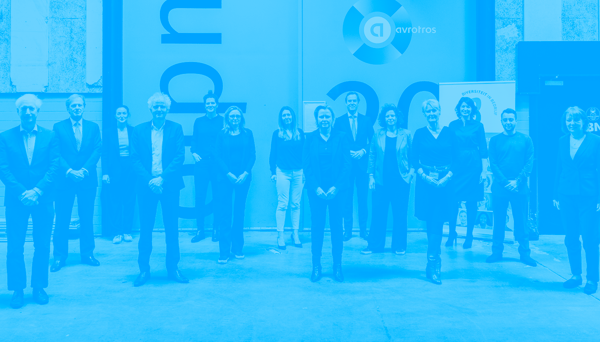
15.02.2022
Omnia signs the SER Diversity in Business charter, adding a milestone to its D&I strategy
Omnia Retail has proudly signed the SER Diversity in Business charter for equal workplace treatment, further showing our commitment to building an open and inclusive environment for all of our employees and becoming a...
Omnia Retail has proudly signed the SER Diversity in Business charter for equal workplace treatment, further showing our commitment to building an open and inclusive environment for all of our employees and becoming a part of a network of companies across the Netherlands that prioritises diversity and inclusion (D&I) within business. "This sign of approval is an important milestone for Omnia." Attending the event on 10 February 2022, our COO Vanessa Verlaan, the steward behind Omnia’s company culture, officially signed the declaration and took part in a panel discussion with other company leaders. “This sign of approval is an important milestone for Omnia and shows that we prioritise inclusion, diversity and equality in our culture.” says Verlaan. When asked why company culture is important, Verlaan said, “Our company culture defines us and sets us apart. Next to our great products, it is our strong culture that attracts and retains talented people at Omnia.” "Different backgrounds, perspectives, experiences are needed to stimulate creativity and innovation." Omnia’s D&I strategy extends into its core values as a company: Never stop learning; obsession with excellence; and free to be you and me. When explaining the purpose of Free To Be You and Me, Verlaan says that it is about allowing employees to feel free to bring their best self to work. “Different backgrounds, perspectives, experiences are needed to stimulate creativity and innovation. We want everyone to be themselves and to be respected no matter who they are or where they come from.” Setting an inclusive company culture is not the responsibility of one team or person, but an achievement we all take ownership for, as Verlaan explains: “Everyone is invited and expected to be a cultural ambassador at Omnia from day one.” To ensure that Free To Be You and Me, along with our other two core values, is embedded in Omnia's culture, we have created a framework that emphasises the importance and expectation of living up to our core values: It starts with something very crucial, yet rather easy to implement: English is our default language in all our spoken and written communication. This helps everyone feel included and welcomed to join a conversation. Bringing in new people is impactful for any organisation, especially for a scale-up. We ensure that new joiners match our inclusive mindset by focusing on value fit during the interview process. This has led to a truly diverse culture with over 20 different nationalities. D&I forms an important part of our quarterly employee survey, in which we ask for feedback on how the company is handling D&I. In addition, our core values are addressed in performance reviews, internal communications and one-on-one meetings as a part of our threshold in achieving success. "You need to prioritise it throughout your entire organisation, and live up to it every day.” Omnia recently took a look at D&I programs in companies across Europe to see what we - and others - can learn from the successes and shortcomings of others. Globally, European companies are doing good work in prioritising D&I programs. Over 7,000 global companies were tracked by the Thomson Reuters Diversity and Inclusion Index and 8 out of the top 10 most diverse companies in the world were European. Verlaan notes with sound advice for other companies: “In order to create, develop and keep the culture you have envisioned for your people and the company, you need to prioritise it throughout your entire organisation, and live up to it every day.”
Omnia signs the SER Diversity in Business charter, adding a milestone to its D&I strategy
08.02.2022
Omnia's 2022 Diversity Efforts: Are EU Businesses Keeping Up?
The global coronavirus pandemic has peeled back the curtain on a number of trends and problems within the global workforce, a major one being the importance of diversity and inclusion within companies. More so, in 2021,...
The global coronavirus pandemic has peeled back the curtain on a number of trends and problems within the global workforce, a major one being the importance of diversity and inclusion within companies. More so, in 2021, 50% of employees felt that discrimination is affecting their ability to be promoted or fairly compensated. However, discrimiation is not a new issue. It has been around in business since business first began. What we now call diversity and inclusion (D&I) started off as equal employment laws and affirmative action in the 1960s. So, in 2022, how is inclusion in the workplace being addressed? As we at Omnia further drive diversity and inclusion in our workplace, we have noted a few key points that should not be overlooked. How can one structure D&I programs to last in the long run, and not just become a flash in the pan? Think of D&I programs as a pyramid: The top is about leadership - the C-suite and senior management - that needs to enforce these programs with a trickle-down effect. They need to have the vision while taking accountability for the maintenance and governance of the program. In the middle is structural and behavioural inclusion that covers inclusive practises and structures as well as open-minded decisions and mindsets. The foundation of the pyramid, which is the bulk of it, should represent a change in attitudes, company culture and outcomes that have come from within the organisation, which are often one of the most challenging aspects. D&I programs should or would typically overcome unconscious bias, accepting differences, managing diverse teams, embedding behaviours and culture, while on the legal side, non-discrimination and regulatory compliance which covers the laws and codes of conduct set up to ensure equality. D&I in Europe, today Concluding in September 2021, PricewaterhouseCoopers (PwC) released a report on the state of diversity and inclusion, surveying more than 970 corporations in 26 industries across 19 countries in Europe. Overall, the results show that although many European businesses have stated a commitment to focusing on and expanding their D&I efforts, there is still a lot of opportunity to be gained from ensuring equal opportunities within companies, no matter of race, gender, sexual orientation, nationality and/or religion. According to PwC, D&I programs should have four basic levels in order for them to be fully implemented, and a similar approach was used within Omnia Retail: Phase one — Understanding the Facts of Today: Taking a hard look at the current state of D&I at the company today. Phase two — Building an Inspirational Strategy: Creating a plan that will drive D&I goals for the future. Phase three — Developing Leadership Engagement: Getting senior management to drive D&I goals. Phase four — Creating Sustainable Movement: This is the highest level of maturity for the program. Executing real-world results that see employees experience the positive results of the program. How well are D&I programs being implemented? Out of the surveyed organisations, only 2% reached the highest level of maturity, which is the fourth phase, when compared to PwC’s levels of D&I integration. An overwhelming majority of 54% of respondents felt that D&I programs remained in the basic stages of maturity in phase one; 18% felt that their companies fell short on D&I efforts around the second phase; and 25% felt it was the third phase where efforts stagnated. That’s in comparison to the 76% that stated D&I was a core value. More than half of companies, 60%, are using D&I as a strategy for two reasons: To attract and keep talent; and a few to simply comply with legal requirements. While there is a small group only using the guise of D&I programs to prop up their stature or prominence or to appease the expectations of customers. A greater number are utilising D&I programs for the growth of the business and their employees, a welcoming sign of adoption. Diversity, inclusion, and now equity As the workplace evolves so do the ways in which we expect these spaces to be safe, comfortable, welcoming and fair environments for employees that occupy these spaces. More recently, D&I programs are starting to include equity, which is the crux of the equation that ensures impartiality and that processes provide fair and equal outcomes for all employees. It’s not just enough to make employees feel accepted for who they are or where they come from - they must be able to work with the knowledge that no matter who they are, it has no impact on their progression within the company. Catalina Colman, the Director of HR and Inclusion at Built In, an online portal for young professionals looking to enter the tech or ‘SaaS’ environment , says that “equity takes into account the fact that not everybody is starting at the same level.” Colman continues to use the example of applying for a home loan at the bank: Although the bank may vow to not discriminate based on race, gender or ethnicity, that doesn’t account for an applicant’s existing debt, socioeconomic status, domestic issues, unique living arrangements or student loans. Equity “is about levelling the playing field so the barriers to entry are the same for every single individual”. A double-edged sword According to the surveyed companies, there are little to no drivers for senior management and the C-Suite to implement D&I programs. Only 10% said their performance evaluations of and annual salary increases for senior management are affected. 40% of respondents said that neither employees or senior management are tasked with D&I responsibilities. However, although looking at the results of PwC’s 2021 survey is helpful in understanding where some companies are going wrong in terms of D&I efforts, we should not discount the many companies across Europe making great strides in diversifying their teams and moulding open-minded and accepting company cultures. Across 7,000 companies tracked worldwide on the Thomson Reuters' Diversity and Inclusion Index, European companies top the list for having the most diverse teams. In fact, 8 out of 10 of the most diverse companies in the world are European. In November 2018, leaders from more than 50 European companies signed the European Roundtable of Industrialists’ pledge to implement D&I strategies and by 2019, that number increased to more than 700 European companies being listed on the Financial Times’ annual list of diversity leaders. Looking to the future Tackling diversity may seem like a monumental task, so it may be best to start with something simple: a conversation. What’s working and what isn’t? Where are there cracks in processes and structures and who is responsible for them? A leading article in 2015 by McKinsey & Company, updated in 2021, detailed how companies not only perform better but exceed financial industry medians when they have a high percentage of racial and ethnic diversity. In addition, companies that achieved in the top quartile for gender were 15% more likely to achieve the same thing. Looking at this data, we can agree that the benefits of having diverse teams, senior managers and C-suites goes beyond what society should or would expect. Chief Operations Officer of Omnia Retail, Vanessa Bernhart Verlaan says: “Greatness and creativity start with everyone feeling free to bring their best self forward,” who is the driving force behind the company’s culture and the continuous implementation of the D&I project. One of our three core values is “Free To Be You And Me”, a company-wide focus on diversity, equity and inclusion, and with a team of employees from 12 different countries across 5 continents, we continue to see the positive effects such principles and values have at a grassroots level. Learn more about Omnia Retail via our LinkedIn page.
Omnia's 2022 Diversity Efforts: Are EU Businesses Keeping Up?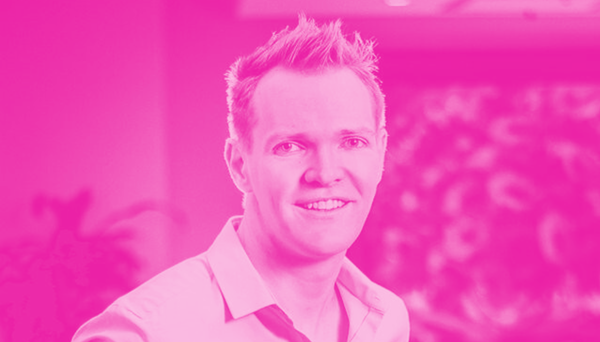
18.01.2022
Meet the Team: Leon
Name: Leon Curling-Hope Company Role: Head of Marketing --- What is something people in your industry have to deal with that you want to fix? To simply connect people and companies with the right product or service in...
Name: Leon Curling-Hope Company Role: Head of Marketing --- What is something people in your industry have to deal with that you want to fix? To simply connect people and companies with the right product or service in the most effortless way possible. I think we all can complicate things at times, especially marketers. Yet if you can merely deliver your' elevator pitch' succinctly and memorably, demonstrating your value and promise, you are almost there. What is your past experience, for working in your position? I hold a Bachelor of Arts in Marketing and a number of other qualifications from various universities and business schools, currently I am working towards my MBA at the University of Amsterdam. Looking back at my career and experiences, I have gained from both sides of the table, be it from the advertising agency or the brand itself. From start-up, scale-up to large global conglomerates. From building marketing campaigns with little to no budget, to shooting million-dollar global ad campaigns with pyrotechnics, puppies and supermodels to boot. I believe I bring not only a sense of range, but the ability to innovate, drawing from past experiences in marketing everything from complex SaaS services, financial instruments and luxury goods to toothpaste, soda and stuffed fluffy toys. In the end, it comes down to finding resonance, a truth or a desire for every brand, product or service - also known as the Why, How, What factor that Simon Sinek coined. What do you like about working at Omnia Retail so far? The culture. They say that the environment is what makes a job great, and in my opinion, is mostly driven from the top. And I'm sure we all have been there at some point of our career, being pitched a view or vision of a company's culture that usually does not materialize. I can say without a doubt that much effort is put into driving the culture here at Omnia Retail, and it shows the moment you walk through the door. What are the values that drive you? Honesty, perseverance and consistency. I believe that if you are continuously consistent at anything you're doing, and you continue to push and drive at it, not giving up at the very first sign of uncertainty. There is a huge chance you will become successful and achieve. What are your top-3 favorite books or podcasts? Top 3 books would have to be: Principles - Ray Dalio The Alchemist - Paulo Coelho Count of Monte Cristo - Alexandre Dumas What do you enjoy doing in your free time? I enjoy spending time on the road, be it cycling or running. I feel it keeps you honest, as whatever you put in, you will get out. Other than that, I am also an admitted foodie, so often entertaining at home, making something in the kitchen for friends with a glass of red wine, of course. Let’s end with your favorite quote! “You have 3 options in life; Pivot Persist or Surrender”―Matthew McConaughey
Meet the Team: Leon
18.01.2022
Meet the Team: Maximilian
Name: Maximilian Bank Company Role: Chief Commercial Officer --- What do you do at Omnia Retail? Supporting our colleagues in sales, marketing and customer success in order for them to perform at their peak. If I...
Name: Maximilian Bank Company Role: Chief Commercial Officer --- What do you do at Omnia Retail? Supporting our colleagues in sales, marketing and customer success in order for them to perform at their peak. If I succeed, they succeed. If they succeed our customers thrive What is something people in your industry have to deal with that you want to fix? Even in 2022, I see a lot of unnecessary, manual, repetitive work that I would like to see being automized. Besides that, a lot of - especially European - companies struggle to benefit from the immense insights that lie in front of them: Public and accessible market data. What are your credentials for working in your position? Founded Patagona in 2013 together with Andreas Frankenberger and grew it organically together with an amazing team until the acquisition by Omnia. What do you like about working at Omnia Retail so far? A lot of very intelligent and extremely ambitious people move one mountain at a time. What are the values that drive you? Brutal honesty and Empathy. What are your top-5 favorite books? Nassim Taleb - Antifragile Richard Dawkins - The Selfish Gene J.R.R. Tolkien - The Lord of the Rings Erich Maria Remarque - Der schwarze Obelisk Andrew S. Tanebaum - Modern Operating Systems What do you enjoy doing in your free time? Chasing my daughter around, occasional gym visits and restoring old hifi. Let’s end with your favorite quote! “It ain’t over until the fat lady sings.”
Meet the Team: Maximilian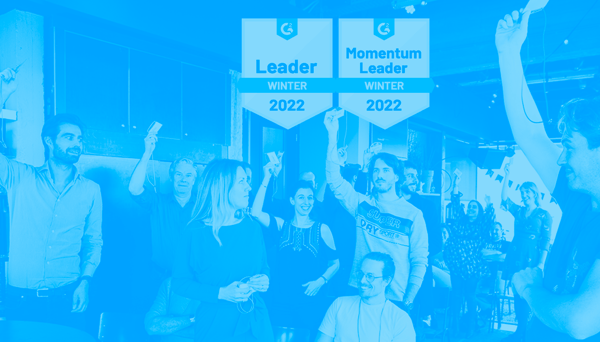
12.01.2022
Omnia achieves top position as the G2 Market Leader for 2022
Omnia Retail has been recognized twice within the G2 Grid® for 2022. Both as the momentum leader and holding the top spot within the Pricing Software segment, reaffirming Omnia Retail as the European leader. G2 is the...
Omnia Retail has been recognized twice within the G2 Grid® for 2022. Both as the momentum leader and holding the top spot within the Pricing Software segment, reaffirming Omnia Retail as the European leader. G2 is the world's largest and most trusted software marketplace for Software Services 'SaaS' and has awarded Omnia Retail with both the G2 Leader and the G2 Momentum Leader badge in the field of Pricing Software segment for Winter 2022. The award represents a lot for Omnia, its customers and future users. The ranking is based on a combination of authentic market reviews from various industry leaders as well as our presence in the market. As we move forward, this indicator highlights the successes we have had alongside our clients and points to the tremendous growth we all have achieved in a short period of time. While our customers describe our Dynamic Pricing software as the "most advanced pricing tool with the best usability" and note our "perfect service." We will not cease in continuing to innovate and further develop our software's range of features, tailored precisely to the needs of our customers, as we continue to drive towards becoming the global leader within the world of Retail and Brand Pricing Software. *Omnia Retail received 4.5 out of 5 stars from reviews published on G2.
Omnia achieves top position as the G2 Market Leader for 2022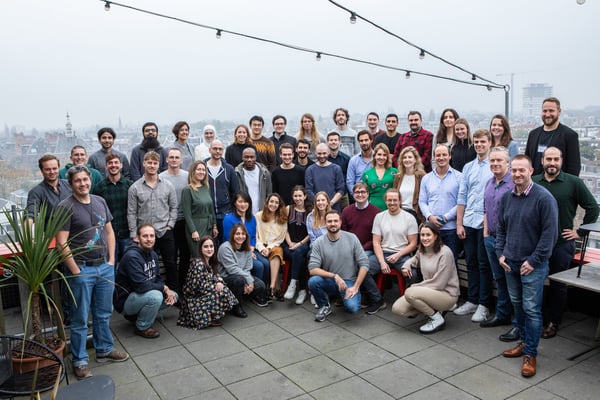
17.11.2021
Omnia acquires Patagona to become leading pricing software provider
This Thursday Omnia Retail announced the acquisition of German pricing software provider Patagona. Both companies are specialized in dynamic pricing software and with the integration Omnia will become Europe’s leading...
This Thursday Omnia Retail announced the acquisition of German pricing software provider Patagona. Both companies are specialized in dynamic pricing software and with the integration Omnia will become Europe’s leading enterprise pricing solution. "By combining our strengths, the new holding is the leading B2C-retail dynamic pricing vendor in Europe." Omnia founder & CEO Sander Roose will become the group CEO. Patagona’s founders Andreas Frankenberger and Maximilian Bank will become group CTO and CCO, respectively. Sander Roose’s view on the future of the company: “COVID driven e-commerce acceleration has increased the need for dynamic pricing software for retailers and brands in all product categories. By combining our strengths, the new holding is the leading B2C-retail dynamic pricing vendor in Europe. This step also guarantees a strong local presence in the crucial DACH region. Our main focus is further improving our service level to retailers and brands by accelerating product development. With the addition of the Patagona team, we have all the required expertise to ensure our customers can leverage the power of machine learning (AI) for pricing insights and price optimization, which is a key product priority for the coming years.” "Leading the way together with a strong, ambitious and dynamic company that shares the same values." Andreas Frankenberger and Maximilian Bank believe that the effect of joining forces will have a very positive impact on the customer side: "To provide our customers with the best possible solution - in data quality as well as retail know-how - we are committed to leading the way together with a strong, ambitious and dynamic company that shares the same values as Patagona: Omnia Retail." The group raised growth financing provided by ABN Amro, which enables the group to invest more heavily in the continuous development of the platform. The funding allows the company to take a large step forward towards reaching its ultimate goal of becoming the global market leader in retail pricing software. SaaS investor Connected Capital & Partners remains on board and continues to be an important strategic partner for the company's further growth. Both companies plan to operate as one company, with locations in Amsterdam and Darmstadt. The combined leadership team is an important first step in that direction. Omnia and Patagona's customers can continue to rely on both companies' products as those will continue to exist. About Omnia Retail Omnia’s software uniquely combines dynamic pricing automation with various market data sources, from platform data like Google Shopping and Amazon to direct scraping. The company has over 15 years of retail and pricing experience, which makes them experts in guiding its customers on their path towards more pricing maturity. Omnia's customers include Decathlon, Bol, Signa Sports, Media Markt, De Bijenkorf, Philips, Samsung and Accell Group. About Patagona Patagona develops software-based e-commerce solutions. With its main products, Patagona enables online retailers to optimize their sales prices automatically and helps brands to get a global market overview of their product prices online. Using deep technical AI in their software solution, customers like METRO, Kaufland, Intersport, L’Oréal and LVMH benefit from their pricing expertise. Talk to one of our consultants about dynamic pricing. Contact us
Omnia acquires Patagona to become leading pricing software provider
26.08.2021
Meet the Team: Santiago
Name: Santiago Alfaro Gimeno Company Role: Junior Consultant --- Can you tell us about yourself? I was born and raised in Buenos Aires, Argentina but I moved a lot during my childhood. I lived in Chile, the United...
Name: Santiago Alfaro Gimeno Company Role: Junior Consultant --- Can you tell us about yourself? I was born and raised in Buenos Aires, Argentina but I moved a lot during my childhood. I lived in Chile, the United States, South Africa and now in The Netherlands. I did a Bachelor in Business Administration at Universidad Adolfo Ibanez, one of the leading universities in business in South America, and after that I did the CEMS - Master in International Management at Rotterdam School of Management. I’m really passionate about Scale up business, innovation and sports. Did you discover something new lately that really inspired you? I was really inspired by a Unicorn from Chile called Betterfly. They created a disruptive and innovative business model for life insurances. This company generates alliances with companies to provide life insurance to employees, growing their life insurance balance if they adopt better habits like doing sports, meditating, eating healthy, etc. They affiliate with companies, so there is no cost for the employee. I found it super inspiring that they are empowering people to be the best version of themselves and adopting better habits. Moreover, you can convert your healthy habits into charitable donations. What is something people in your industry have to deal with that you want to fix? I think that there is a lot of knowledge to be shared about pricing strategies. Depending on your type of business your pricing strategy should be different, for example, being a brand vs a retailer. There is a lot of insights and knowledge in Omnia that could help many new potential customers find the way to convert this knowledge into more sales, growing margins and saving time in the process, as everything could be automated. With expertise in pricing and a tool like Omnia, you can give super powers to any customer. What is your work experience before Omnia Retail? I worked as a Business Executive in a Startup in Chile. We were doing photographic coverage in massive sporting events and we developed an OCR (optical character recognition) not only so participants could find their pictures with their participant number, but also to analyze the brands and accessories being used in sports events. We grew the company to 7 different countries in Latam in just one year. After that, I moved to the Netherlands and worked as a Business Developer for the Spanish and Portuguese markets in HousingAnywhere, an European Market leader Platform for mid-long term accommodations. How would you describe your work experience at Omnia Retail so far? I’m thrilled about how much I have learned already and how I keep doing so on a daily basis. It’s really inspiring to work with a team of people that thrive for excellence in everything. It’s a place where you get responsibility from day 1 and you can see the impact of your actions. Everyday is a challenge and that’s something really fulfilling. What are the values that drive you? Determination, Integrity, resilience and loyalty. What do you enjoy doing in your free time? I I’m a sports maniac. I do triathlons and it’s part of my identity, I train twice a day 6 days of the week. So, usually I’m swimming, biking or running. If I’m not working out I will probably be eating, as I also really enjoy cooking and I need to eat a lot of calories per day. Despite sports and food I have a passion for coffee and classic rock. Let’s end with your favorite quote! “To give anything less than your best is to sacrifice the gift”―Steve Prefontaine
Meet the Team: Santiago
01.07.2021
Meet the Team: Kristina
Name: Kristina Kukhalashvili Company Role: Junior Consultant --- Can you tell us about yourself? I was born and raised in Saint-Petersburg, Russia, when I was 18 years old I moved to Finland to pursue a Bachelor's...
Name: Kristina Kukhalashvili Company Role: Junior Consultant --- Can you tell us about yourself? I was born and raised in Saint-Petersburg, Russia, when I was 18 years old I moved to Finland to pursue a Bachelor's degree in International Business. During my studies, I was given an opportunity to go for an exchange period to Utrecht and I have absolutely fallen in love with the Netherlands, so I have decided to stick around. After working for four years, I have decided to continue my academic career and, as a result, last year I became a Master of Arts in Media Innovation. Did you discover something new lately that really inspired you? I get my inspiration from reading and learning. Recently I’ve read “Educated” by Tara Westover and I can’t recommend it enough, as this memoir covers in depth the power of knowledge and the importance of finding your self-confidence and self-identity. Additionally, I am truly inspired by my colleagues at Omnia Retail, as it’s an absolute pleasure to work together with such a motivated group of people. What is something people in your industry have to deal with that you want to fix? I was surprised to find out how much manual, repetitive and ineffective work retailers have to do on a daily basis when it comes to pricing. Therefore, my goal is to assist them with a tailor-made automated tool that will enable them to save time in order to improve the overall omnichannel customer experience. What is your work experience before Omnia Retail? Before joining Omnia, I had a chance to work in sales, operations and customer relations. As I have worked in start-up, scale-up and multinational corporations, I have developed the set of skills that helped me to become confident in finding creative solutions to the most challenging issues, so I will always go the extra mile to achieve even better results. How would you describe your work experience at Omnia Retail so far? I have joined Omnia Retail three months ago and I am beyond excited to be a part of the team. Every day is not like any other day, since you have a lot of responsibilities from day one and you are constantly striving to learn and improve. Working in a high-performing team that has a clear goal in mind makes you challenge yourself every step of the way, which I absolutely love! What are the values that drive you? Integrity, courage and reliability What do you enjoy doing in your free time? I can’t sit still, so you will find me running, spinning, hiking, reading books, listening to podcasts and exploring new places. Currently, my goal is to run a marathon, so I feel very fortunate with our flexible working hours, because I can go for a run during the day and enjoy some sun. Let’s end with your favorite quote! “Who controls the past controls the future. Who controls the present controls the past.”― George Orwell
Meet the Team: Kristina
01.06.2021
Meet the Team: Suzanne
Name: Suzanne Meinders Company Role: Junior Consultant --- What is your favourite quote? “The difference between ordinary and extraordinary is that little extra.” What is your top-3 favorite books or podcasts? Never...
Name: Suzanne Meinders Company Role: Junior Consultant --- What is your favourite quote? “The difference between ordinary and extraordinary is that little extra.” What is your top-3 favorite books or podcasts? Never Split the Difference from Chris Voss, an former FBI hostage negotiator who offers you very helpful insights about negotiation you can use straight away in your daily life, for example debating what you want to get for dinner that night. Additionally, I always enjoy a good thriller like The Chalk Man from C.J. Tudor or the institute by Stephen King. … and of course our own Omnia price points podcast! What do you do at Omnia Retail? As a junior consultant at Omnia I rotate between the different departments; Customer Service, Sales, Product and Customer Success. I am currently working within Customer Service helping our customers to get the most out of Omnia. I really enjoy working in this team - getting stuff done with a big smile is what I do best! What is something people in your industry have to deal with that you want to fix? Still relying on intensive software implementations instead of SaaS solutions. I see that a lot of e-commerce organizations still rely on manual work or introduce extensive pricing software. I feel that onboarding at Omnia, with the support we give, it’s a very smooth journey. We try to make the use of Omnia a daily habit instead of a difficult once in a while task. What are your credentials/past experience, for working in your position? Previously I worked in an agency specialized in digital transformations and recruitment, during this time I learned already a lot about tech and e-commerce which really empowers me in my work at Omnia. I have been fortunate to live abroad, completing an internship in New Zealand, my master’s degree in Sweden and my most recent experience working in Australia. What do you like about working at Omnia Retail so far? Everyday is different and challenging your problem solving skills. My colleagues are smart and driven to do their absolute best every day, which is highly motivating. There’s never a boring day at Omnia! What are the values that drive you? Passion, curiosity and eagerness to learn. What do you enjoy doing when you are not working? When I’m not working I really enjoy hiking in nature, with lack of in the Netherlands, you can often find me strolling through Utrecht listening to a podcast or an Audible book. I also love to connect with people, go to the cinema, travel and let my inner geek out and play video games.
Meet the Team: Suzanne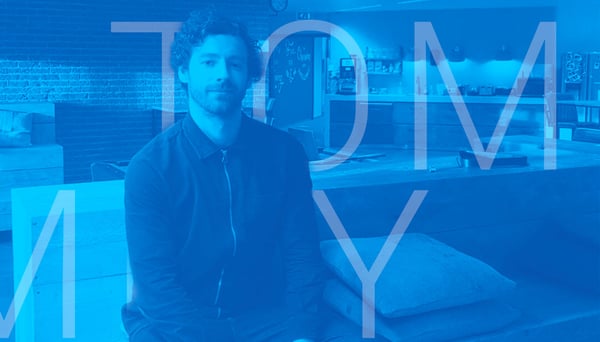
21.04.2021
Meet the Team: Tommy
Name: Tommy Hackley Company Role: Junior Consultant --- What is your favourite quote? “The more I learn, the more I realise how much I don’t know” What is your top-3 favorite books or podcasts? My two favourite books...
Name: Tommy Hackley Company Role: Junior Consultant --- What is your favourite quote? “The more I learn, the more I realise how much I don’t know” What is your top-3 favorite books or podcasts? My two favourite books come from my two favourite authors, they are The Executioner’s Song by Norman Mailer and The Brother Karamazov by Fyodr Dostoevsky. The first written with style and whit, contemplating questions of life, death and capital punishment. The second contemplates just about everything to do with human nature. My favourite podcast is The Football Ramble - an English podcast about… football! Started by a few mates who liked football in a bedroom just over 10 years, the show has risen to the number one sports podcast in the UK. What do you do at Omnia Retail? I’m a Junior Consultant enrolled in the Traineeship. I’m currently in my Sales rotation, having cut my teeth in Support. What is something people in your industry have to deal with that you want to fix? Much of the work that is being done is very manual, which is time consuming and inefficient. It can be manually checking competitor prices, manually making changes to feeds connected to pricing solutions or just about anything else. This work is often repetitive and highly error prone. Moving towards as much automation as possible with these tasks is the holy grail, freeing individuals up to concentrate their efforts on more impactful work. What are your credentials/past experience, for working in your position? Before joining Omnia I ran the family business - a coffee bar in Birmingham where I learned discipline, resilience, self-resolve and determination. Before that I studied law in London, during which time I was a mentor teaching debating in prisons and a legal representative for a South American Cleaner’s Association. Before that I studied Business in Manchester. What do you like about working at Omnia Retail so far? I like ‘grafting’. Being in a scale up environment, there’s plenty of building and plenty of responsibility, which helps me thrive. I love being surrounded by my incredibly gifted teammates who inspire me everyday, who I can learn so much from and who drive me to be better. I also like helping customers, whether that be with ad-hoc support issues that arise, in a more strategic setting or indeed with new potential customers. I like finding solutions to customers’ specific needs. What are the values that drive you? Integrity, accumulating Knowledge and Passion. What do you enjoy doing when you are not working? My passions are sports and music, watching, listening and playing. Beyond that I love cooking, reading, trying new foods & drinks and having a laugh.
Meet the Team: Tommy
15.03.2021
Meet the Team: Marwa
Name: Marwa Lamouni Company Role: Junior consultant What is your favourite quote? ‘Just keep swimming’ - Dory in ‘Finding Nemo’ What are your top-3 favorite books or podcasts? The Black Swan - Nassim Nicholas Taleb I...
Name: Marwa Lamouni Company Role: Junior consultant What is your favourite quote? ‘Just keep swimming’ - Dory in ‘Finding Nemo’ What are your top-3 favorite books or podcasts? The Black Swan - Nassim Nicholas Taleb I really loved this book because it shows how big the impact of the highly improbable events in your life can be. The author supports his thesis with interesting examples that can (almost) make everybody love probabilities. The Prophet - Khalil Gibran It’s about the life lessons that a prophet shares with the people of his town, before he moves on to a new adventure. I would say that this book is my all-time feel-good book. It is a short read but it is a gold mine of profound insights. Walden - Henry David Thoreau This is a classic of American literature. It’s the diary of Thoreau when he decided to move to the wild for two years. He even went so far as to build his own shelter and grow his own food. I enjoyed reading it because the author perfectly describes his quest to connect with nature. What do you do at Omnia Retail? I have joined Omnia as part of the traineeship program. My first rotation is in the Customer service team where I get to interact directly with our valued customers. So you could say I am the face, along with my fellow trainees, behind the Customer Service at Omnia. It is a privilege indeed to get to know our clients, but also be able to help and guide them in their Omnia journey. What is something people in your industry have to deal with that you want to fix? I believe that being able to tailor your pricing strategy to better encompass your needs and expectations is key to achieving long-term success. However, what we are seeing today is that many companies do not have the tools necessary to do so. I find that, armed with the right tool, and pertinent knowledge, retailers can do wonders. What are your credentials/past experience, for working in your position? I hold a Bachelor’s degree in Business Administration with a major in Finance and International Business. However, I found myself more drawn to International Business so I decided to move to Paris to pursue a Masters in that field. I was lucky enough to work for different companies and industries during my studies. Indeed, I worked as a marketing assistant at Ferrari, but also at Canal+ as a Customer Experience analyst. These have enabled me to build up a customer-oriented mindset, which empowers me further in building connections with our clients. What do you like about working at Omnia Retail so far? There is no room for the mundane. Every day brings in new challenges that help you build in your knowledge. Also, we are always encouraged to think outside of the box by providing creative solutions to our customers. I also love the fact that one’s inputs and ideas are always valued. What are the values that drive you? Proactiveness, resilience, and empathy. What do you enjoy doing when you are not working? I love to read, some people might even say that I would be your typical book nerd. I don’t have a specific favorite genre, I am usually curious about different topics so luckily I can always find a book to read. I am currently reading ‘War and peace’ by Tolstoy, as I am finding myself drawn to Russian literature lately. I also do yoga, and go swimming (when swimming pools are open :) I also recently started playing around with watercolor painting.
Meet the Team: Marwa
04.02.2021
Meet the Team: Saskia
Name: Saskia Zoe Mueller-Herbst Company Role: Junior Consultant --- What is your favourite quote? ”A mind that is stretched by a new experience can never go back to its old dimensions.” – Oliver Wendell Holmes Jr. What...
Name: Saskia Zoe Mueller-Herbst Company Role: Junior Consultant --- What is your favourite quote? ”A mind that is stretched by a new experience can never go back to its old dimensions.” – Oliver Wendell Holmes Jr. What is your top-3 favorite books or podcasts? “The Power of Habit” by Charles Duhigg is a great book that explains why habits are at the core of everything we do, what we can do to change them and the impact that change can have on our lives. “How Brands Grow: What Marketers don’t know” by Byron Sharp is a thought-provoking read for everyone interested in marketing principles, like brand growth and how advertising works. “The Boy, the Mole, the Fox and the Horse” by Charlie Mackesy is a beautiful book that I read recently. I can recommend it to everyone who needs a ‘feel-good’ read in uncertain times. What do you do at Omnia Retail? I joined Omnia as a Business Development Representative and was offered to join the Traineeship shortly after. As this is a great opportunity for me to rotate through different departments and experience several aspects of the company, I am really excited about this opportunity. Currently I work in the sales team where I am the first person of contact for our potential new customers. Further, I am also involved in some sales processes and I get to meet great people every day. My next rotation will take me to the Customer Success team where I am looking forward to meeting and interacting with our customers. What is something people in your industry have to deal with that you want to fix? A lot of companies still check and do their pricing manually. That is not only a very time-consuming undertaking, but it can also lead to errors or missing out on relevant insights of the market. Moreover, the right pricing can also give more power to smaller retailers. By always being up to date and having a pricing strategy in place, it gives small and medium sized businesses the chance to compete with the retail and ecommerce giants. What are your credentials/past experience, for working in your position? I have a BSc International Business and a MSc Marketing Management, both from the University of Groningen. During my masters I did an internship at Nestlé, where I was the Marketing Communications Intern for the brand Garden Gourmet. During my study I also worked as a Student Consultant for a Dutch software company. What do you like about working at Omnia Retail so far? I like how much I have learned over the past months. When I look back to when I just started at Omnia I really see how steep the learning curve is, one of the great parts about working at a Scale-up. I really love working with the team, as everyone is friendly and super approachable. While working from home we stay connected through fun online activities and meetings. What are the values that drive you? Open-mindedness, enthusiasm, reliability, and determination are some of the core values that are very important to me. What do you enjoy doing when you are not working? If I would have been asked this question about a year ago my answer would have probably been travelling, meeting up with friends, enjoying an evening out and visiting my family. However, at the moment I really enjoy cooking, reading a good book, going for long walks and watching movies / series from my comfortable couch.
Meet the Team: Saskia
05.01.2021
Meet the Team: Martijn Crooijmans
In this edition of Meet the Team we have Martijn Crooijmans in the starring role. Martijn is one of our fresh Junior Consultants within our new traineeship program. What is your favourite quote? “If you put your mind to...
In this edition of Meet the Team we have Martijn Crooijmans in the starring role. Martijn is one of our fresh Junior Consultants within our new traineeship program. What is your favourite quote? “If you put your mind to it you can accomplish anything”, which is a quote from back to the future, but I feel like it’s mostly true. What is your top-3 favorite books or podcasts? The “Velocast”, a cycling podcast and a fun and easy way to follow the cycling world. “Business adventures”, a book on, well, business adventures. And “WeCrashed” which is a short podcast on the crash of WeWork and quite interesting to go through. What do you do at Omnia Retail? As I am currently in the traineeship I will cycle through multiple different activities throughout the year. Right now I am working within customer service mostly. This allows me to get to know the product and our customers. Next to that I am joining in on consulting work and customer success work for some customers. Next month I will trade these activities in for a couple months of sales to see how things are going in that department. What is something people in your industry have to deal with that you want to fix? That is a great question but with my three months of experience I don’t think I have seen enough issues yet to know which ones are the most frequent and important. I guess more automation as computers don’t make mistakes once everything is set up properly. But in which area and how are questions for a later date. What are your credentials/past experience, for working in your position? As this is a traineeship/junior function my past credentials are fairly limited. Before I worked at Omnia Retail I followed a bachelor in Management and Marketing in Wageningen and a master in Business Development and Entrepreneurship in Utrecht. I wrote my thesis on SaaS companies and did business analyses for an IT company. So this traineeship at a Saas and tech company was a logical next step. What do you like about working at Omnia Retail so far? The culture for sure. You can’t just walk up to a colleague at work with questions as everybody is working from home. So the fact that everybody is really helpful and goes out of their way to help you by setting up digital meetings is great. Everybody just feels accessible. What are the values that drive you? I really appreciate it when things go efficiently and effectively as well as level-headed people. What do you enjoy doing when you are not working? As the podcast could have indicated I enjoy going for a cycling ride every once in a while and I really enjoy swimming. Next to sports I enjoy watching a good movie or meeting with my friends, even though that last one is a bit difficult these days.
Meet the Team: Martijn Crooijmans
15.10.2020
Omnia's Customer Success Philosophy
Set up for success. Yes, product is important. But what matters more is how the product helps you reach your goals. That’s why at Omnia, in addition to giving you the best dynamic pricing solution on the market, we...
Set up for success. Yes, product is important. But what matters more is how the product helps you reach your goals. That’s why at Omnia, in addition to giving you the best dynamic pricing solution on the market, we deliver it with an entire team dedicated to your success.
Omnia's Customer Success Philosophy
30.07.2020
Meet the Team: Niels Botman
Whether car camping in Namibia, speeding around Medemblik, or in his work at Omnia, Niels Botman, our Product Business Analyst, has a keen sense of adventure. In this month’s “Meet the Team,” you’ll get the chance to...
Whether car camping in Namibia, speeding around Medemblik, or in his work at Omnia, Niels Botman, our Product Business Analyst, has a keen sense of adventure. In this month’s “Meet the Team,” you’ll get the chance to learn more about Niels and how he helps make sure Omnia’s product is constantly improving. Hi Niels, how are you doing? I’m fine, thanks. Great. So to start, can you give a bit of background on yourself? Yeah, so I came to Omnia three years ago. I did my studies in Marketing, and after I finished that up I went to work for one of the supermarket chains in the Netherlands, in the head office. I was there for a few years, and had the chance to work in several different commercial departments. I worked on the supermarket template, and how they build the formula of a supermarket, the merchandise, the assortment, all those things. I also did some category management in the same company, which was interesting. However, after a while I decided I wanted to do something a bit more innovative. Supermarkets are quite conservative in what they do and in how new initiatives are introduced. And just in how things get done. But I wanted to be somewhere a bit more innovative. So I ended up joining Omnia as a Product Specialist a few years ago. And what’s your role now? I am a Product Business Analyst. I work within the Product team and, together with Berend, our Product Manager, I’m responsible for everything around the product and how we can improve it. And this role is recent for you, right? Yeah it is! In 2019 I actually resigned from the Product Specialist job so I could travel the world with my girlfriend for six months, which had been a dream of ours for years. When I got back to the Netherlands, I got back in touch with Sander and Haiko and they told me there was a nice role within the Product team that was open. It was a good fit for what I wanted to do — something more technical and innovative — so I rejoined Omnia. Where did you go on your trip? We started in Tanzania with my family, then myself and my girlfriend continued on to South Africa and Namibia, which was really cool. After that we went to Asia, then finally ended in Australia where we spent a month, I think. Did you have the whole thing planned beforehand? Nope, not really. We had the first couple of stops planned, but after that we just went with the flow of things. And how do you like your role now? I love it. I think the Product Specialist role was great for me in the beginning because I had no tech or software experience. I also learned a ton on the retail side and how our users interact with the product. I really learned the product inside and out and it paved the way to where I am now. So what does your day look like? Most days I start my days with a “daily startup” where I check in and make sure that everything is running properly. After that though, every day is different, so it’s hard to describe a “typical” day. It really depends on the projects we’re working on at the moment. I think that’s a common thread at Omnia. Definitely, but that’s also what makes it fun. For me at least. I like that there is a lot of variety and freedom to pursue opportunities and initiatives and that things are always changing. There’s tons of room for improvement and growth, so we’re always wondering what we can be doing better. I really like that part of the job. What’s your favorite part of working at Omnia? Well, what I just said is definitely a big part of it. I like that there’s lots of change all the time, both on the product side and the process side. I also really like the freedom at Omnia. I like that I don’t need to ask anyone for time off if I need to go to a doctor’s appointment. I think we all work very hard, but we have the flexibility to go to an appointment and come back and finish up a little later, if need be. Also, my colleagues are pretty cool. It’s a really international bunch. On the Development side of things we have people from four different continents on the team, which is awesome. Okay Niels, last question. What do you do for fun outside of work? Well, it’s a bit of a weird time to be asking that question since we’re in a pandemic and our movements are somewhat confined. But since the start of the pandemic I’ve gotten into cycling more, which is really fun! I’ve gotten pretty into it...I’m currently riding about 100 kilometers a week.
Meet the Team: Niels Botman
19.03.2020
A Letter to our Customers and Partners
Dear customers and partners, You have millions of things to worry about right now. I am here to assure you that the Omnia pricing software is not one of them. Before I launch into business, I want to take a moment to...
Dear customers and partners, You have millions of things to worry about right now. I am here to assure you that the Omnia pricing software is not one of them. Before I launch into business, I want to take a moment to recognize the gravity of this current pandemic. I know this touches everyone in a deeply personal way. As a father of two very young children, I understand and share your concerns on all levels. Maybe your partner is a healthcare worker. Maybe your parent is a school teacher. Maybe your sibling is a member of the government. Maybe one of your family members is sick. Regardless of where you are, our hearts at Omnia go out to you, your family, and your loved ones. To those of you whose family members are helping fight this virus, please give them a warm “thank you” from me personally. To those whose family members are sick, we are sending you all of our strength. We cannot extract the human element from the coronavirus pandemic. As a company, we’re taking the responsibility for the health of our employees and their families — but also the responsibility for the broader society — seriously. Starting last week, we changed our policies and required that all employees work from home. We also restricted travel, business events, and in-person contact with customers and partners. We are lucky to be a tech company that already had a fully flexible working from home policy, so all the tools and processes were already in place and the transition to fully remote work was smooth. Our team is operating at 100% capacity, and you can trust that your service will be uninterrupted. The impact of the COVID-19 virus on business is still largely unknown, and the situation changes almost daily. But this week we wrote a full blog post about the effect the coronavirus is having on retail, and I have reason to be hopeful for the future of our industry. There are several indications that the current global situation will lead to growth in e-commerce. According to McKinsey, the impact on Consumer Goods is likely to be relatively short. On the longer term it could even have a net positive effect. We also see that virtually all signals indicate that Corona will increase the adoption of online shopping and further accelerate e-commerce. As this early analysis by Bain shows, online purchases of consumer goods dramatically increased in China, the region first hit by Corona. In the short — and maybe even mid-term — all retailers may need to close their stores and transform into pure e-commerce players. My opinion is that in the short term, there will be a surge in e-commerce traffic. That extreme surge won't last, but it will accelerate a habit change towards online shopping in many categories. As consumers grow more accustomed to buying online, the role of e-commerce will grow. After this crisis is over — when stores can reopen their physical doors — I expect that e-commerce will occupy a new level of importance. While consumers will return to regular brick-and mortar shopping, the balance between e-commerce and brick-and-mortar may remain forever changed. As we’ve seen before, when industries move to e-commerce prices tend to become more dynamic. Because of the combination of increased price fluctuations and the need to constantly adjust pricing based on stock, we expect that automated pricing will be more important than ever. We would like to reiterate our belief that pricing is one of the quickest levers you can pull to impact your bottom line KPIs. As buying behavior changes, market prices swing, or stock levels become a necessary consideration, properly adjusting your commercial and pricing strategy will remain crucial to succeeding in this environment and contributing positively to society. Additionally, though we trust that no retailers plan to commercially benefit from this pandemic through price gouging, there is also plenty of opportunity to be found in the recovery. One thing we urge you to consider is using stock-based pricing rules to mitigate the supply chain challenges that will come for some products. You already have this capability in your Omnia portal. All you need to do is map your stock levels in the import mapping section of the portal. To help you navigate this, we recorded a video today that explains stock-based pricing and how to set up a strategy in the Omnia portal. Our customers and partners received this video in an email communication. Besides your strategy, I also want to touch on the negative impacts of unintentional price gouging. Not only is this practice — whether intentional or not — unethical, it also stains the name of our industry. To prevent unfair price spikes, I strongly encourage you to cap all prices in Omnia at the Recommended Selling Price. You also might find it useful to create some extra reports during this time. Some example reports you might want to make could be reports for products that suddenly stopped selling, products almost out-of-stock, or products that are highly viewed and almost out-of-stock. If you aren't sure how to implement these reports in Omnia, feel free to reach out. As we move forward and adopt a new way of working, we’ll continually provide updates on the industry, our work, and more. So while the times are changing, the good news is you don’t have to navigate those changes alone. If you have questions, reach out to your Customer Success Manager or Customer Support for answers. As always, we are here to help. Thank you for your business, and I wish you the best during this difficult time. Sincerely, Sander Roose Founder and CEO of Omnia Retail
A Letter to our Customers and Partners
23.09.2019
What Makes Omnia Different: Customer Success
Your business is constantly evolving, and the tools you use should evolve with it. At least, that’s the theory. But in many cases, you might find that your software-as-a-service doesn’t adapt as quickly as you do....
Your business is constantly evolving, and the tools you use should evolve with it. At least, that’s the theory. But in many cases, you might find that your software-as-a-service doesn’t adapt as quickly as you do. Customer Success - the idea that a company should help customers achieve their ever-evolving goals - helps software vendors keep pace with their customers and deliver value at every step of the way. In this post, we’ll explain a bit more about Omnia’s Customer Success mindset, and detail the ways we’ve built our team around you. Why is customer success important? When you buy a software service, the tool is supposed to make your life easier. But with many softwares (like Dynamic Pricing, for example), the tool setup is actually quite complex. The tool can quickly become a daily battle that you need to fight every single day if you don’t have any guidance for how to use it. And in many cases, if your business goals shift or change, it’s a hassle to change those goals within the tool. Customer success removes the fight with the tool, and enables you to use the software to its full capacity. A Customer Success Manager is more like a coach than anything else: they check in with you, guide you through the process, encourage you to try new things, and support you in your journey. How does Omnia do Customer Success? Omnia’s Customer Success program is broken into four tiers: Onboarding, Customer Success Management, Knowledge and Strategy, and Customer Support. Onboarding The starting phase of using a dynamic pricing software is crucial period to deliver value. With a dedicated Onboarding phase, our goal is to help you do just that. Omnia’s Onboarding is unique because it’s highly personal. During this period of approximately two to three months, you’ll explore the tool, translate your pricing strategy into pricing rules, ensure that the software is set up with all the proper technical requirements, and more. But, most importantly, you will learn how to use the tool yourself with the assistance of a dedicated Onboarding Manager. Your Onboarding Manager will coach you through the ins and outs of dynamic pricing and help you feel comfortable with your strategy before you go live with your new pricing tool. Customer Success Management At the end of the Onboarding, you’ll be introduced to your Customer Success Manager (CSM). Your CSM is responsible for helping you achieve your goals within Omnia, even as they evolve over time. To do this, your CSM will conduct regular EBRs, Executive Business Reviews, to see whether your current pricing strategy matches what your system is doing. For the most part, your CSM will be your main point of contact within Omnia. They’ll reach out regularly to see how you’re doing, and will be the person who informs you of any major product updates or changes. Knowledge and strategy At Omnia, we have a lot of expertise on pricing, marketing, and our own tool. But as a software company, we don’t have the ability to provide this knowledge on a one-on-one basis to every single customer in our system. But since our goal is to democratize knowledge on pricing and marketing, we’ve created a couple of different ways in which we can share our expertise. The first is our Knowledge Base, which is accessible to our customers. This is a handbook written by our Consultants, Product Specialists, and Product Managers on how to get the most out of the Omnia tool itself. It’s a go-to spot for our customer base to find answers to their questions about the tool itself. In addition to the Knowledge Base, we also have a Blog and Resources center. These are where you’ll find podcasts, articles, e-books, whitepapers, and reports about all things pricing. It’s the hub for all of our advice about strategies and market trends. If you need additional support from Omnia, we also have several consultants in-house available to help you translate your strategy into pricing rules. Customer support The final pillar in our Customer Success model is Customer Support. Customer Support is different from Customer Success Management for a few reasons. The largest, however, is that Support is reactive rather than proactive. Where CSMs reach out to you and are focused on your long-term goals, Support is here to help if you ever encounter a problem within the Omnia solution. However, our Customer Support is not just a call center to handle customer complaints. Instead, its staffed in-house with Product Specialists who know every nook and cranny of the Omnia product. When you call the Support line, you’ll connect with someone who will do everything in their power to help you. Final thoughts Customer Success is a philosophy that puts the customer first across all areas of the organization. At Omnia, we’ve built our entire team around this mindset, and have a service designed to help you get the most out of dynamic pricing. Curious to learn more? Check out this podcast from our Vice President of Customer Success Haiko Krumm.
What Makes Omnia Different: Customer Success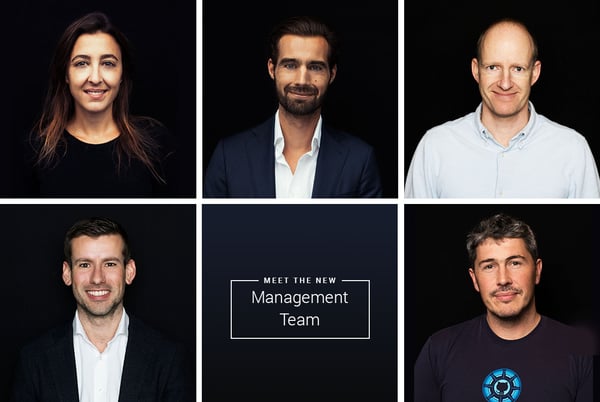
18.07.2019
The Omnia Management Team is Expanding
Exciting news: we're expanding our management team. We're delighted to welcome Nathan Johnstone, Haiko Krumm, and Sjoerd Prins to the leadership team. Nathan Johnstone, Chief Architect, will be responsible for guiding...
Exciting news: we're expanding our management team. We're delighted to welcome Nathan Johnstone, Haiko Krumm, and Sjoerd Prins to the leadership team. Nathan Johnstone, Chief Architect, will be responsible for guiding Omnia’s technical future and ensuring the scalability and stability of the platform. This includes setting technical principles for the company, planning and prioritizing projects, and further developing the Omnia roadmap. Nathan has been with Omnia for one year, and he previously worked at Coolblue for 3 years as a Senior Software Developer and .NET Pathfinder / Architect. Haiko Krumm, formerly Director of Customer Success at Omnia, will now serve as the Vice President of Customer Success. In his new role Haiko will lead the Customer Success team to ensure customers get as much value out of the Omnia software as possible. This role is not new to Haiko, who served as the Vice President of Customer Success — and member of the management team — at the SaaS company inSided before joining Omnia. Sjoerd Prins, previously Senior Business Controller at Omnia, will now serve as Finance Director for the company. In this role, Sjoerd will manage the Omnia Finance team and monitor the financial health of the company. Sjoerd has previously worked as a Financial Controller for ABN AMRO and was a Senior Associate at GE. “We are extremely excited to welcome Nathan, Haiko, and Sjoerd into the management team,” commented Sander Roose, CEO. “Each brings a unique perspective to the team, as well as years of experience in their respective disciplines. All of them are role models of Omnia’s values ‘Never stop learning,’ ‘Free to be you and me,’ and ‘Obsession with excellence.’” “We’re happy to have Nathan, Sjoerd, and Haiko join us to make sure all areas of the business are represented within our team," says Andrea Lamelas Puga, COO of Omnia. "Welcome, guys!"
The Omnia Management Team is Expanding
23.05.2019
Meet the Team: Nathan Johnstone
This week in our Meet the Team series, we’re featuring Nathan Johnstone, Omnia’s Chief Architect and Oceania continent expert. A proud Kiwi with an entire closet’s worth of New Zealand-themed t-shirts, Nathan’s in...
This week in our Meet the Team series, we’re featuring Nathan Johnstone, Omnia’s Chief Architect and Oceania continent expert. A proud Kiwi with an entire closet’s worth of New Zealand-themed t-shirts, Nathan’s in charge of taking the Omnia technical architecture to the next level. We sat down and chatted about Nathan’s work, what he looks for in new hires, and where he wants to take Omnia in the future. Want to work with Nathan directly? We’re hiring. Check out our Careers page to see our open opportunities. Hi, Nathan! Can you introduce yourself a bit? I’m Nathan Johnstone, and I’m the Chief Architect at Omnia. So, what exactly do you do at Omnia? My job, in its most basic form, is to build the future vision for Omnia’s technical architecture. To do that, I work with a team of architects, engineers, and developers to determine what the priorities for the platform are and how we can improve the Omnia ecosystem. We are currently in the process of migrating high value pieces of the system to an entirely new architecture. All this hard work will help the Omnia system scale and grow, while also pragmatically improving and future-proofing the existing architecture for continued growth. So it’s a lot more than just tapping on a keyboard? It’s definitely a lot more than tapping on a keyboard! What’s your vision for the Omnia platform? Good question. When I think about the future of the platform a lot of different types of “-ilities” come to mind, mostly “stability,” “reliability,” “maintainability,” and “evolvability.” We also want to have “scalability” in there of course, but the bulk of my job right now is making sure we have a solid foundation that allows us to build amazing features for our customers. How did you end up at Omnia? Before joining Omnia, I worked on a variety of domains and systems ranging from distributed real-time control systems running aluminum smelting processes, embedded agricultural automation systems, document collaboration and large ecommerce environments. I was originally working for another company in the Netherlands, but after two years I felt like I needed something different. I wanted more responsibility for a complete system, harder technical challenges, and the ability to define an engineering culture within a company. As I was starting to feel this way I met Herman de Jager, one of the co-founders of Omnia. After chatting with him it seemed like Omnia’s needs matched what I was looking for, so I made the switch. This was in April of 2018. And what do you like about working at Omnia? To start, I got exactly what I was looking for: freedom. This was a step up in terms of scope, and I have tons of freedom to do what I want and think is best for the platform. There’s also lots of other freedom such as the ability to work from home whenever I want or even from New Zealand when I go back to visit. I also entered a new challenge at Omnia. We’re working in a legacy code base, so most of my day isn’t spent writing new code. Instead, we’re sorting through 8 years of old code to determine what works, then rewriting small parts of it and finding better ways to use what’s already there. I think the ability to take a legacy code base and safely morph it a better state is where developers find out how good they really are. Lastly, though not unimportant, I am really happy with my colleagues at Omnia. It’s fun to work in an international office and with so many different viewpoints. I think we’ve done a good job of hiring smart, capable people, and it’s cool to learn from everyone else. What do you think has been the key to your success I think there are two things, to be honest. The first is the fact that I’m gritty and tenacious. I don’t give up, and even when I get what I want I’m constantly applying those learnings to reach a higher skill level. Software development is kind of like being a doctor. It’s a profession that is always changing, and we have to keep learning to stay relevant. So I spend probably 6-10 hours each week on my own open-source projects. Second though, is the fact that I don’t actually come from a software background. I started my career as an electrician at an aluminum smelting plant owned by Rio Tinto, and a manager there realized I was pretty good with computers. They asked me to do some software work for them to help out with Y2K, and then from that point on I've been firmly on the path of software development.I think this gives you a broader set of metaphorical tools to use when you approach a problem. What do you look for in new colleagues? To me, the most important things are problem solving and critical thinking skills, and my advice to anyone applying for any role at Omnia, though especially for technical roles, is to come with examples of these skills. We’re at a scale up stage and everything changes, so anyone on the team needs to be able to think fast and break problems down in a systematic way that lets anyone else understand it. I also look for people who will do everything they can to solve a problem before they come to me. We’re all extremely busy here, so it’s nice to know that someone takes initiative before they ask me to help. It’s respectful of my time and also presents the best learning opportunities for the person involved. Do you give a technical assignment? Yes, we ask someone to come in for a day and do an assignment. We like to see how they interact with the team and what sort of code they come up with. We then use that as a starting point for a conversation, and in follow up interviews will discuss someone’s choices. Do you have any advice for people who might be applying to a development role at Omnia? I’d say come prepared with examples of your critical thinking skills. I like to hear about experiences in the past where you figured out how to solve a problem that seemed impossible. Now for fun questions! What do you like to do outside of work for fun? Oh man. I'm a sports loving kiwi, so growing up for me it was rugby, then boxing while I was at high school until my earlier 20s. After boxing came ice hockey, and I played ice hockey back in Christchurch before we came here. I didn’t bring any of my gear over to the Netherlands though. That's what I used to do, but these days I'm still involved with a lot of my kid’s sports. So this means I spend a lot of time practicing rugby and field hockey with my 3 boys, as well as going running and parkour. Admittedly with parkour I watch more than I participate! I also love board games and computer games with my kids. So we play a lot of Catan, Zombicide, Minecraft, that kind of thing. I’m teaching my kids to code as well so they’re building their own games now. Thanks for sitting down with me, Nathan! Happy to have you here. No worries! It was my pleasure. Want to work with Nathan directly? Head on over to our Careers page to see our open opportunities.
Meet the Team: Nathan Johnstone
02.05.2019
New Case Study with Profile
How do you build a stable pricing strategy in an industry that's rapidly changing? That's the challenge Profile faced when they first approached Omnia. The tire and auto parts service had a strategy that had grown...
How do you build a stable pricing strategy in an industry that's rapidly changing? That's the challenge Profile faced when they first approached Omnia. The tire and auto parts service had a strategy that had grown organically over its 30+ years in operation. But as the industry shifted and online pure players emerged, Profile needed to change its operations. Profile took the process of adopting Dynamic Pricing as an opportunity to dive deep and improve its internal processes. With the help of Omnia partner Johan Maessen of Commercieel Verbeteren, Profile improved its margins, centralized its pricing decision making, and improved its overall understanding of its pricing mechanisms. Interested in learning more about the process? Click here to get your free copy of the case study.
New Case Study with Profile
19.04.2019
Meet the Team: Haiko Krumm
Today we continue our Meet the Team series with Haiko Krumm, Omnia's Vice President of Customer Success by day, and adrenaline-fueled daredevil by night. With more than 12 years of experience in the world of Customer...
Today we continue our Meet the Team series with Haiko Krumm, Omnia's Vice President of Customer Success by day, and adrenaline-fueled daredevil by night. With more than 12 years of experience in the world of Customer Success, Haiko's our go-to expert for making sure our customers get as much value out of their Omnia software as possible. We sat down and asked Haiko about his career path, why he believes so deeply in customer success, and where he wants to take the company in the future. Want to work directly with Haiko? We're hiring! Check out our Careers page to see our vacancies. Hi Haiko! How are you? I’m doing well, thanks! Let’s get started with your role at Omnia. Can you talk a little bit about what you do here as the Vice President of Customer Success? No problem. I think it’s helpful to start from my overall goal in the company, which is to help the customers get results with our product. To make sure customers achieve the results they want, we employ a Customer Success team that’s dedicated to helping customers reach their goals. My daily job is to lead this team and infuse a “customer success” philosophy into our thinking. So I’m responsible for coaching and supporting our Consultants and Customer Success Managers, as well as hiring new people to care for our customers. What did you do before coming to Omnia? Right before I came to Omnia, I took a 10-month long sabbatical to relax a bit. I spent most of my time renovating my house, hanging out with my son, and spending time with my father, but between that I took a week of holiday each month. I also got my boating license during this time and my wife, son, and myself spent the whole month of August in Croatia, part of which was on a rented boat. But before that my real job was at inSided, a SaaS platform I co-founded that helps companies scale their customer service teams and ensure customer success. Tell me more about inSided. How did that start? Before inSided, I was a marketing consultant doing customer contact, multichannel, distribution, customer experience, and digital transformation projects for larger enterprises. It was a nice job, but I was getting tired of my role. I wanted something that was more entrepreneurial and challenging than working for a large enterprise. You have to remember though this was back before “startups” were a thing, so it was harder to find that! While on vacation in New York my fiancée gave me some insight and helped me realize I needed to start looking for a new job. And a week after we got back from New York, I saw a job opening for a “community manager” on LinkedIn. And while the job itself wasn’t a great fit for me, I decided to get in touch with the CEO of the company, Robin van Lieshout, to learn more about what the value was of a “customer community.” At the time, “customer communities” were this new idea. Nobody really knew what to do with a customer community and while many companies liked the idea of a customer network, all the projects they ran to build and maintain them were unsuccessful. Everybody wanted to start a community, but nobody knew how to do that successfully. But Robin saw differently. And he met me for lunch one day and explained how he used communities to grow. During that lunch I instantly understood the value of online communities, especially with a peer-to-peer service purpose, so, for example, customers helping each other with WiFi and mobile internet settings. And I learned that it only takes a small group of 'super users' to actually make a huge community with millions of visitors work. Robin told me he wanted to shift his business model from managing his own community (and earning money with affiliate/bannering model) to facilitating communities for larger companies. He asked me to join some brainstorm sessions, and after the second brainstorm session he asked me to be part of this journey! I said yes, and I joined Robin and the other founder, Wouter Neyndorff, to build the company from scratch and make inSided a reality. Over the course of 7 years I grew to be Vice President of Customer Success. You’ve been involved in Customer Success for a long time! Why do you care so much about this field? Oh man, that’s a big one! I'm a huge customer advocate for a couple of reasons. First, from a business perspective, customer success makes sense, especially in SaaS. SaaS customers don't buy your tool up front. Instead, they pay you to use the tool. And your company’s sales and marketing costs to get a new customer can easily cost as much that customer’s first year subscription fee. So a new customer only starts to contribute to your company and product growth after they’ve been a customer for a year. But if a customer doesn't get value out of your product, they’ll cancel their subscription and stop paying for it. So if someone cancels after a year, you’ve basically only made back the cost of acquiring them, but not really any profit. If your customers get value out of your products, they stay customer and become brand advocates with great success stories that will help bringing new customers in. They’re also perfect candidates for cross sells and upsells, since they know your company and trust your product. So it’s not about making your customers happy, though we want our customers to be happy, of course. Instead it’s more about making sure they find your product to be a valuable addition to their lives. Second though, I also think it's just who I am as a person. I like to see people succeed. If I can help them along that journey to success, then it’s a good day, but it makes me happier to empower them to reach those goals themselves. I don't work for companies, I work for and with people. How do you define customer success? Like I said, Omnia is a subscription service, and we will only get value out of our customers if customers get enough value out of our product. So we need to make sure that customers achieve their goals with Omnia. And that’s the core of the Customer Success philosophy or mindset. It starts with our product, which is the core of Omnia and only really scalable value driver. But everyone can contribute to customer success. Marketing, for example, can contribute by targeting the right customers with content that’s really helpful for prospects and related to our product. Operations is probably the team that contributes less directly, but also helps in hiring people with the right mindset and facilitating the basics like the office and administration. What do you like about working at Omnia, and what’s your vision for the future of Customer Success here? I like the phase we are in at Omnia because there are clear proof points of success, but also a lot to prove and improve. It’s an exhilarating stage in a company’s growth because there are so many things happening at once. I also like the culture at Omnia, and everyone who works here is smart, social, and 150% dedicated to their specialty. It’s nice that the team is still small enough to really get to know everyone else. In terms of my vision for what we’re going to do here, I really want to make more information about how to build pricing and marketing strategies in our knowledge center, as well as more information on how to get the most out of the tool. As a whole, Omnia wants to be the place retailers come to for questions about pricing and marketing, and I think empowering our customers to better understand the platform is a big part of that. Next to knowledge, I’m also focusing on proactive customer success management. So that means really tracking customer health metrics like product usage, and also having periodic strategy sessions and executive business reviews to define the goals of the customer, track the results and give them insights and inspiration. As the Vice President of Customer Success, you lead the consultants, onboarding manager, product specialists, and, of course, the customer success managers. How do you define your leadership style? I follow a "serve first, lead second" mentality. I do my best to make sure that I'm helpful to everyone on the team and that everyone has the tools and support they need to succeed. I also try to get to know everyone on a personal level, because I don't think it's possible to truly separate your personal life from your work life. I want to be able to connect with my colleagues on a personal level and understand who they are, not just what they do at work. What do you look for when looking for new teammates? I think the biggest thing I look for is a willingness to learn from mistakes. One of the greatest things about Omnia is that we operate fast, and we hire for expertise. As a result, we trust our colleagues to do their best work, make informed decisions, act quickly, and be forward-thinking. This means there's a lot of responsibility on all of our shoulders, but it also doesn't mean that we can't make mistakes. We're all always making mistakes because we're human! Instead of pretending we're infallible, we should welcome those mistakes as an opportunity to learn and grow. Along these lines, I also really value honesty. I want people that I can give honest feedback, but who will also return the favor. I tend to fit the mold when it comes to Dutch honesty, so I won’t embellish something or pretend that something’s okay when it isn’t. Now for the fun part! What do you like to do outside of work? I love to do sports, especially anything that really gets the adrenaline pumping! Some of my favorites include skiing, kite surfing, mountain biking, and motorcycling. Besides that though, I also love spending time in Amsterdam and relaxing with my wife and son. I've lived in the city center for the last 15 years and there's no place in the world I'd rather be. Last question. Do you have any book recommendations for people interested in Customer Success? For sure. There are three that stand out to me. From Impossible to Inevitable by Aaron Ross and Jason Lemkin is great, and so is Multipliers by Liz Wiseman. But if you want my “Bible” you should check out Customer Success by Nick Mehta, Dan Steinman, and Lincoln Murphy.
Meet the Team: Haiko Krumm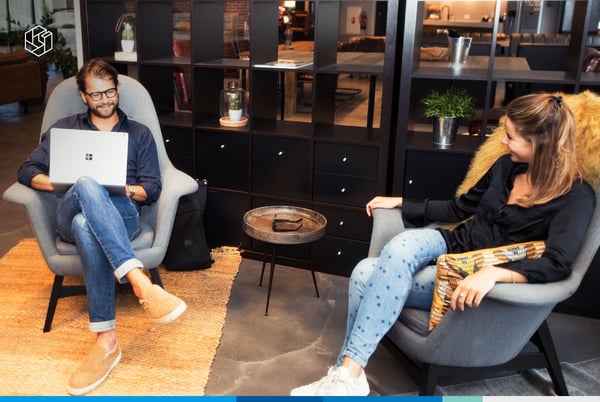
07.02.2019
Our Year in Review: 2018 at Omnia Retail
It's a month into 2019, but things are moving fast here at Omnia. This is set to be a year of immense growth — and for you that means new features, better usability of the tool, and even more insights into your pricing...
It's a month into 2019, but things are moving fast here at Omnia. This is set to be a year of immense growth — and for you that means new features, better usability of the tool, and even more insights into your pricing and online marketing data. However, none of that would have been possible without the foundations we laid in 2018. Check out what we did in 2018 to support these new developments for the product, and learn more about what's coming this year.
Our Year in Review: 2018 at Omnia Retail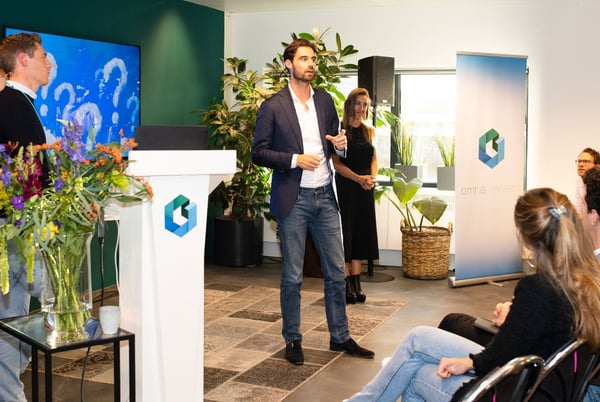
26.10.2018
3 Lessons on Innovation from the First-Ever Omnia Reinvent
Last week we hosted the first-ever Omnia Reinvent—an exciting afternoon of conversation and networking at our Amsterdam headquarters. The highlight of the event were three different presentations from Omnia, Google, and...
Last week we hosted the first-ever Omnia Reinvent—an exciting afternoon of conversation and networking at our Amsterdam headquarters. The highlight of the event were three different presentations from Omnia, Google, and Nextail. Each speaker opened a discussion about how retail is changing in the 21st century and left us with plenty to think about. In case you missed it, here are 3 major takeaways from Omnia Reinvent. 1. Get excited about innovation Artificial Intelligence has a negative public image, but this technology will transform our world in ways unimaginable to most of us. Sander Roose, CEO of Omnia dedicated an entire presentation to this and convinced us to be excited about this new wave of innovation. The first Industrial Revolution liberated people from dangerous work and increased global productivity exponentially. In short, the 19th century’s widespread adoption of machines gave people superpowers. By adopting innovation, humans could devote themselves to more creative pursuits and enjoyable work. Sander believes artificial intelligence will have the same global impact. In fact, he wholeheartedly considers this moment the second Industrial Revolution. Instead of fearing AI and the changes to come, we should recognise and seize the opportunities it offers. 2. Embrace automation in business To succeed like Google, you need to think big. For Google, “big” is a factor of 10. According to Floris van de Peppel’s presentation at Omnia Reinvent, Google credits their success to a constant drive to “10x” whatever they do. This “dream big” attitude, combined with a focus on the end-user and high employee freedom, catapulted the company from a search engine to a technology leader. 10x growth isn’t easy to achieve, but Floris confirmed that rapid adoption of technological innovation makes it possible. Automation is one of these technologies that propels your company forward in two ways. First, automation frees your employees from boring repetitive work and allows them to take on more creative pursuits. You can then use this recovered time for making your business more profitable by focusing on strategy. Second, automation allows you to meet a growing consumer demand for instantaneous and personalised experiences. As consumers demand more and the retail ecosystem changes, the only way for retailers to keep up is to include automation in their operations. 3. Start small, but start now Embracing automation is easier said than done. No matter your industry, making the switch to automation involves a significant investment of time, energy, and money at all levels of the organisation. However, the longer you wait to innovate, the more difficult it becomes to catch up. That’s why it’s critical to get all executives on board for a business overhaul. At Omnia Reinvent, Nextail’s Jos Mulder detailed his own journey in successfully convincing Blokker Holding to adopt automated pricing. His advice? Start small, get results, and then re-discuss the level of investment. Final thoughts Overall, we loved the first ever Omnia Reinvent. We left feeling inspired about innovation in retail, and we’re filled with ideas for next year’s event. Thank you so much to everyone who joined us, and we can‘t wait to see you again next year! Can’t wait for next October? No need! Check out the after movie here.
3 Lessons on Innovation from the First-Ever Omnia Reinvent
04.09.2018
Omnia Retail Invited to Take Part in Leading Startup Accelerator
Omnia Retail has been invited to join the fifth batch of startups taking part in the prestigious Lafayette Plug and Play startup accelerator, as part of its ongoing international growth ambitions. Lafayette Plug and...
Omnia Retail has been invited to join the fifth batch of startups taking part in the prestigious Lafayette Plug and Play startup accelerator, as part of its ongoing international growth ambitions. Lafayette Plug and Play is the premier business accelerator for the retail and e-commerce industries and was born through a partnership between Galeries Lafayette Group and Silicon Valley based startup accelerator Plug and Play Tech Center. Taking place from September 3rd until November 22nd, the Paris-based event brings together the most exciting European retail startups, alongside top retailers, brands & e-merchants, in order to stimulate innovation, leads and high-growth partnerships. Following a rigorous selection process together with 213 other applications, which included pitching to a panel of judges in Paris, Omnia was selected to be part of the next “batch” of 17 businesses taking part in a collaborative ecosystem of startups, investors, and corporations. The programme includes 50 corporate events, and 150 mentoring sessions with VC’s, entrepreneurs, and retail experts. Hundreds of one-to-one meetings between startup CEOs and decision-makers at major retail brands are also arranged, in order to facilitate growth and business development. The event, which counts the likes of P&G, Carrefour, C&A, and Lagardère among its global partners, was founded with the goal of making the fashion and retail industries the most innovative in the world, aiming to stimulate the growth a business would ordinarily achieve in 12 months in just a three-month period. Sander Roose, founder and CEO of Omnia Retail, said: “We’re thrilled to have been invited to take part in the latest round of the Lafayette Plug & Play accelerator. The event is such a great fit for us because it’s a truly international programme, hosting businesses from all over the world. Considering our international growth ambitions, it made clear sense for us to be involved." “Many of the alumni businesses from previous Plug and Play incubators have gone on to see tremendous growth, and we’re hopeful that we’ll be able to count ourselves as yet another success story.” About Lafayette Plug and Play As the first innovative platform fully dedicated to retail and e-commerce, Lafayette Plug and Play is a startups accelerator created by the Galeries Lafayette group in collaboration with Plug and Play Tech Center. Located in the heart of Paris, Lafayette Plug and Play aims to support the development of French and international startups disrupting retail and e-commerce, by creating an innovative ecosystem around these industries. More information on lafayetteplugandplay.com. About Omnia Retail Omnia was founded in 2013 and is the leading SaaS solution for integrated pricing and online marketing automation. Omnia helps retailers regain control, save time and drive profitable growth. The out-of-the-box solution optimises pricing and maximizes returns from marketing channels like Google Shopping. Omnia services more than 100 leading retailers, including Office Depot, Decathlon, Samsung, Media Market, Tennis Point, Wehkamp, and Coolblue.
Omnia Retail Invited to Take Part in Leading Startup Accelerator
31.07.2018
Negative Search Term Automation for Google Shopping with Omnia
A while back, we introduced the 5-level Google Shopping structure. This structure is perfectly adapted to the major differences in performance between generic and specific search terms, as Lupko clearly explained in his...
A while back, we introduced the 5-level Google Shopping structure. This structure is perfectly adapted to the major differences in performance between generic and specific search terms, as Lupko clearly explained in his blog post. This structure gets the most out of various search terms. It also takes just a few hours to setup, requires little maintenance and can be fully automated. Until now, negative search term lists could not be automated. Thanks to a smart combination of Google Adwords scripts, Omnia data and Google Sheets, this aspect can now be automated as well. In this blog post, we will deal with the way negative search term lists have been automated, and how it applies to the 5-level structure. Background To understand how the negative search terms can be automated, some background knowledge about the 5-level structure is needed - especially about the dynamic created between the five campaigns through an intelligent combination of the campaign priorities with the negative search word lists. Below is an overview of the 5-level structure and its various facets. If this information is new to you, it may be a good idea to read the blog post about the 5-level structure first. The 5-level structure is well-adapted to the difference in performance between the various types of search terms, and it requires very little maintenance. One needs to devote just a few hours to organise the structure, after which every aspect is fully automated. Ad groups: ad groups are created automatically based on the retailer’s category and brand structure (or the choice for another cross section), and can be paused or activated if the categories and/or brands in the selection change. Products: within the ad groups, the products are automatically added and paused/activated on an hourly basis, depending on the inventory. Bids: the CPC bids are calculated per product based on factors such as product margins, online product conversion rates, and the effect on shop sales (the ROPO effect). These bids are evaluated on an hourly basis, and adjusted if one of the parameters changes. Top X: the most popular products per category and/or brand are identified automatically based on historic sales data in Omnia, such as most profit or most page views in the past 4 weeks. These popular products are then added to the campaigns for generic terms (ex.: ‘LED televisions’), so that these generic terms automatically display the most popular products. The only aspect that has not been automated until now, were the negative search term lists. Maintaining these lists is very time-consuming, which makes it impossible to manually classify every search term. Now, thanks to a smart combination of Google Adwords scripts, Omnia data and Google Sheets, the negative search term lists have been automated as well. Maintaining the lists now requires much less time, and the various search terms are distributed better over the 5 campaigns, which further increases performance. Let us now elaborate on the structure in greater detail. The structure: automatic data analyses in Google Sheets, based on Adwords and Omnia data To identify the various types of search terms, a smart combination of Google Adwords scripts, Omnia data and Google Sheets is used. The results of the search term analyses are then automatically pushed to several negative search term lists in Adwords. These lists in Adwords have two functions: Negative search terms to split the traffic into different traffic types Negative search terms to (temporarily) exclude bad-performing search terms We will deal with both functions in greater detail below. Negative search terms to split search traffic into different traffic type In the 5-level structure, the search traffic is split into five different campaigns, which can be divided into two main groups: Specific terms: Product terms: all search terms related to a single specific product (ex.: ‘Samsung UE40KU6400’) This lets you know exactly which product should be displayed. Brand terms: all search terms containing a brand (ex.: ‘Samsung 40 inch LED television’). This lets you know that only products from that specific brand should be displayed. Other terms: all other unspecified terms (ex.: ‘40 inch LED television’). Generic terms: Category terms: All search terms for which an entire category may be relevant (ex.: ‘LED television’). Many products may be relevant for this term, but using the Top-X function, only the most popular products in the category will automatically be displayed. Category and Brand terms: All search terms in which the combination of category and brand may be relevant (ex.: ‘Samsung LED television’). Many products may be relevant for this term, but using the Top-X function, only the most popular products in the category and brand will automatically be displayed. The division into 5 levels can be generated automatically by maintaining only three different negative search term lists. The three types of lists that we use are: Brand terms Product terms Generic terms These lists are maintained automatically using three corresponding scripts, which are dealt with below. Brand term script The brand script is the easiest of the three. The ‘brand terms’ list should consist of a list of all brands that are added as ‘phrase’ negative. This can be achieved easily by constantly exporting all brands from Omnia and adding the new brands to the negative search term list. Adwords will then recognise whether a brand is included in each search term. For example, the brand Samsung can be added as the phrase ‘Samsung’, and all search terms that contain a brand will be recognised, regardless of the position of the brand in the search term: ex.: ‘Samsung 40 inch TV’ or ‘Black LED TV Samsung’. Product terms script The product terms structure is a bit more complicated. In this method, all search terms are exported to Google Sheets by means of an Adwords script. In Google Sheets, these search terms are then cut into pieces, and each piece is analysed separately. The script recognises the word type for each piece. This can be a text, brand or product number (MPN), an EAN, dimension, specification, or number. If the search term contains an MPN or a specific combination of words, then it is identified as a product term and automatically added to the ‘product terms’ list. Search term Text analysis Product term Samsung led television Brand + text + text No Samsung UE40KU6400 Brand + MPN Yes 40 inch LED television Spec + spec + text + text No Sonos sound system Brand + text No Sonos play 1 Brand + text + number Yes The types of words or word combinations can be adjusted per client. This makes it possible to adjust the product term recognition precisely to your branch. For car tyre sellers, for example, it is important to recognise whether the search term includes the tyre size. A tyre size always includes a certain standard alphanumeric combination. The product term definition could then be: Brand + number + tyre size. Search term Brand + text + tyre size + tyre size Yes Pirelli cinturato 215 55r17 Brand + text + text No Pirelli tyre 18 inch Brand + text + spec No Generic terms script In this method, the search terms are also copied to a Google Sheet by means of a script. There, the search terms are compared to the brand and category tree for the product on which they are displayed. If all of the words in the search term correspond to the words present in the brand and category tree, then it is identified as a category term. Search term Brand Category tree Generic term Samsung led television Samsung Audiovisual > Televisions > Led Yes Samsung UE40KU6400 Samsung Audiovisual > Televisions > Led No 40 inch LED television Samsung Audiovisual > Televisions > Led No Sonos sound system Sonos Audiovisual > Sound systems > speakers Yes Sonos play 1 Sonos Audiovisual > Sound systems > speakers No The three scripts above split the traffic into five campaigns, allowing for targeted bids corresponding to the type of traffic. With clearer differentiation between more specific terms, such as ‘Samsung UE40KU6400’, and more generic terms, such as ‘Samsung television’, the return on ad spend (ROAS) of the campaign will increase. As a result, higher bids will be profitable, and more traffic can be generated, resulting in more revenue. However, some search terms still will not perform well. You can (temporarily) exclude them from the 5-level structure. We will deal with this topic in the next section. Negative search terms to (temporarily) exclude bad-performing search terms Despite the neat division into five campaigns, some search terms still will not perform well, for example because of a very low click-through rate (CTR). Another scenario could be that visitors click on a product but do not complete a purchase. You want to exclude both situations. A low CTR is bad for your quality score in Google Shopping, and is a sign that your advertisement probably is not relevant for the specific search term. A low conversion rate will probably be unprofitable, as it requires too many clicks - and therefore higher costs - to result in a purchase. These terms can be excluded by using a bad-performing search term script, and they can eventually be reactivated using a ‘retry’ script. Bad-performing search terms Based on the ROAS and traffic targets, the retailer can determine which search terms should be excluded from the 5-level campaigns. The retailer is free to determine these criteria, and the limits can be set for example as follows: Displays > 200, and CTR is less than 1% Clicks > 100, and conversion is less than 1% Search terms that meet these limits will automatically be added to the ‘bad-performing’ negative search terms list, and excluded. Retry script Neither a low conversion rate nor a low CTR need necessarily be permanent. For example, a product may have temporarily been out-priced, with the result that the clicks and conversions for the related search term during that period went to the competitor. Once the product is priced competitively again, then the same search term may finally become profitable. It is therefore crucial that search terms which could potentially be interesting in the future are not permanently discarded. This ‘retry’ option is often overlooked, causing traffic to be gradually squeezed out and putting pressure on the revenue. With Target ROAS strategies, you frequently see that all of the traffic that does not meet the target is switched off, with the result that the revenue will also start to drop off as well over time. For the ‘retry’, Omnia uses a 6th campaign; the ‘bad-performing’ campaign. This campaign serves all of the search terms that are not profitable in the other campaigns. This is done for a low bid, so that the retailer can see if search terms can become profitable again with lower costs. If the terms then reach above a certain threshold, they are removed from the ‘bad-performing’ negative search term list and displayed for a full bid. First results We ran a pilot with the scripts at various customers and the results have been impressive. The scripts continuously analyse all the search terms and keep improving the traffic split based upon their performance. This makes the Google Shopping campaigns more effective and over the first 2 months both the daily revenue and ROAS have increased by respectively 66% and 39%. Conclusion The 5-level structure gets the most out of the various search terms, and with the automation of the negative search term lists, the last remaining aspect is now fully automated. This is a self-maintaining mechanism, in which the search terms and their performance are constantly evaluated. The scripts for the ‘brand terms’, ‘product terms’, and ‘generic terms’ ensure the proper division by traffic type. This makes it possible to make more targeted bids, which in turn makes it possible to realise higher ROAS and/or revenue targets. The scripts for bad-performing search terms improve the ROAS for the remaining search terms, which in turn allows for higher bids and increases the traffic for the terms even further. The Retry script prevents traffic from gradually decreasing by reactivating potentially interesting search terms. The entire structure is constantly balancing on the edge of profitability, which allows you to always get the most out of the search traffic.
Negative Search Term Automation for Google Shopping with Omnia
04.07.2018
Product Announcement: Omnia University
Exciting news here at Omnia! We’ve just launched a new module: Omnia University. Omnia University is created with the goal to help everyone in using Omnia to its full potential and to provide our customers and partners...
Exciting news here at Omnia! We’ve just launched a new module: Omnia University. Omnia University is created with the goal to help everyone in using Omnia to its full potential and to provide our customers and partners with in-depth knowledge and expert opinions about everything related to retail, e-commerce, pricing, marketing, and technology. What’s new in Omnia University? E-learning resources: Find information about Omnia and how to get started with Omnia. Training courses: Find elaborate training material for pricing, marketing, and reporting. FAQs: Get quick answers to your questions as you search in the most frequently asked questions. Product announcements: Stay up to date about the newest features. Webinars: Gain in-depth knowledge with webinars created by experts. Where can you find Omnia University? Log in to your Omnia console to find Omnia University added to the main menu. By clicking the button you’ll be taken to a Zendesk environment where Omnia University is hosted. Will anything change within the current customer support options? No. Omnia University is a complementary feature that has been added to the current customer support options. You can still reach us as usual by phone, email and chat for any questions you have. Next steps We’re excited to help our customers and partners to get the most out of Omnia, and this is an important first step towards that vision. In the upcoming months, we will develop a complete e-learning environment with an elaborate course library for all users, from beginner to expert.
Product Announcement: Omnia University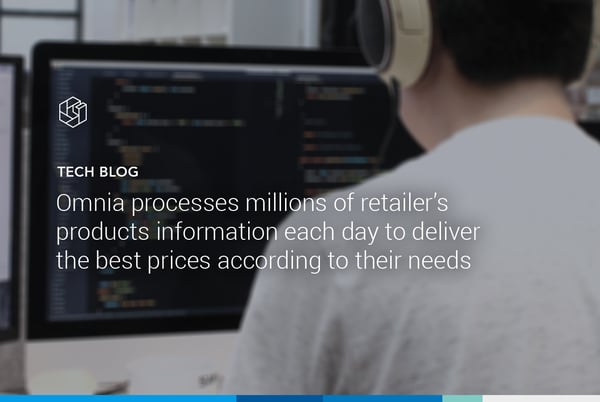
13.06.2018
Doing ETL Process with Azure Technologies
Introduction Omnia processes millions of retailer’s products information each day to deliver the best prices according to their needs. To gain advantage from machine learning techniques Omnia began a new project to...
Introduction Omnia processes millions of retailer’s products information each day to deliver the best prices according to their needs. To gain advantage from machine learning techniques Omnia began a new project to backup and utilize its data to improve its business analytics and explore machine learning. The project has two main objectives: Backup data (about 38 GB per day, with expected growth in the coming months); Ability to create multiple ETL (Extract, transform, load) processes to make data available for diverse purposes a. This project ETL process is to transform unstructured data into business report data. Alongside that, we add the following technical requirements: Progress traceability and monitor the backup and the ETL; Facility to recover if something goes wrong in the process; Ability to scale the speed linearly to the amount of data; Flexibility to create multiple distinct ETL processes. As for constraints: Internet speed from our datacenter to Azure (about 50 MB/s); Couchbase version (3.0.0), cluster size and specs – to retrieve that for backup. Development The first step was to choose the technology stack and since Omnia is primarily a .NET shop we investigated Azure. This seemed reasonable due to the current offers and easy team adoption. To satisfy the backup requirement, Azure Data Lake Store (ADLS) seemed the appropriate choice, due to the facts: Unlimited storage capability; Backups with redundancy on the fly; Created based on HDFS and supports big files (talking hundreds of gigs). Omnia currently has its infrastructure designed around Hangfire to allow easy scheduling and monitoring of background jobs, so the backup to ADLS was created as another Hangfire job. We used the Dataflow library to be able to have a good degree of parallelism when inserting documents into ADLS. We decided to zip them (with a 4 MB size cap) because text documents have a good compression rate, we use less bandwidth between our datacenter and azure and file sizes have an impact of Azure Function processing time (this is constraint since Azure functions have short lifespans). For the ability to create multiple ETL processes with ease, Azure Functions seemed the best fit due to their serverless characteristic. Azure Functions are implementations of serverless architecture. The serverless architecture allows one to execute a business logic function without thinking about the underlying infrastructure, i.e., the functions run and live in stateless compute containers that are event-triggered. Moreover, Azure functions scale on demand, have automatic failover and business logic written in C# which promotes flexibility for business requirements. To trigger Azure functions, we selected Azure Storage Queue as it provides a reliable way to transmit information between applications. These characteristics met the non-functional requirements of scaling and availability to allow the transformation of hundreds of gigabytes of Omnia data. As for the business reports requirement, Azure has SQL Data warehouse (SQL DW) seemed a possible fit due to: Ability to manage large volumes (terabytes) of information; It distributes data across 60 databases (by default) and enables more partitions; Has column store indexes – enabling fast returns for every database column; T-SQL has aggregation function to summarize data; Ability to connect with Azure Analysis services; Combability with other Azure components is easy to establish - SQL DW also has a tool to connect ADLS called PolyBase. PolyBase parses files from ADLS and map them into SQL tables. Complete Process The process to perform the backup and the ETL process is represented by the sequence diagram in Figure 1. Figure 1 Backup and ETL (simplified process) The process starts with a Hangfire job batch that inserts data into ADLS. Every time a file is added onto ADLS, a message is inserted into unzip message queue and the Unzip function is triggered. After the file is extracted into ADLS another message is inserted on transform message queue to trigger the Transform function that splits the file into several CSV files. When all files are converted to CSV, PolyBase is then manually triggered to insert data into SQL DW. This process has a central information point, ADLS, and a good scalability due to the use of Azure functions. Traceability is achieved by using the paths as the file name of the file. An important aspect to organize the ETL’s information was folder structure. Each ETL phase has a specific folder identified by a date folder structure and the file unique name. The folder structure is: Backups Year/Month/Day/Guid_N_Total.zip Unzip Etl/Unzip/Year/Month/Day/Guid_N_Total.json Final Files Etl/Csv/Year/Month/Day/BusinessFolder/Guid_N_Total.csv Etl/Csv/Year/Month/Day/BusinessFolder2/Guid_N_Total.csv ... To monitor all these functions, we used Azure’s application insights and found it easy to understand if something went wrong. Although, a single monitoring system needs to be set up to enable an overall monitor of the three different resources, and an automatic verification system to assure if all the backup files were transformed and inserted. Tips from our development process Don’t build Azure functions with more than one objective. Keep them short and precise, otherwise, they will fail and terminate midway through; Keep in mind that if the same message might be caught by multiple azure functions and your process must predict that same behaviour; Think about the process with monitoring in mind and the ability to execute specific parts; Have a correlation identifier to represent the entire ETL process. That will allow you to aggregate all the data regarding that specific run and monitor it; Use PolyBase to upload data to SQL DW instead of SISS. PolyBase was made to work with ADLS, and Microsoft as a lot of documentation on how to use it; When adding data to SQL DW, use CTAS (Create table as select) – it makes the data insertion faster and you can it to merge two tables without duplicates; To fully achieve the full SQL DW potential you need at least 60 million rows evenly distributed across all the 60 databases that it provides. Be aware of it, when developing your solutions. When creating SQL DW database study the data carefully; think how you are going to use, how you are going to partition and distributed across the database. Conclusion This project is still underway, but so far, we are happy with the results achieved. This process allowed us to backup and transform, 38 GB - about 10 Million Couchbase documents, in 1 hour and 40 minutes. Our prominent bottleneck lies on our on-premise infrastructure where hang fire batch jobs run. However, this runtime suits fits our current need, and it can be scalable by increasing the number of job slots available to perform the batch. The Azure functions occurred in parallel with the backup and that time is encapsulated by our thought-put into ADLS. PolyBase’s ingestion time to SQL DW is another project itself because it’s related with other factors such as the process units chosen for the database, the data model designed and the amount of information already stored. The next steps will be achieving a way to monitor all 3 components and assure that all backed-up data was indeed transformed and automate the PolyBase ingestion.
Doing ETL Process with Azure Technologies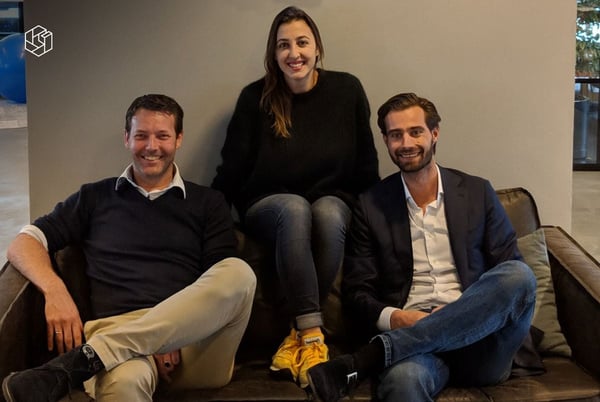
25.04.2018
Omnia Retail Expands Executive Team: Andrea Lamelas Puga Joins as COO
Amsterdam - April 25, 2018. Omnia Retail, leading supplier of pricing and online marketing automation software for retailers, today announced the appointment of Andrea Lamelas Puga (39) as Chief Operating Officer. From...
Amsterdam - April 25, 2018. Omnia Retail, leading supplier of pricing and online marketing automation software for retailers, today announced the appointment of Andrea Lamelas Puga (39) as Chief Operating Officer. From March 15th, she directs Service Delivery & Operations and the company’s finance and HR functions. Lamelas Puga aims to prepare the Omnia team for rapid growth and international expansion. She will professionalize and digitize internal processes, while at the same time ensuring that the company's culture, which makes Omnia unique, is maintained. Before joining Omnia, Andrea acted as Operations Director for Backbase. During her six-year tenure, she has shown remarkable growth, holding positions from Business Analyst to Operations Manager before assuming the position of Operations Director, heading a team of 200. Beyond operations, Andrea developed new services within Backbase as Tribe Director and set up offices in Bogota. “Andrea brings a wealth of operational experience to the table," said Sander Roose and Herman de Jager, founders of Omnia Retail. “We are thrilled to have a steady hand at the helm of operations, as we continue to move forward, growing our team and customer base.” Andrea Lamelas Puga: "At Backbase I had the opportunity to turn challenges into possibilities for growth. With the Omnia team, I am taking on the challenge to embrace growth and creating internal and external opportunities. By improving internal processes, we aim to improve the way we service our customers, both in terms of product and in support." Herman de Jager, Andrea Lamelas Puga, and Sander Roose (from left to right) About Omnia Retail Omnia is the leading B2B SaaS solution for integrated pricing and online marketing automation software. Omnia helps retailers regain control, save time and improve their results. The out-of-the-box solution automates optimal pricing and maximizes returns from Google Shopping. Omnia services more than 80 leading retailers, among which Bol.com, Wehkamp, Blokker, and Decathlon. For her clients, Omnia scans and analyses more than 500 million price points, and makes more than 7 million price adjustments daily.
Omnia Retail Expands Executive Team: Andrea Lamelas Puga Joins as COO
18.01.2018
How Blue Mango Interactive used Omnia to Win the Dutch Search Award
If you are a current user of Omnia, you know that pricing and marketing are two sides of the same coin. If a product is priced is too low, it cannot carry the marketing cost needed to sell - indicating the need to...
If you are a current user of Omnia, you know that pricing and marketing are two sides of the same coin. If a product is priced is too low, it cannot carry the marketing cost needed to sell - indicating the need to incorporate marketing cost in pricing. Additionally, the price of a product is one of the most important factors impacting its online marketing performance. As you can see, pricing and marketing influence each other greatly, which is why we build the first tool in the market that can manage both. But, even if you are a current Omnia user, do you know all ways in which pricing intelligence can bring your marketing performance to new heights? This article will showcase three cutting edge methods of online marketing management using competitor pricing, one of which recently earned - online marketing agency - Blue Mango Interactive a Dutch Search Award. Using competitor pricing to increase the effectiveness of text ads The great thing about having a flexible tool with a lot of possibilities, is that it becomes a breeding ground for cutting edge marketing and pricing strategies. Our customers and their marketing agencies frequently come up with ideas we have not thought of before. As was the case with Blue Mango Interactive, who increased the CTR (Click Through Ratio) and Conversion ratio, for the text ads of their client Saniweb. They were able to do this by using real time competitor pricing data from Omnia to decide how to configure ad content. This innovative approach recently won them a Dutch Search Award. Most serious retailers use some type of feed manager to create text ads and populate them dynamically with high engagement elements such as price. Blue Mango Interactive knew that to beat the competition they had to go one step further and incorporate also competitor pricing intelligence. How they did it In Omnia, you have the possibility to create custom feeds based on any internal data or external data you want. In this case, Saniweb used real time competitor pricing data to optimize their feed content. Blue Mango Interactive used this data to check whether the current selling pricing is higher, equal to, or lower than the minimum market price. The output is a feed, XML or CSV, showing for each product of Saniweb whether they are below, at, or above the minimum price. The Omnia output was then supplied to a tool that can automatically create and edit AdWords text advertisements. This tool decided for each product whether to highlight USPs or the product’s price. If the product was not outpriced by a competitor, the selling price was dynamically inserted in the title. If this was not the case, the ad would highlight USPs such as assembly services. The results? A substantial increase in performance when they did not show the prices for ‘outpriced’ products: CTR +71%, Conversion Rate +14%, and a lower Cost per Acquisition -20% and CPC -10%. Required Omnia modules: Pricewatch Feedmanager Bonus method 1: In Google Shopping, capitalize on buying stage elasticity and price ratio As you might know, Omnia incorporates price elasticity in the Dynamic Pricing module. This means that, rather than always having the lowest price in the market, always following specific competitors or always having X margin, Omnia tells you exactly how the product should be priced based on the variable cost, current competitor pricing, and the price elasticity of the product. You can learn more about this value based pricing method in this article. You might also be aware that we are using a 5-level Google Shopping structure to effectively adjust bids based on the specificity of the used search query. Read more about the 5-level structure in this blog post. The structure consists of the following 5 levels. The first three levels serve all products on the long tail queries: Product terms campaign Search query example: “Samsung UE40KU6400” Brand terms campaign Search query example: “Samsung 40 inch television” Other terms campaign Search query example: “Widescreen TV 100cm” The last two levels serve only the top performing product on the short tail queries: Category terms campaign Search query example: “Led TV” Brand and Category terms campaign Search query example: “Samsung led TV” Such a campaign structure allows for higher bids based on the specificity of the query and makes sure that you are showing the most relevant products on the short tail queries. Now, the interesting thing is that, sometimes a product does not do as well as expected in the most specific queries campaign, the “Product terms campaign”. Why is this? Products not doing well in the Product terms campaign is usually due to it having a high ‘current selling price’ compared to the market average. We call this a high price ratio. Someone searching for a specific product using specific search queries knows what she wants AND will be exposed to competitor pricing for the exact same products. Therefore, Product terms queries are highly elastic: a small increase in price leads to a big decrease in volume. Accordingly, you should lower your Google Shopping bid when the price ratio - your price compared to the market average - of a product is high. Omnia allows you to do just that. Required Omnia modules: Pricewatch Feed manager Dynamic Marketing Bonus method 2: Using competitor pricing to gain a more positive public perception As a retailer, you are probably using comparison engines to advertise the products. Most of the time, clicks coming from these comparison engines convert well. This is because people will only click if your priced competitively , which translates into a high conversion rate . But did you ever think of the non-monetary consequences of being listed with a price that is too high? In the example above, Coolblue has a price position of 6. This means that there are 5 retailers offering the product for a cheaper price. The result is that Coolblue will not get many clicks. “Who cares? Since they are not getting clicks, it is also not costing them anything”. A logical, but potentially dangerous conclusion. The idea of Coolblue being more expensive is still printed in the mind of the consumer. If it happens too often, with too many products, the consumer - either consciously or subconsciously - develops the idea that shopping at Coolblue is expensive. To safeguard your image regarding price competitiveness, you should exclude all products from the feeds to comparison engines with a price position that is too high. With Omnia, you will be able to do so. Required Omnia modules: Pricewatch Feedmanager Do you want to know more about how Omnia can bring your business to the next level? Request a free demo or contact us via info@omniaretail.com or call +31 (0) 35 699 02 22.
How Blue Mango Interactive used Omnia to Win the Dutch Search Award
08.11.2017
Hardware.info Added as Exclusive Data Partner
We are happy to announce that we have added Hardware.info as a pricing data partner for the Netherlands and Belgium. Omnia has a direct and exclusive API connection with Hardware.info's database and can collect and...
We are happy to announce that we have added Hardware.info as a pricing data partner for the Netherlands and Belgium. Omnia has a direct and exclusive API connection with Hardware.info's database and can collect and update competitor data multiple times a day. Next to their unrivaled data coverage in the hardware category, Hardware.info also has deep retailers coverage in other electronics categories. This data connection is ready to be used and can be connected within a few minutes. Please contact info@omniaretail.com for more info and a free prodcut assortment match. Unrivaled data coverage in Hardware categories Like the name suggests, Hardware.info specializes in hardware products: computers, components and peripherals. To provide you with an indication of the value of this data source, Omnia has compared the pricing data of over 100.000 hardware products to our current data sources. Hardware.info got the best score on both the number of products with pricing data (90% had a match) and the average number of prices found per product (6.3 retailers), making it an ideal addition to the current data sources for the hardware categories. Strong retailer coverage in electronics categories Next to the hardware products, Hardware.info also scored well in other electronics categories. Hardware.info might not always have the broadest product coverage of all the data sources, but definitely has the deepest retailer coverage: averaging at around 9 retailers per product, compared to an average of 5 over the other data sources. Adding Hardware.info as an additional data source for these categories will greatly increase the total overview of the competitor landscape and lead to better pricing decisions. Curious in your data coverage at hardware.info? Are you interested in comparing your product assortment against the database of Hardware.info? Please contact INFO@OMNIARETAIL.COM for more info and a free product match.
Hardware.info Added as Exclusive Data Partner
27.10.2017
Tips & Tricks - Easily Analyze Marketing and Pricing in Omnia
Due to complete price transparency in online comparison shopping engines and marketing channels such as Google Shopping, consumers can directly compare prices between competing retailers. It’s even possible to sort by...
Due to complete price transparency in online comparison shopping engines and marketing channels such as Google Shopping, consumers can directly compare prices between competing retailers. It’s even possible to sort by price! In such a situation, it becomes very hard to convert the products which are relatively expensive compared to competitors. As a retailer, you can ask yourself why spend marketing budget on products which are outpriced if it’s so clearly visible for consumers? As such, pricing has become the most important factor in determining online marketing variables such as views, conversions and eventually return on ad spend. It is crucial in online marketing to take into account what the pricing situation is for your product, by answering important questions. For example: Which products get the most views and what is my pricing situation for those products? Where am I the cheapest in the market and how is my conversion there? These questions are not possible to answer via standard tools such as Google Analytics & AdWords. With Omnia, you can answer these questions and much more. A unique and powerful feature of Omnia is the combined automation of marketing and pricing. Moreover, it also offers valuable insights in these two fields via the Reports functionality. With this functionality you can set up a data extract of the current situation at the product level. With these insights you can re-evaluate your current pricing & marketing strategy to get better results. In order to analyze pricing & marketing in a fast and easy way via Omnia, you need three things: Omnia Dynamic Pricing Google Analytics Connected Google Analytics with Omnia Consult the set-up guide or ask our customer service on how to set this up. After you're set up you can get started and create a valuable report in minutes with five steps: Step one: set up the necessary variables in “Mapping” You can copy paste the following mapping / calculation (2nd column) including the brackets [brackets] into your mapping. Also see the screenshot as an example. EXPORT FIELDS MAPPING/CALCULATION EXPLANATION OMNIUNIQUEID ID Product ID within Omnia EAN [EAN] EAN / productcode which matches with competitors Top_category [Top Level Category] Category level Brand [Brand] Selling_price [Selling Price] Current price PriceRatio [Selling Price] / [Average price competitor(s)] Price ratio: your price divided by the average price in the market Minimum_market_price [Minimum Price of Competitors] Distance_to_minimum [Selling Price] – [Minimum Price of Competitors] Distance between your price and the minimum (lowest) in the market Views_L4W [# of UPV PDP last 4 weeks] Unique pageviews of last 4 weeks Total_sold_L4W [# Omni-channel Unit(s) sold last 4 weeks] Total amount sold in last 4 weeks Conversion_Perc [# Omni-channel Unit(s) sold last 4 weeks] / [# of UPV PDP last 4 weeks] Conversion rate (%) If possible, you can also take online sales instead of omni-channel sales. We recommend you include at least these variables. It is always possible to add others if you like & the data is in Omnia. For instance, if you want to analyze a low-level category, add that to the report. Step two: Add a filter to exclude products without competition As products with no competition have no price ratio or minimum price in the market, be sure to filter these products from the report by excluding them from the report. A product has no competition when the price ratio is equal to zero (because Omnia is unable to compute a market average) You can choose to include only the category and/or brand of your interest. This decreases the amount of products in your report and makes it easier to analyze. As in the example below, the report will only include Brands named “Omnia”. Step three: Sort your data on the interested variable The Top-X functionality allows you to sort and mark/take the “Top” products based on a variable and in a group. For example: only take the top 3 highest selling (sorting variable) products for every brand (grouping variable). If you take only the top 3, this works like a filter: the total number of products will be limited to a maximum of 3 per brand, making the report smaller. You can use this functionality in three ways: Sort and take (filter) or mark the “top” products per group Sort and mark the “top” products per group Only sort the products based on the sorting variable The difference between the 3rd and the first two is that in the 3rd way you sort on a number of products which is larger than the largest group or assortment (for example 100.000 products per group): thus you include every product in a group and effectively only sort the products based on the sorting and grouping variable. For this report, it might be handy to sort on the amount of views per category: from highest to lowest (descending). This way, you can analyze which products in a category have the most pageviews and directly compare it with the conversion rate and pricing situation (e.g. priceratio & distance to the lowest price in the market). Certain products might have lots of views but are priced too high compared to competitors. You can reconsider your pricing strategy based on this information. Step four: set-up the export In this step, you can set-up the export of the report, for example: have it emailed to you every Tuesday at 9AM. We recommend you to set up the CSV settings according to your Excel settings. So check which kind of decimal separator your Excel uses (comma or dot) and how fields are quoted and delimited. This way, the file will instantly open in Excel and be ready for analysis. Standard English uses a comma decimal separator and semicolon field delimiter with no quotes around values (see screenshots). Tip: You can always click “Run Now” and download the file in the “Preview” screen to get a fresh report. Analysis: This is what your Excel file will look like, I have colored some products which might be of interest and formatted the conversion percentage to show percentages. Green rows show products which seem to be doing well: high number of views and high conversion rate, while the pricing does not seem be extreme, meaning there are no extreme values of the priceratio. It might be a certain brand or model which is popular and you could discuss whether to increase the price for that, depending on the market. Try to find a common link between products that are getting good metrics and evaluate the strategy. Red rows show products where action or at least further investigation is needed: there are a good number of views (>300) but the conversion rate is relatively low or even zero. For instance, the first red row is a relatively cheap product with a price ratio of 0.86 (i.e. 14% cheaper than market average), but it does not convert well. Could the content of the product page be insufficient? Is the product targeted well in the marketing campaigns? Was the price lowered very recently? Are my main competitors cheaper? For the other two red rows: the product is priced at the minimum of the market (distance to minimum is zero) and there are no conversions. It indicates something is wrong and further investigation is needed. This simple report shows that by combining dynamic pricing and marketing with automated reports you could choose to only focus on “problem” cases. This saves you time, which you can spend in pro-actively changing your strategy instead of reacting only to market changes. Closing remarks This example report shows how you can combine pricing and marketing data in one report to give you valuable insights for your strategy. As the Omnia reporting functionality is very flexible, you can always add data, create formulas, add new filters or different Top-X groups to your reports. This helps you to zoom in on problematic products instead of your full assortment at once. If you have any questions regarding this topic, don’t hesitate to reach out to customer service.
Tips & Tricks - Easily Analyze Marketing and Pricing in Omnia
05.10.2017
Omnia Retail Targets International Growth with Capital Injection
Omnia Retail supplies retailers with algorithm-driven software for dynamic pricing and dynamic online marketing. With this Software-as-a-Service (SaaS) platform, Omnia Retail is the market leader in the Netherlands....
Omnia Retail supplies retailers with algorithm-driven software for dynamic pricing and dynamic online marketing. With this Software-as-a-Service (SaaS) platform, Omnia Retail is the market leader in the Netherlands. Omnia will use Connected Capital's capital injection to finance its international growth ambition. Omnia Retails' software enables retailers to automate their pricing and online marketing campaigns in a simple and effective way. The software gives category and marketing managers superior insight into their product range, prices and marketing efforts. This enables them to effectively make strategic choices and automatically process these at a high frequency. Omnia Retail scans and analyses more than 500 million price points every day. Based on this, the system makes more than 7 million daily, automated price adjustments to its customers' product ranges. For each client the individual, optimal price point is calculated, taking into account factors like price elasticity, logistics costs and purchase price. In addition, factors such as weather forecasts and product-related promotional activities are analysed. In order to optimise online marketing, Omnia analyses and prioritises more than 2 billion options a day on Google Shopping and many other marketing channels. The result is that clients benefit from a strong growth in turnover and revenue. From our office in Amsterdam, Omnia Retail services more than 80 retailers among which are leading online and offline players such as Bol.com, Wehkamp, Nextail and Decathlon. “We have the luxury of being the only company in the world with a system that provides integrated pricing and online marketing information based on advanced algorithms,” says Sander Roose, who founded Omnia Retail together with Herman de Jager. “Large international retailers are starting to contact us, which makes international upscaling both easier and necessary. With Connected Capital's investment and strategic support, we can enlarge our team and further develop our product.” Technology increasingly important in retail Technology is quickly replacing location as a success factor in retail. Instead of a few times a year, prices are currently adjusted several times a day. The tried and tested promotional folder has been overtaken by real-time auctions for spots on online price comparison websites. With these numbers and adjustment frequencies, regular manual category and price management are no longer sufficient. Software that combines raw calculating power with a price and marketing strategy is an absolute must for today's retailer, both online and offline. The advent of big data and artificial intelligence, which are already being used by players like Amazon and Alibaba, has led to a strong growth in the demand for this type of software both in Europe and elsewhere. Talk to one of our consultants about dynamic pricing. Contact us Rock-solid product with great potential for growth Omnia Retail is in a perfect position to meet the future demand of retailers with regard to dynamic pricing and dynamic online marketing. Connected Capital's investment will mainly be used to substantially enlarge the team, the services, and the product portfolio in order to reach Omnia's growth targets. In addition, Omnia will start partnering with international consulting partners and online marketing agencies. Apart from capital, Connected Capital will offer hands-on strategic and operational support to Omnia Retail's management to help further growth. Connected Capital's team has a varied background in venture capital, private equity and in top-tier strategy consulting and thus brings extensive and complementary knowledge and expertise to the table. Geert van Engelen, partner at Connected Capital: “Herman and Sander are very strong and experienced and lead a team of talented developers and sales consultants. Together they have built a rock-solid company with an extremely attractive growth potential in a highly innovative market. The company fits the investment philosophy of our fund and we look forward to using our knowledge, network and energy to help Omnia Retail reach its growth ambition.” About Connected Capital Connected Capital is an independent growth capital investor focusing on innovative technology companies that contribute and respond to increasing digitalisation in the Benelux and Germany. Apart from capital, Connected Capital also offers intensive support with regard to evaluation and implementation of growth strategy, globalisation and general management support. Connected Capital has a professional and complementary team of six experienced professionals with a background in private equity and strategy consulting. www.ConnectedCapital.nl
Omnia Retail Targets International Growth with Capital Injection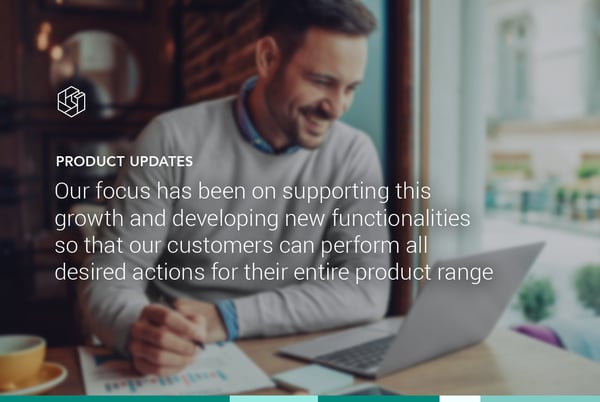
06.07.2017
Product Update: Improved Console Speed and Faster Channel Exports
After launching Omnia last year, we have been grown rapidly and already 12.5 million products run through Omnia's Dynamic Pricing and Marketing processes every hour. Our focus has been on supporting this growth and...
After launching Omnia last year, we have been grown rapidly and already 12.5 million products run through Omnia's Dynamic Pricing and Marketing processes every hour. Our focus has been on supporting this growth and developing new functionalities so that our customers can perform all desired actions for their entire product range. However, the combination of this rapid growth in both functionalities and products has caused some processes to take longer than might be expected. That's why we've spent a lot of time accelerating various screens and processes within Omnia over the last 2 months. Most likely you have already noticed the speed improvement in the console, but we would also like to inform you via this newsletter about improvements in 3 other area's. 1. Loading times console screens To our great satisfaction, all settings in Omnia are used quite extensively. So much so, however that sometimes more than a 100 marketing channels, field-mappings and/or pricing strategies are entered into Omnia, by one givin retailer. To ensure that the screens keep functioning properly with all these settings, we have greatly accelerated the load times of the screens below. This allows you to quickly navigate through the screens and adjust settings instantly and easily. Screens with improved load times: Marketing Channels & Reports overview Mapping of all fields in the three different sections: Connect > Import Mapping Marketing > Channels > Mapping Reports > Mapping Pricing > Settings > Strategies Pricing > Settings > Actions 2. Speed of running marketing channels and reports When updating marketing channels and reports, the update sometimes had to wait in line for other processes to finish. Consequently, it could take quite long before the channel was updated and one could verify the new settings. In order to provide faster feedback on manual changes, we have given priority to the export channels that are run manually. The export starts to update immediately after clicking the "run now" button and after a few moments, the exports can be checked, modified if needed, and re-run. 3. Pricewatch exports are finished earlier Due to the ever-increasing number of unique products in Omnia, we need to collect more and more price data from our data partners. Together with our various data partners we have been able to speed up these data connections. In addition, the data processing within Omnia has been optimized and the processing power is further expanded. The result: tens of millions of competitor prices are delivered well within the agreed times! We hope that these speed improvements will make working within Omnia even easier and more effective. Feel free to contact us if you have any more questions, by email (info@omniaretail.com) or call +31 (0) 35 699 02 22.
Product Update: Improved Console Speed and Faster Channel ExportsSign up to be the first to get information from Omnia.
Sign up now